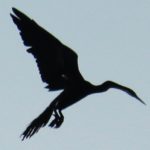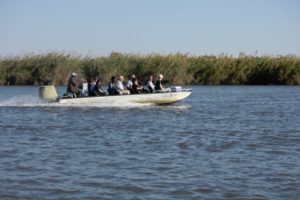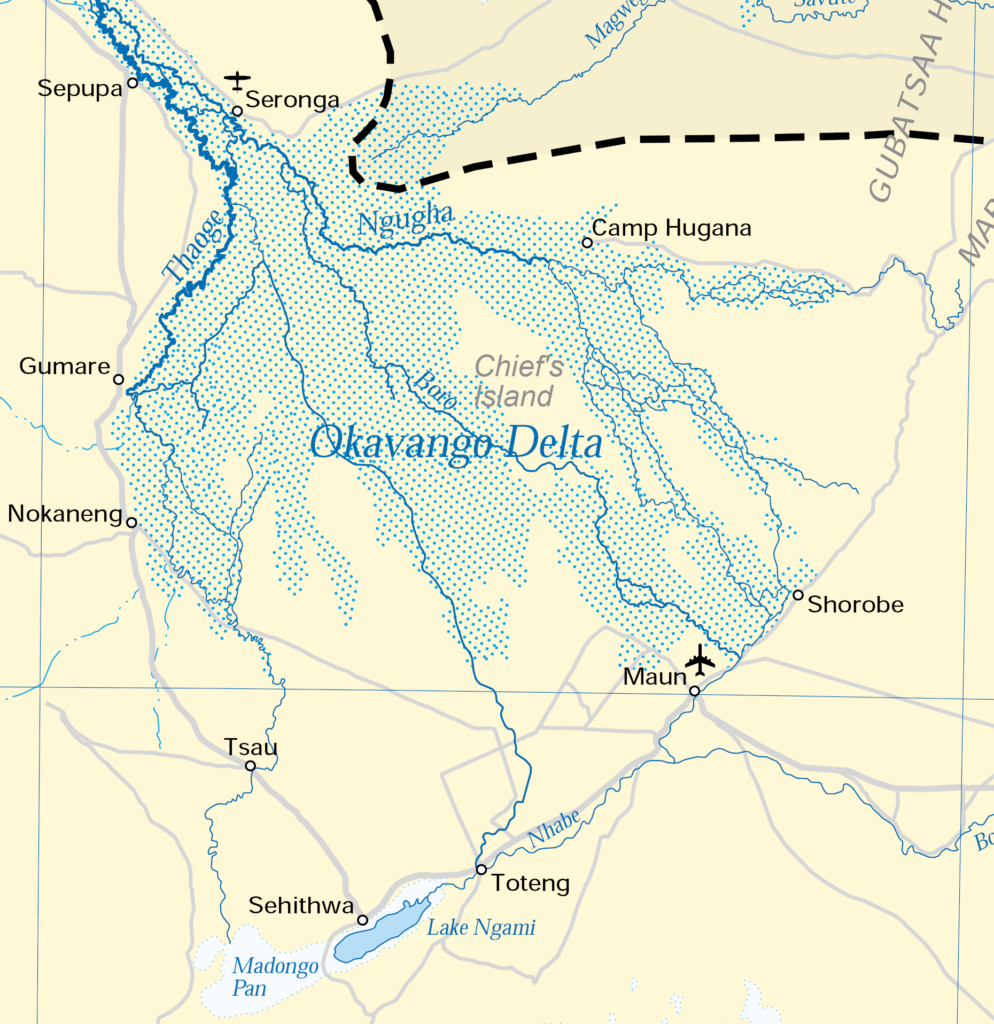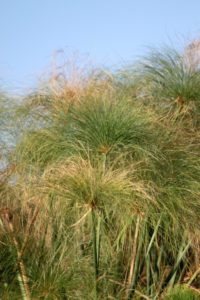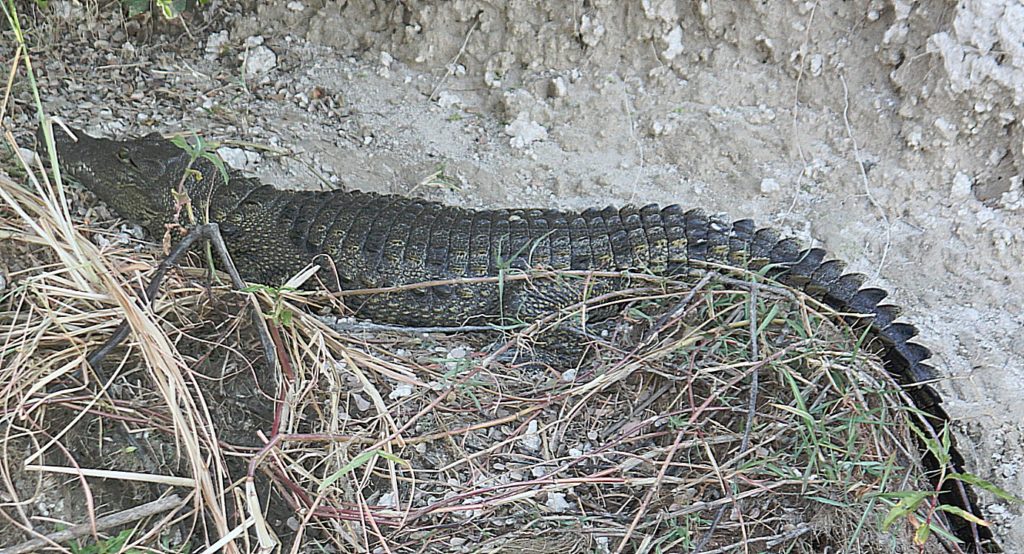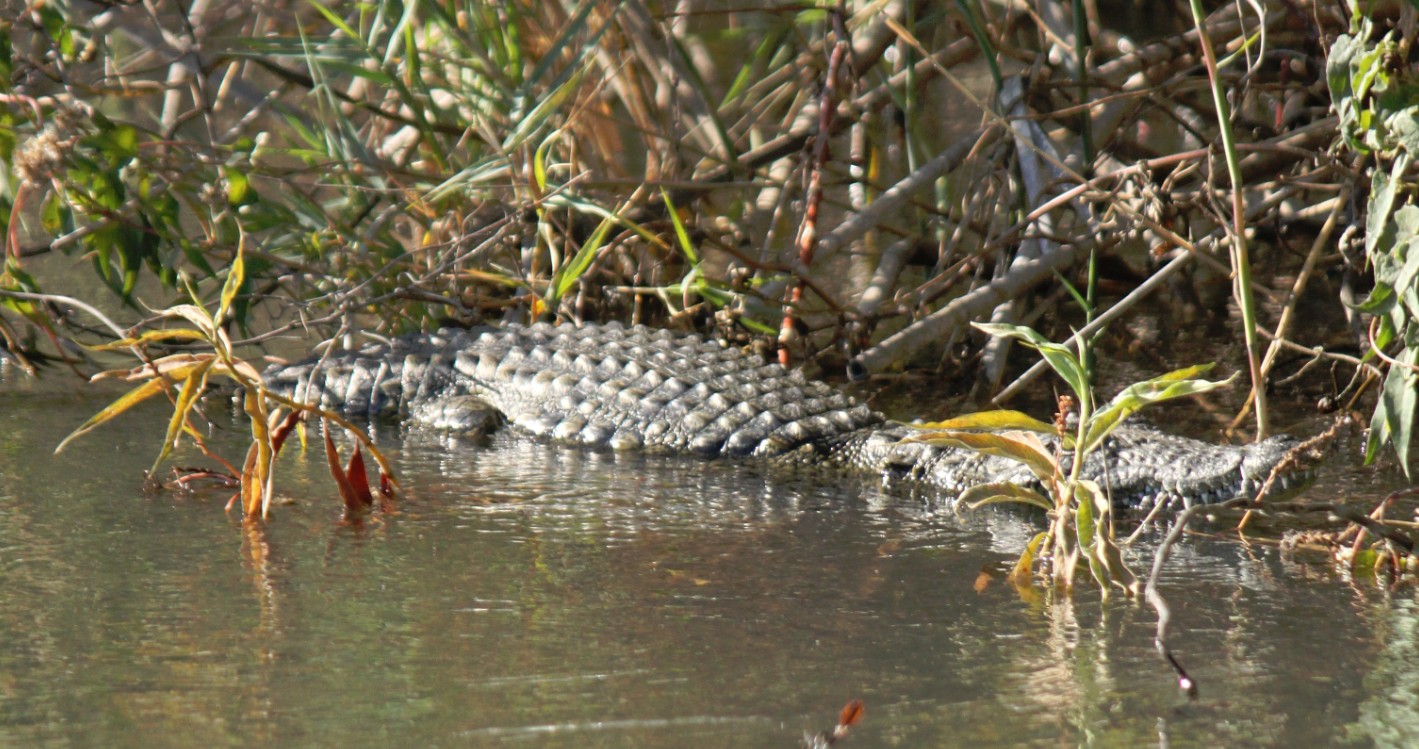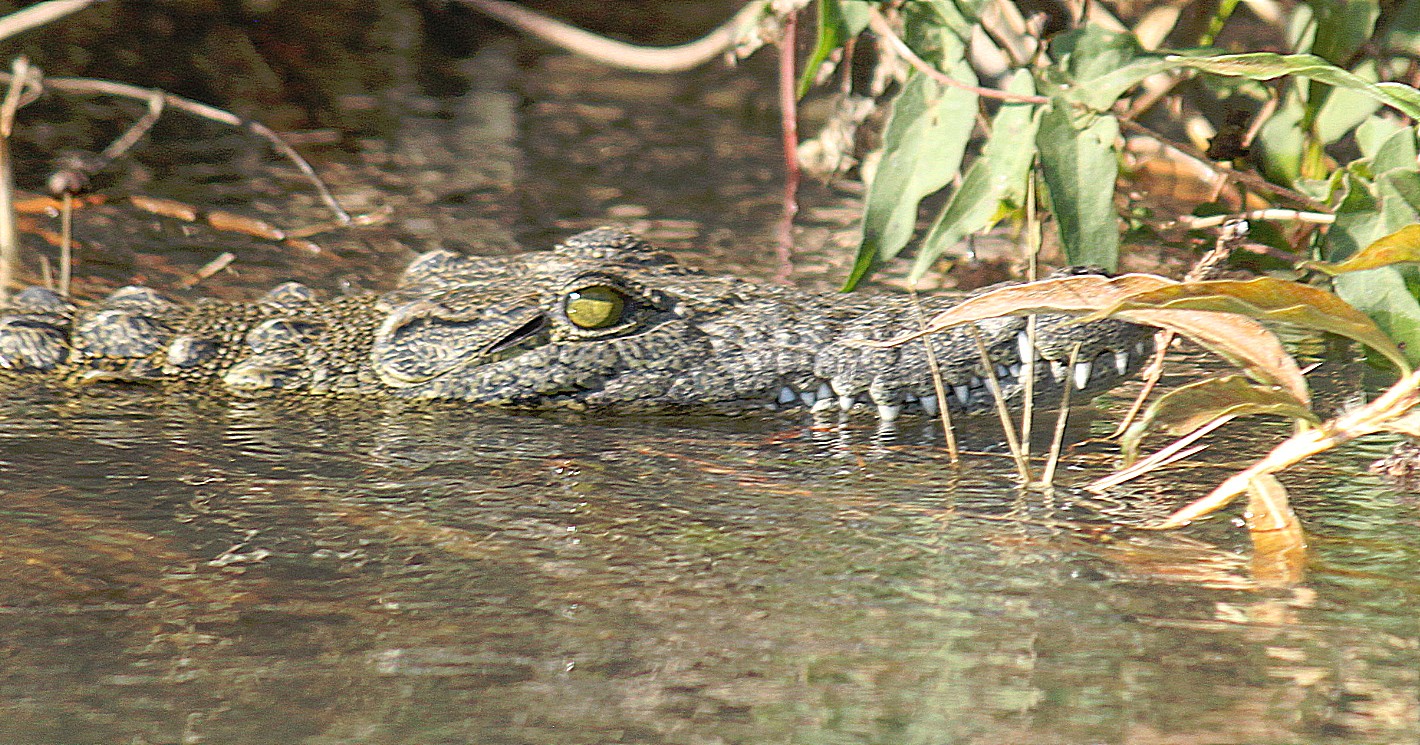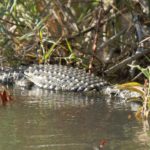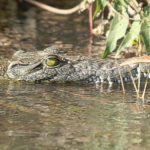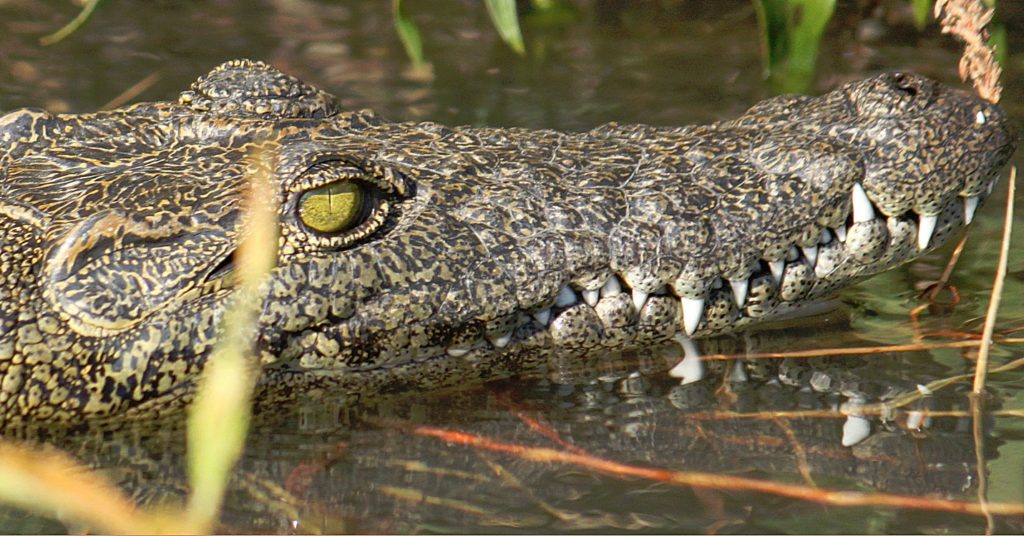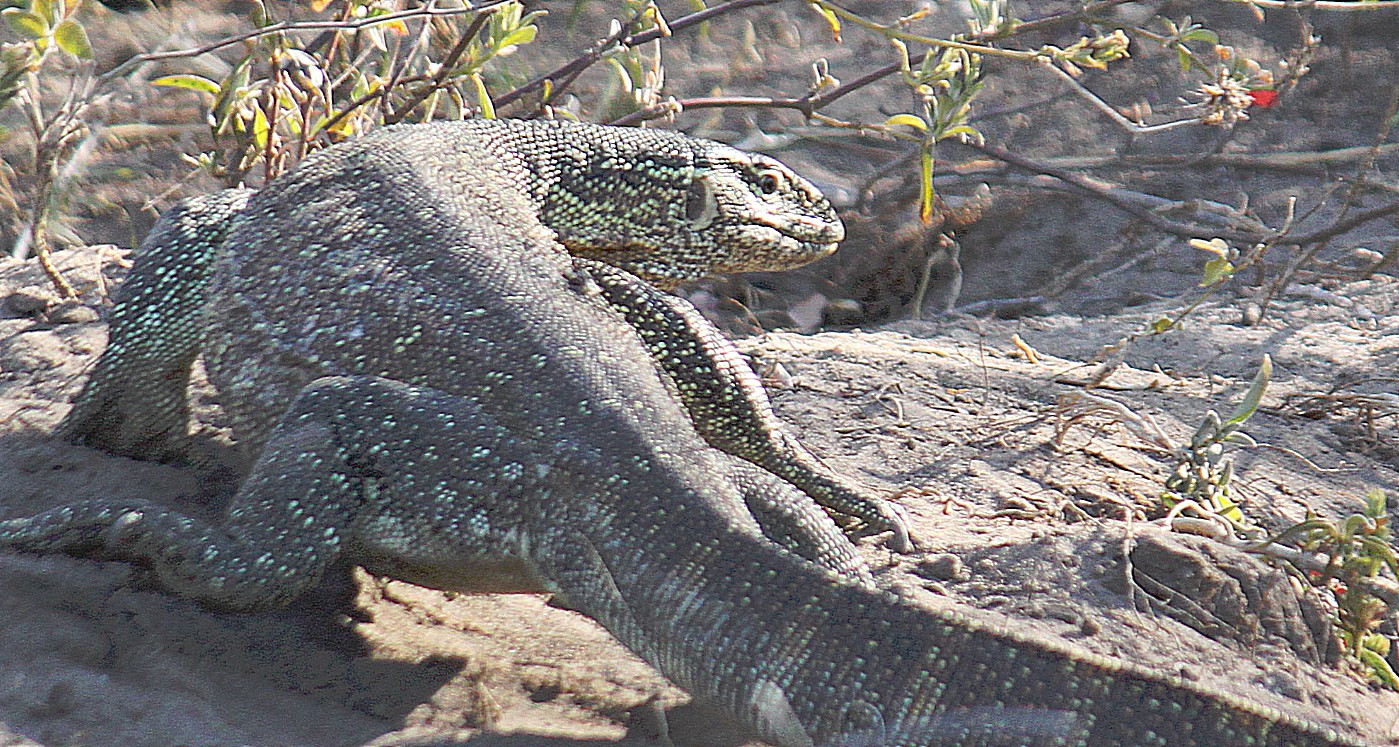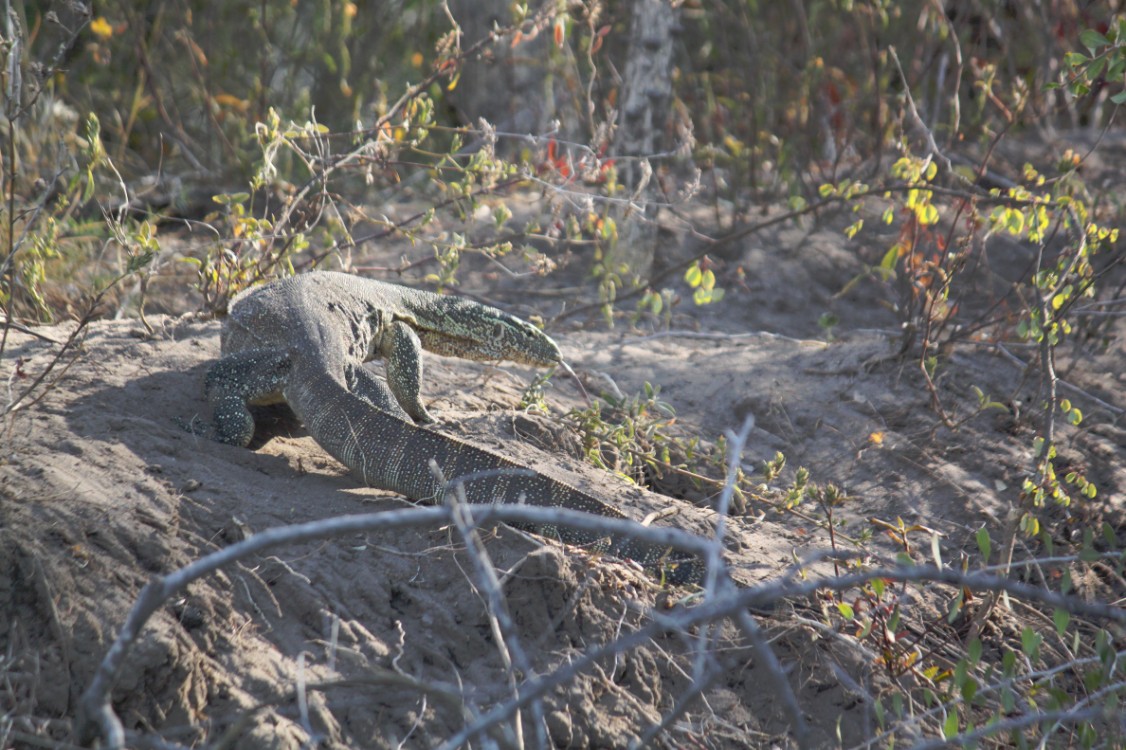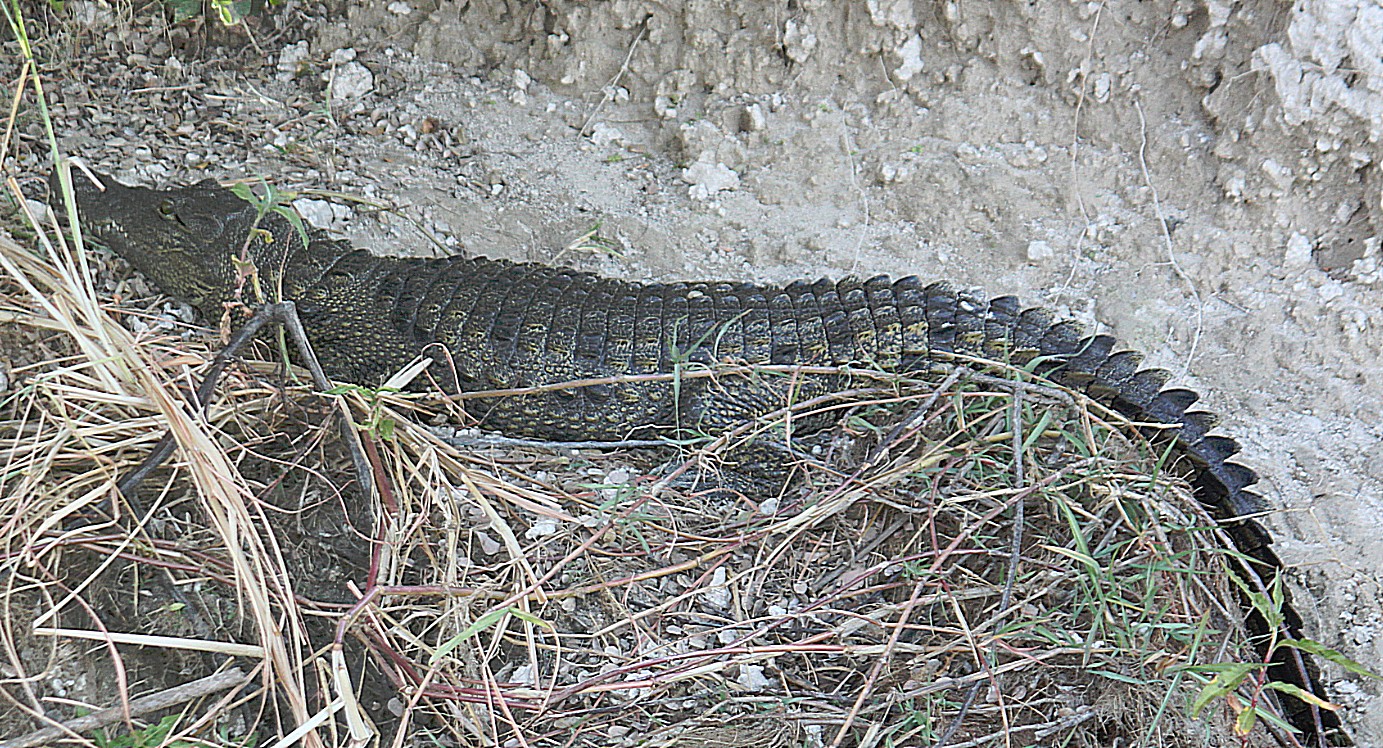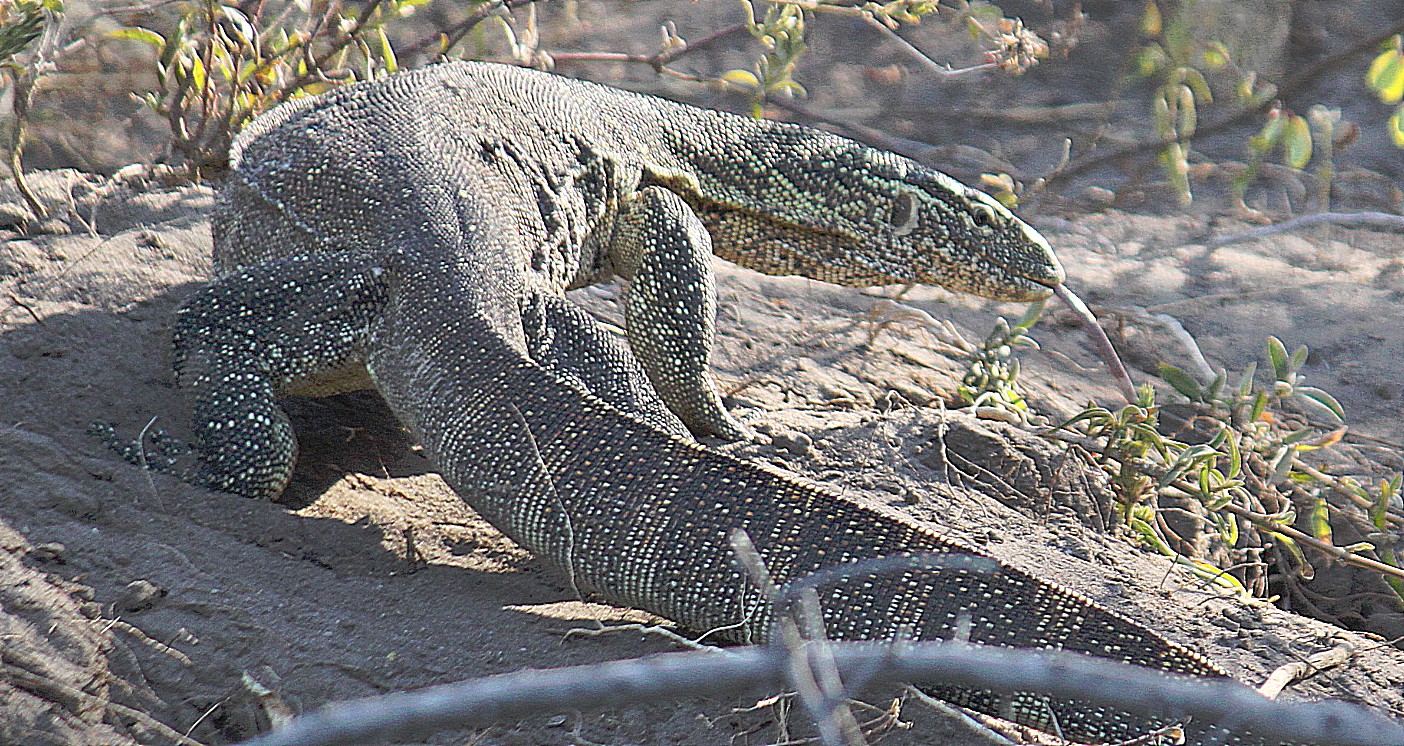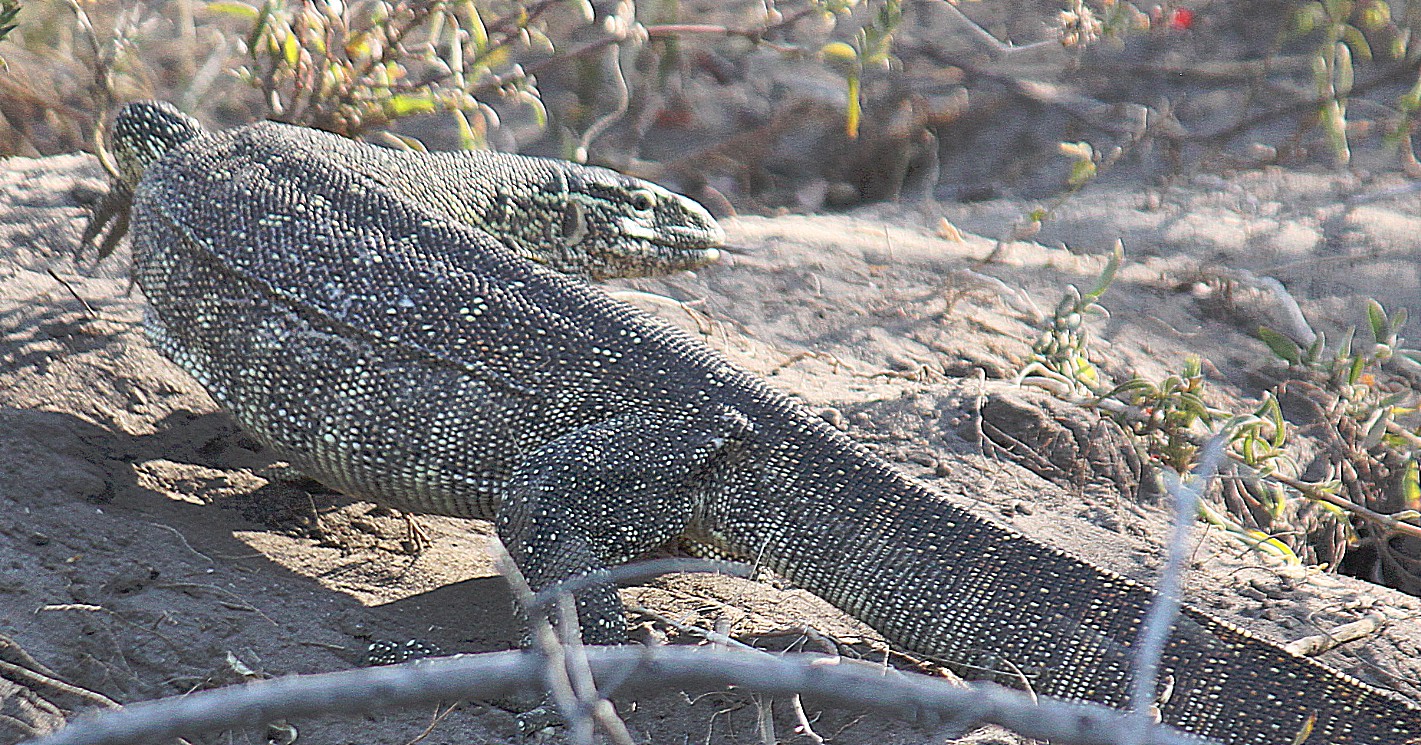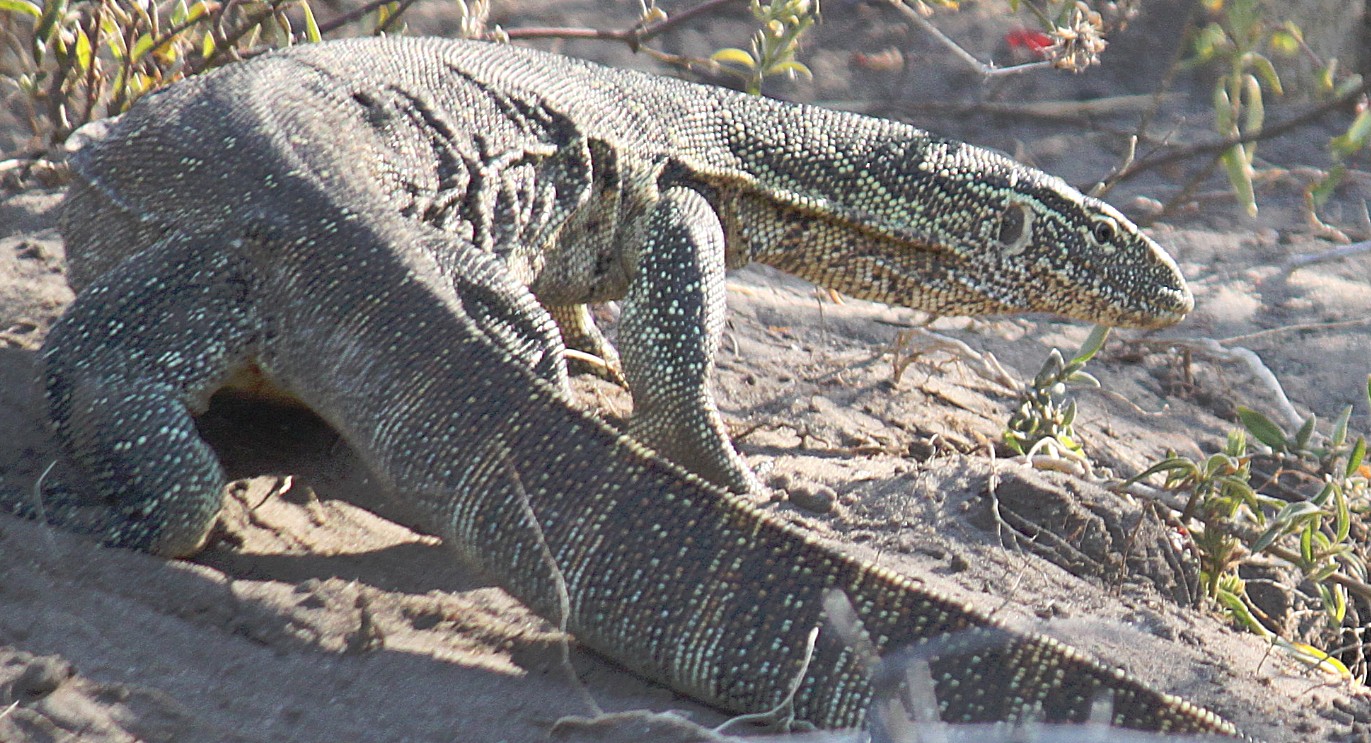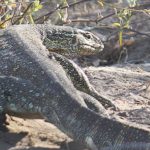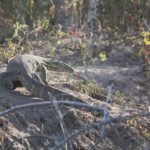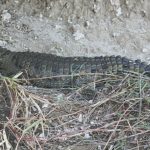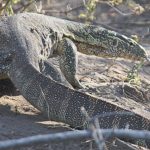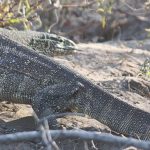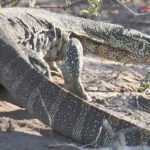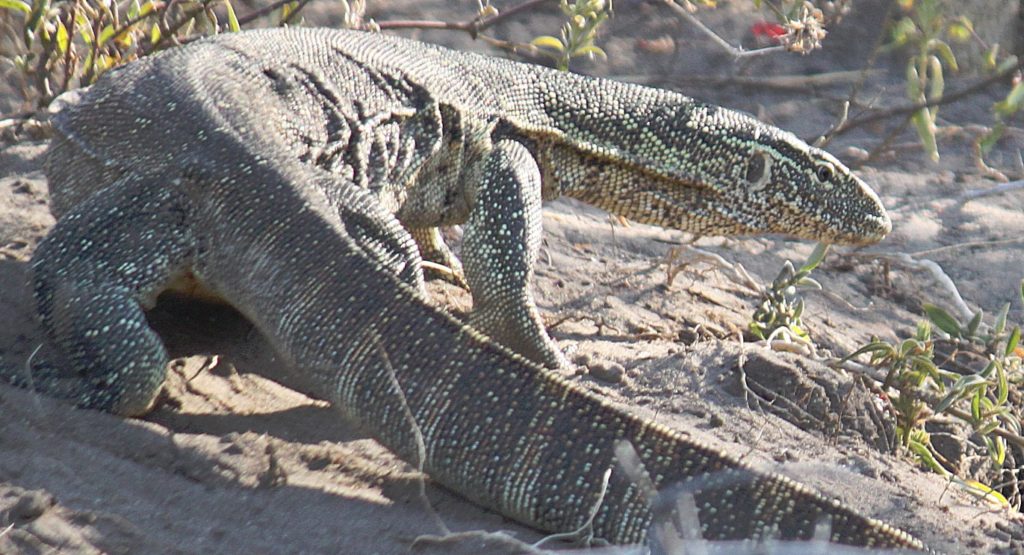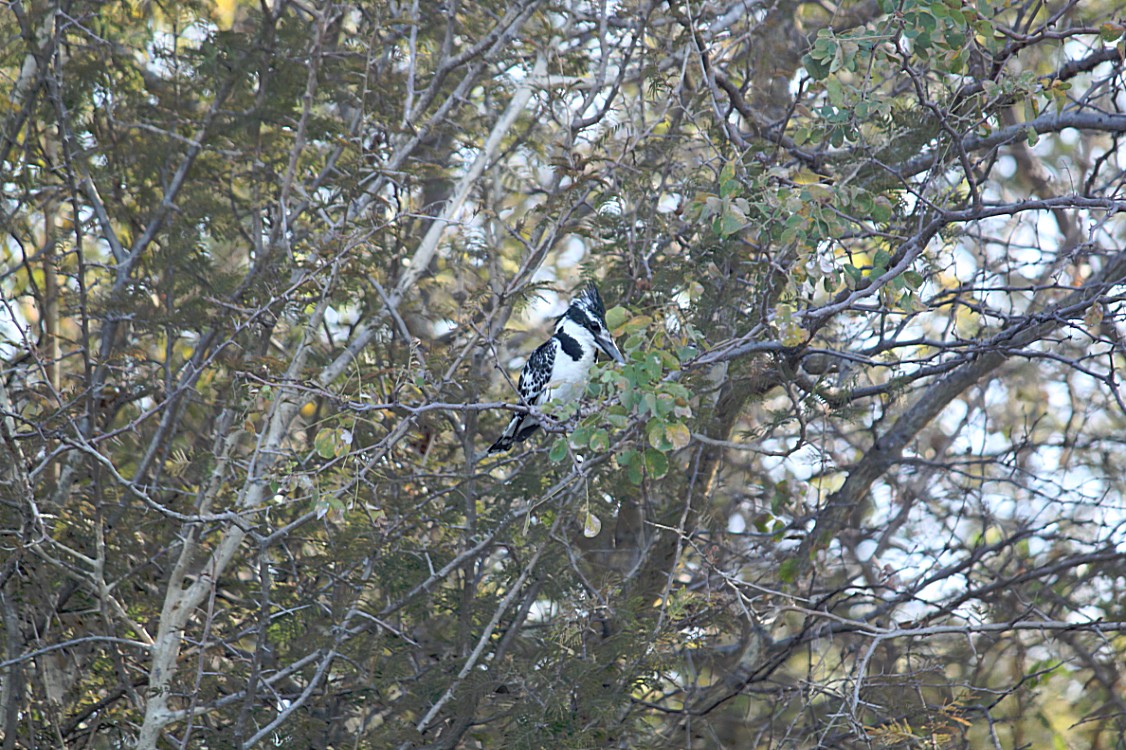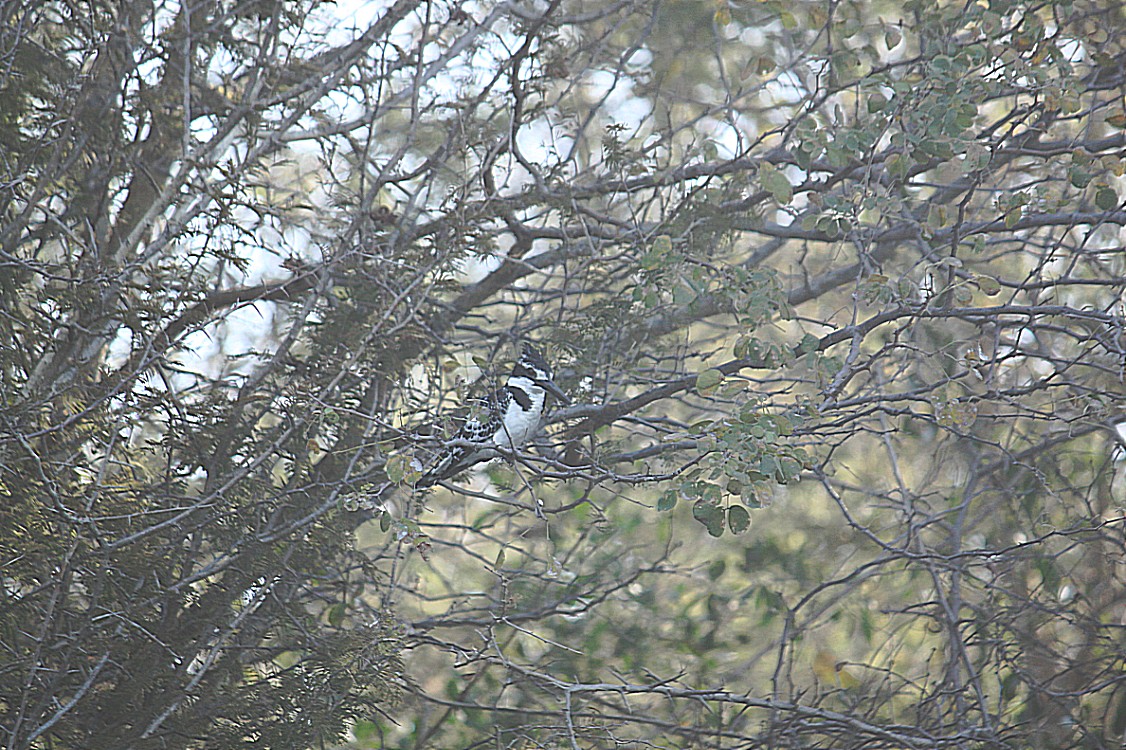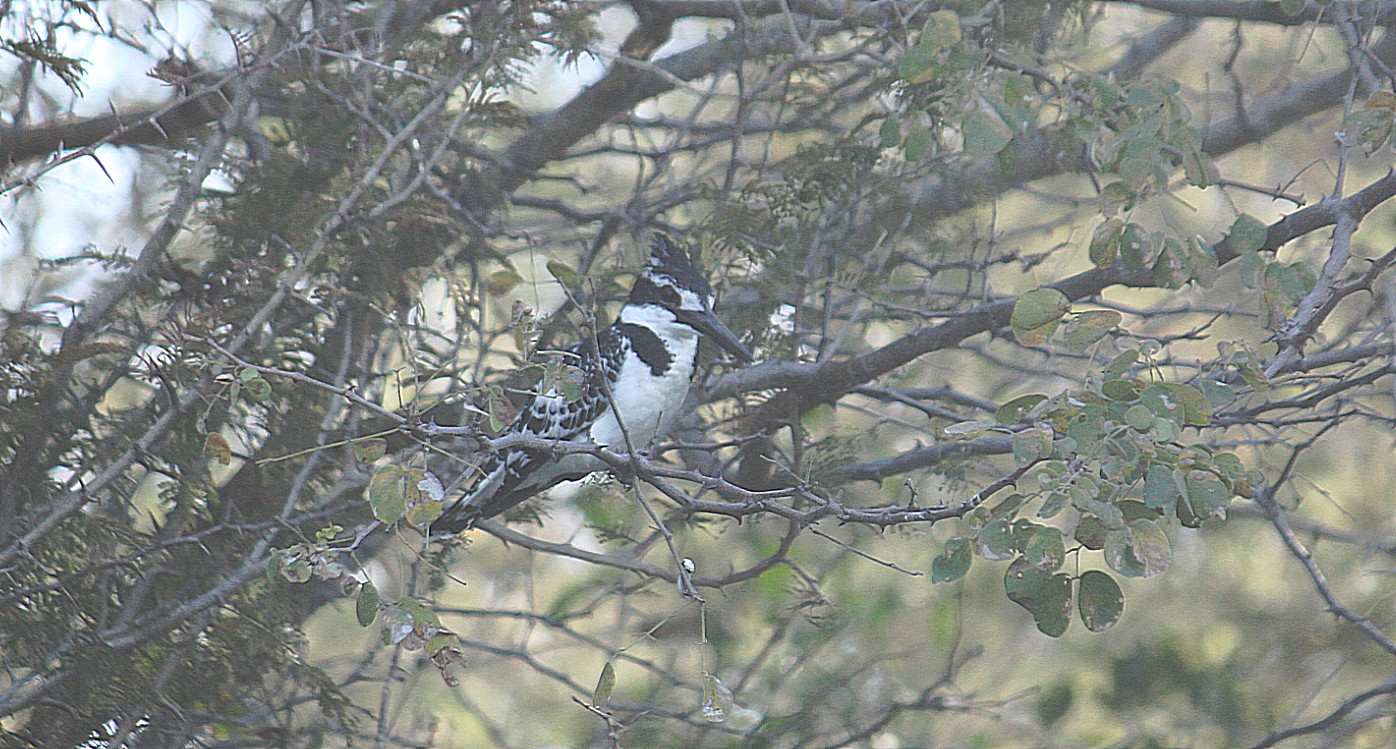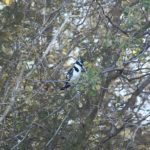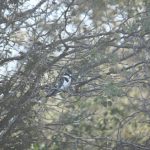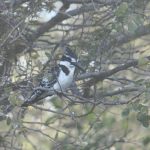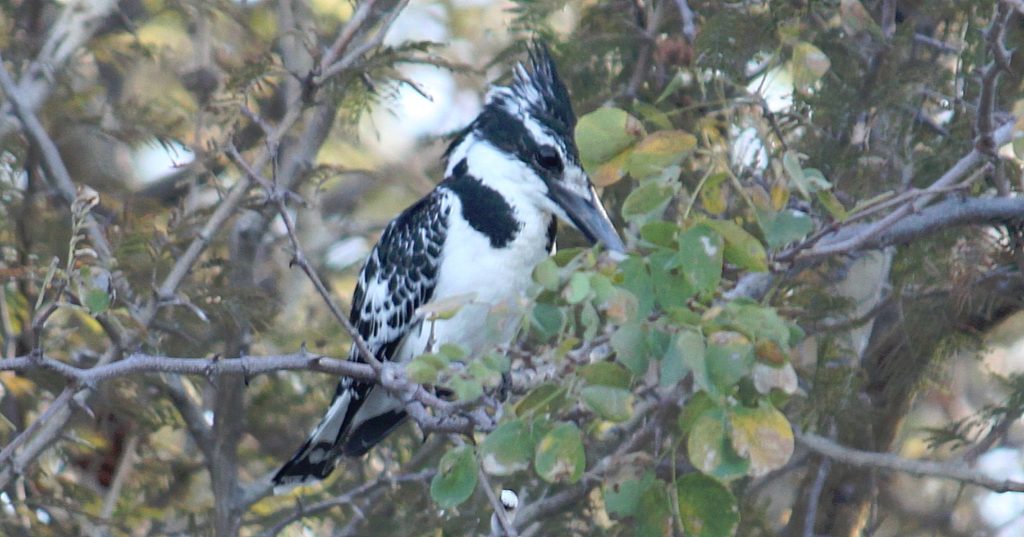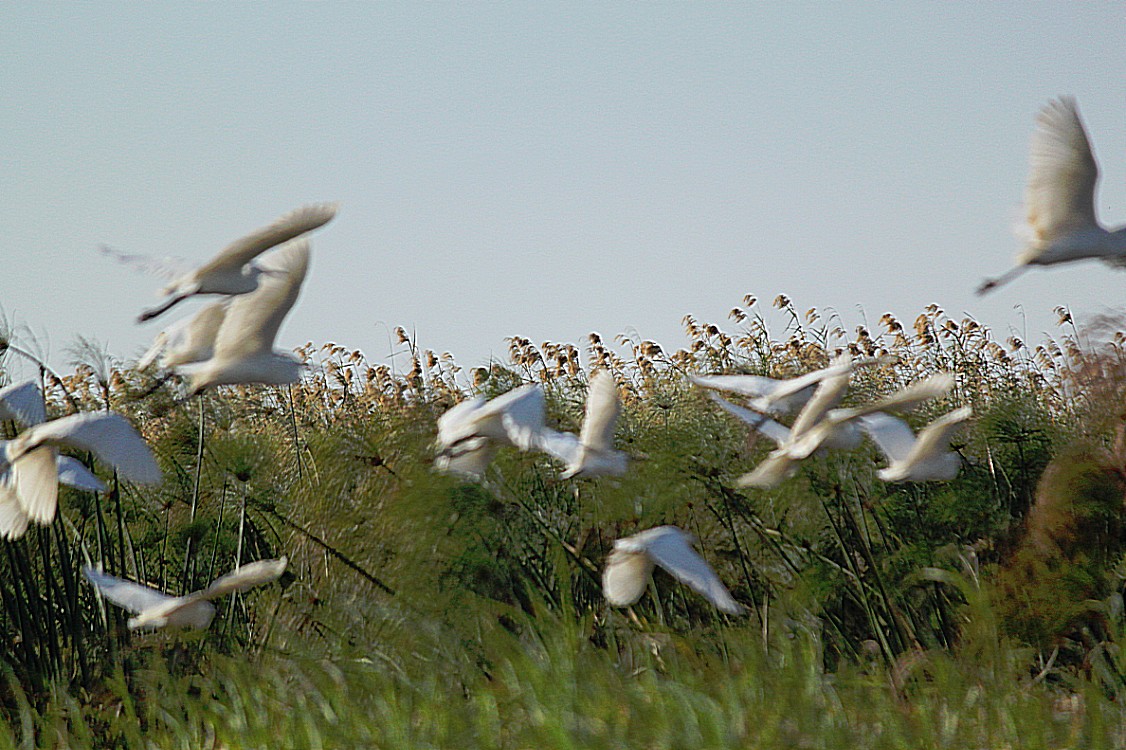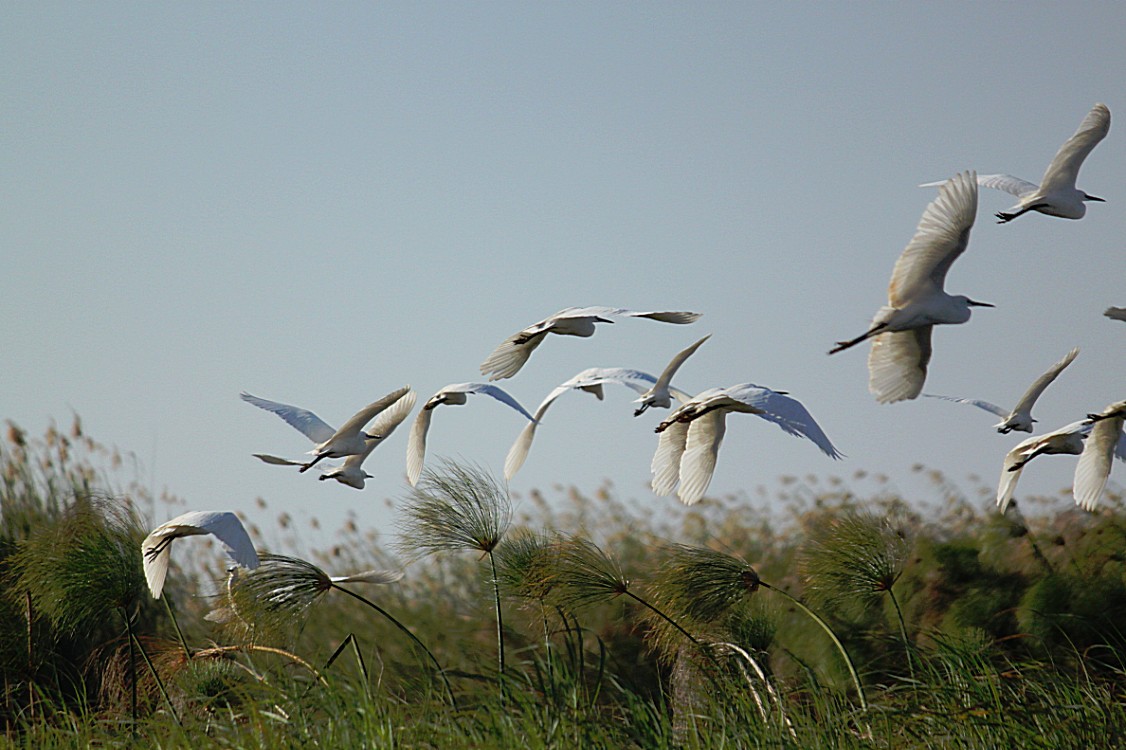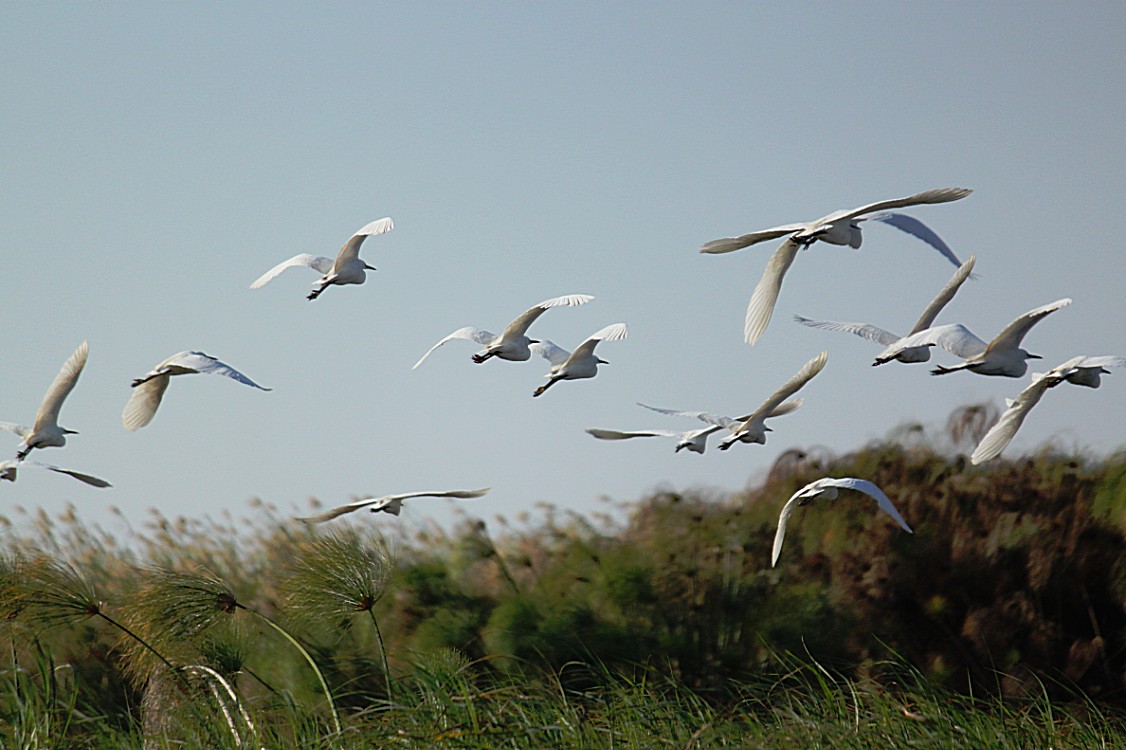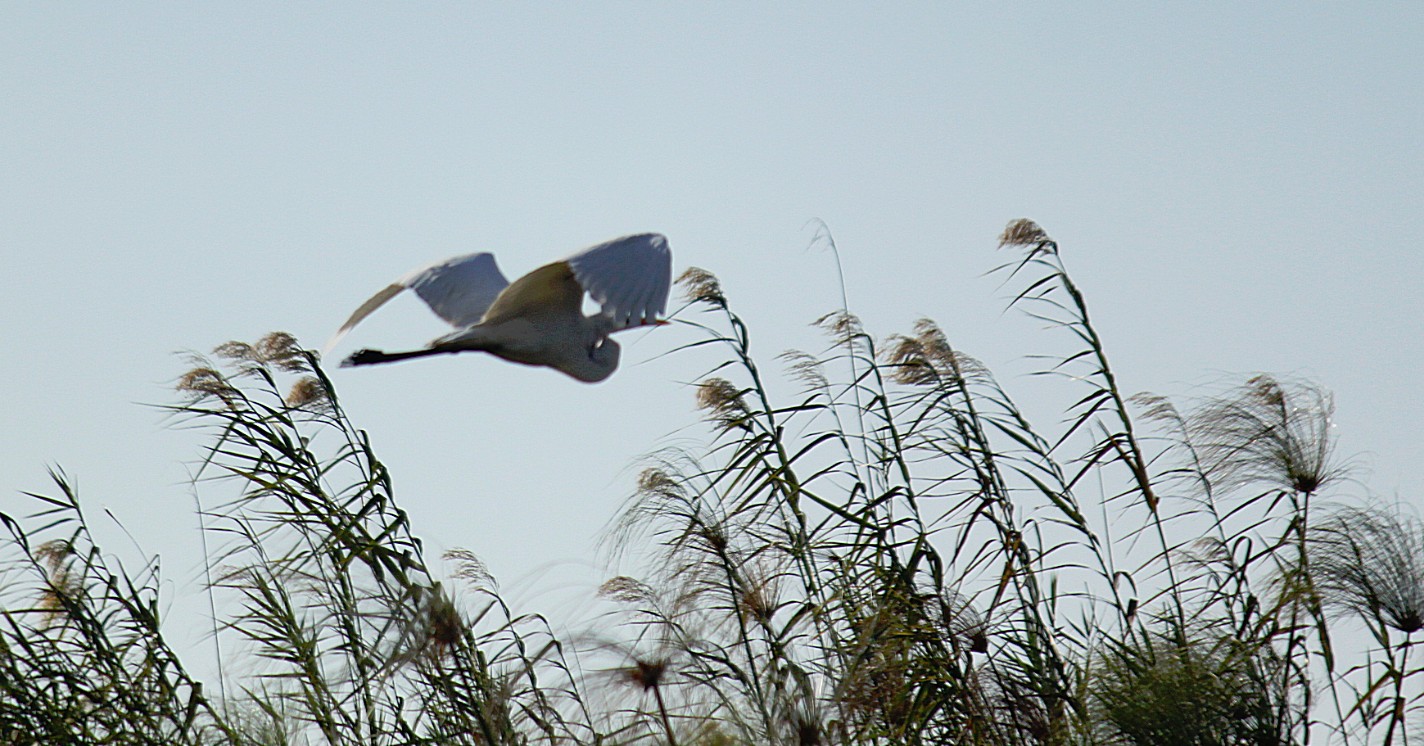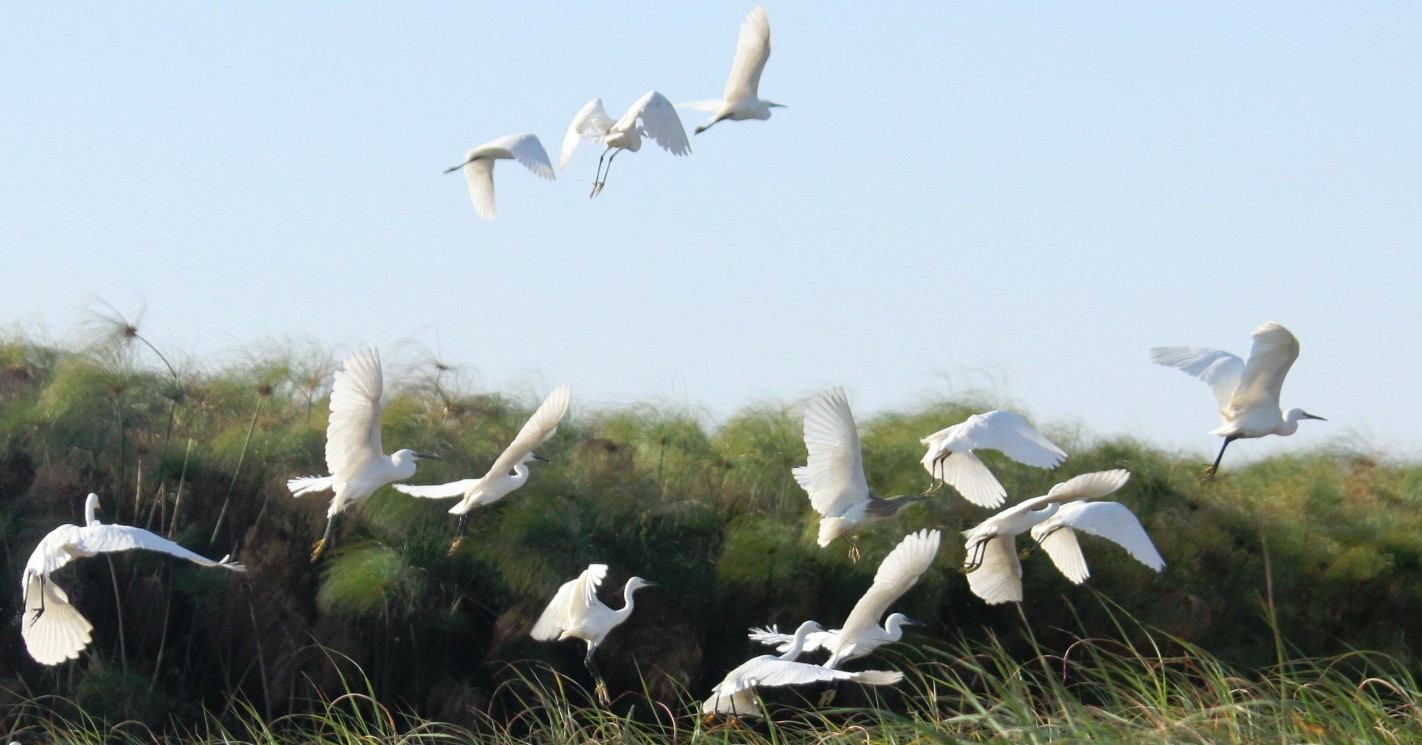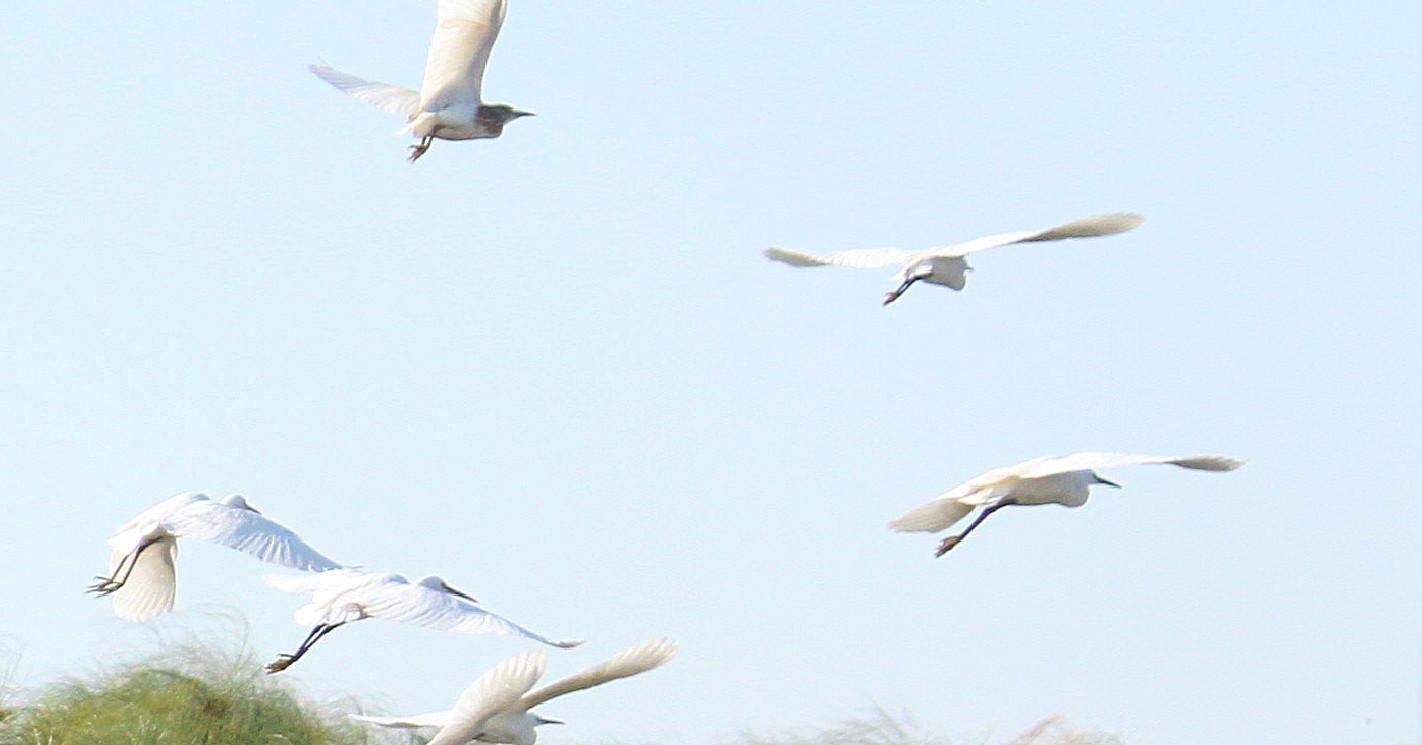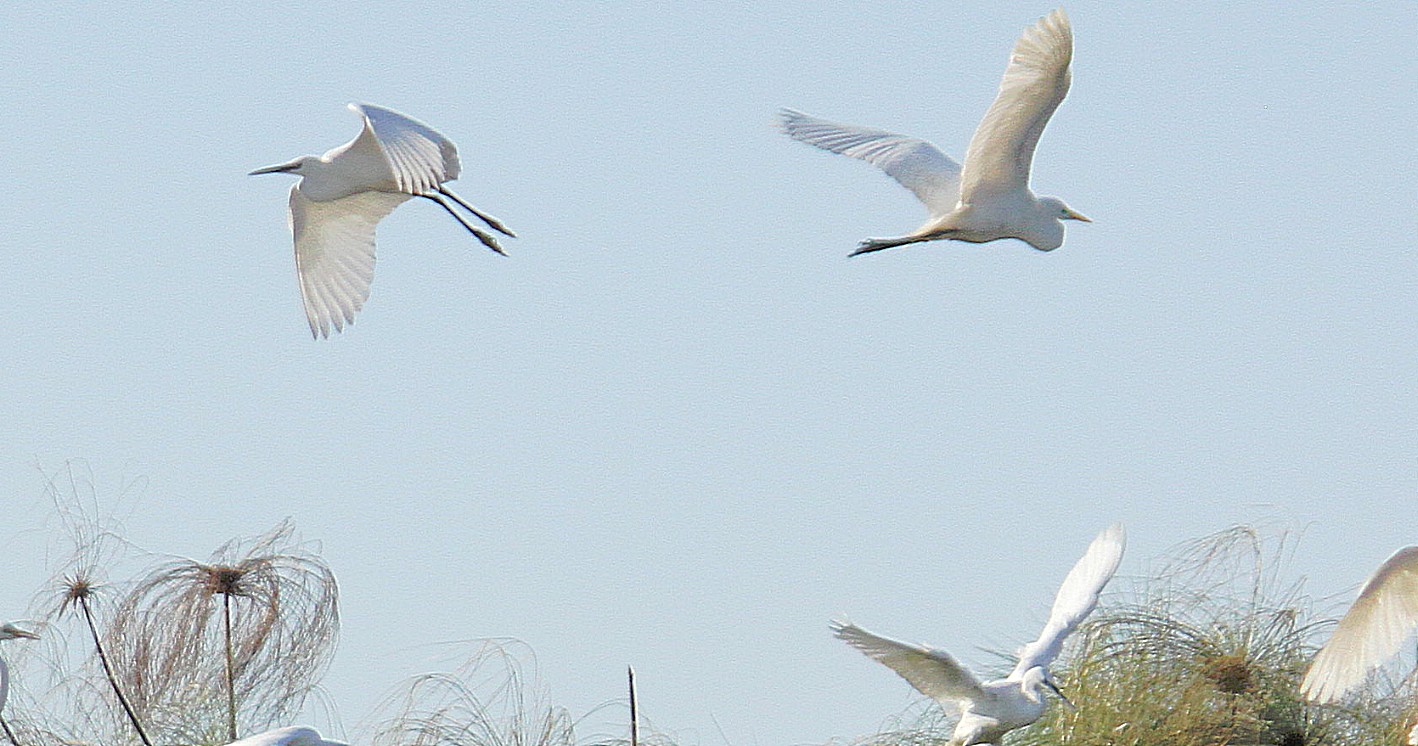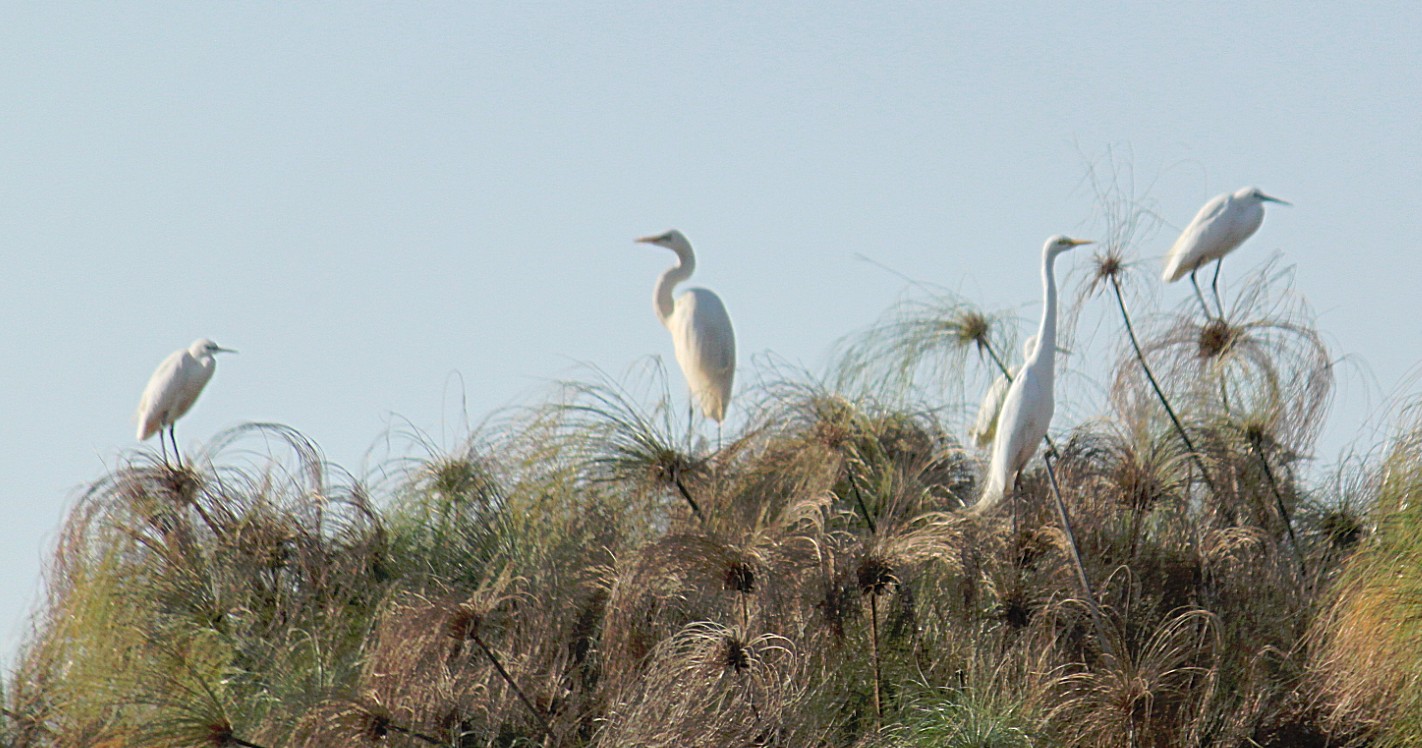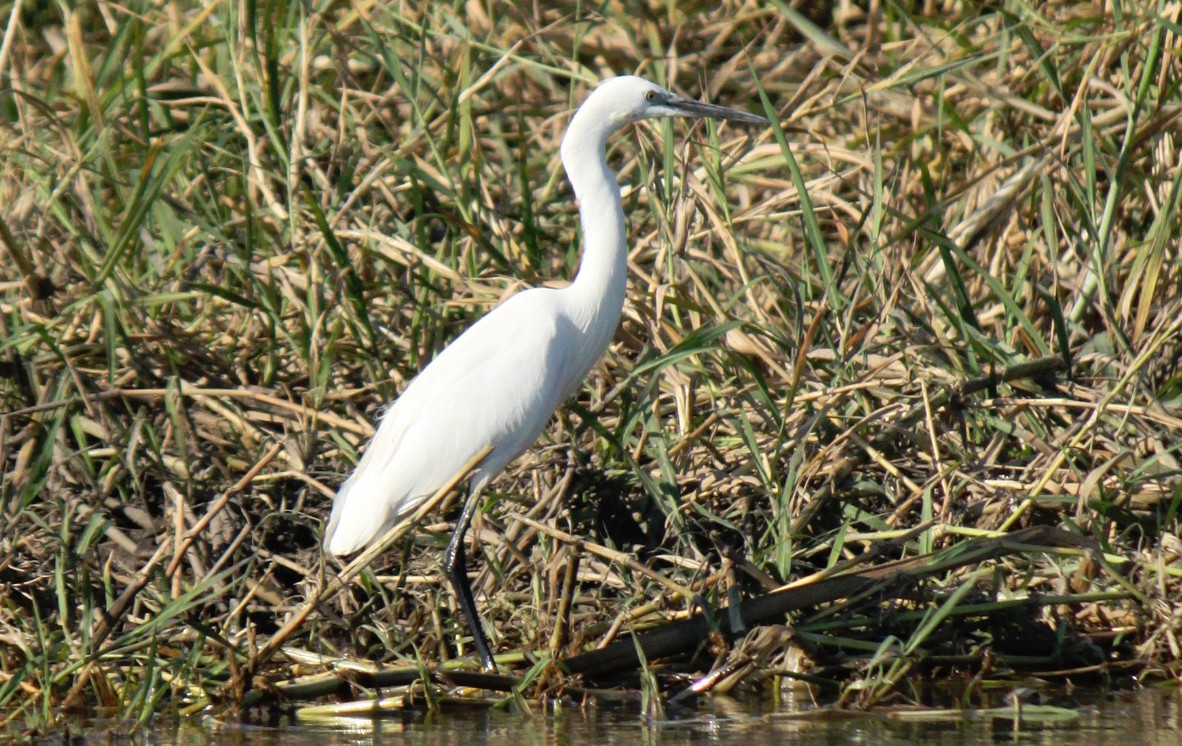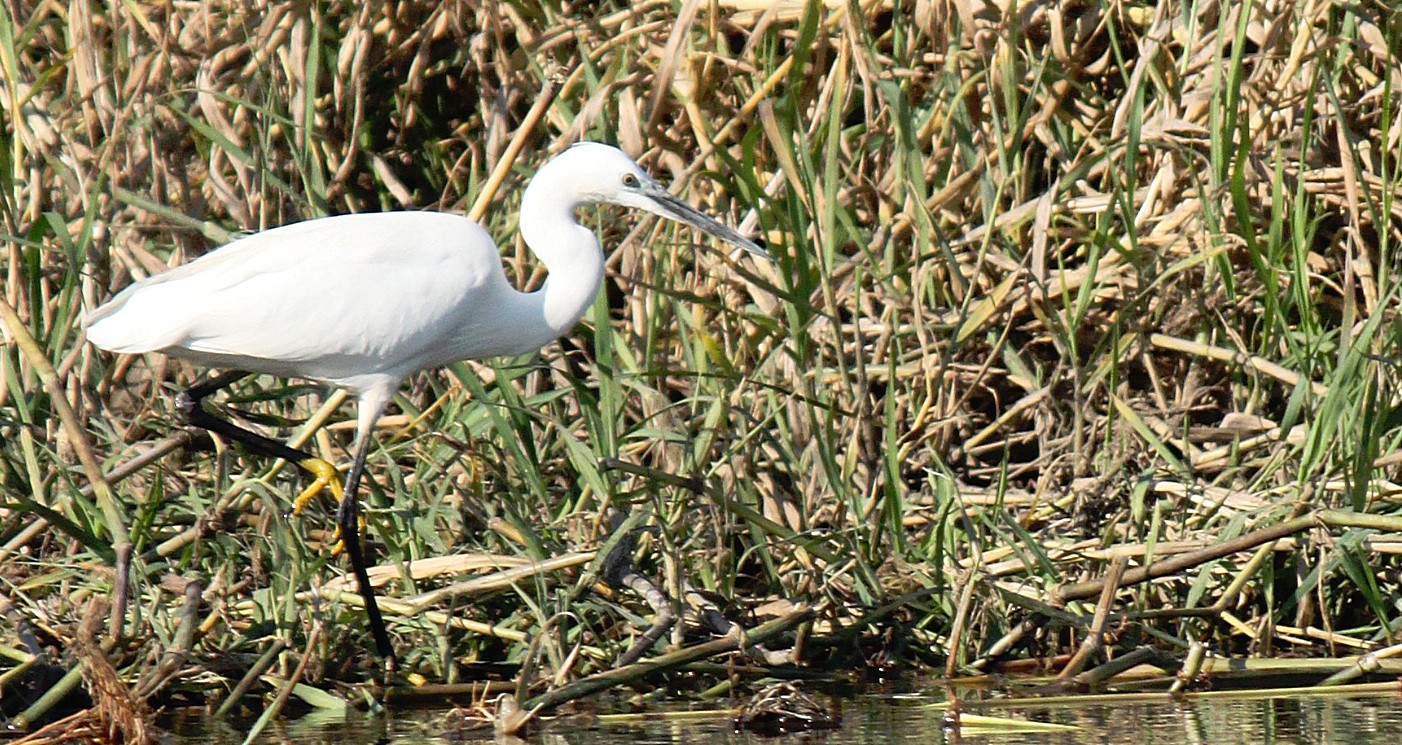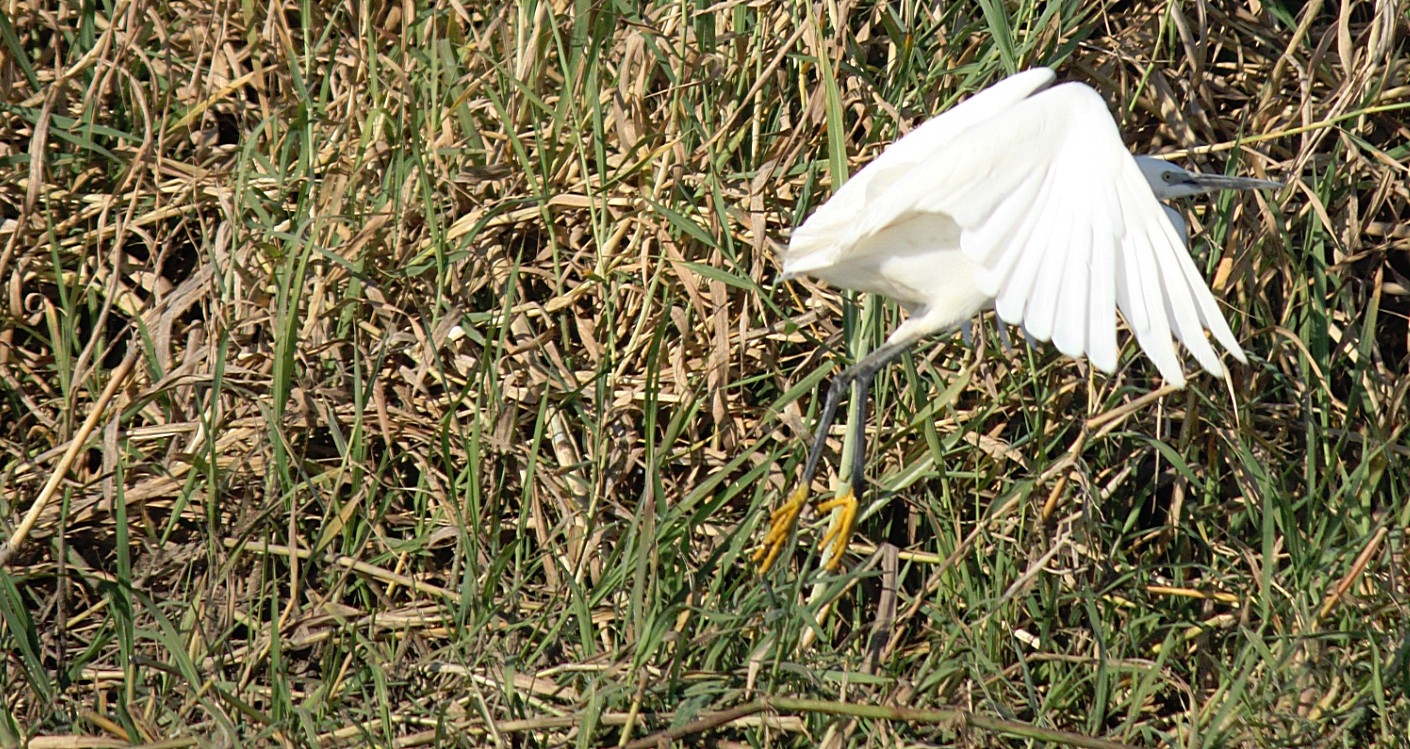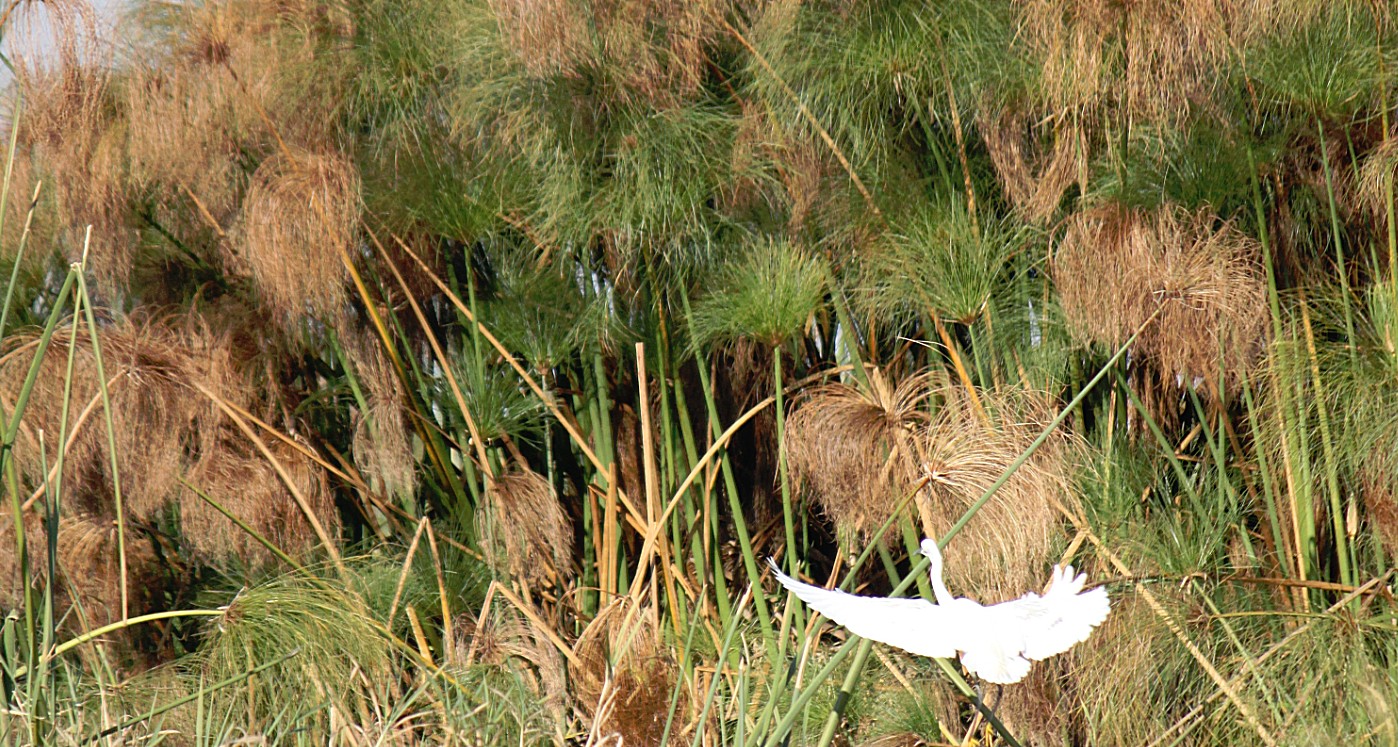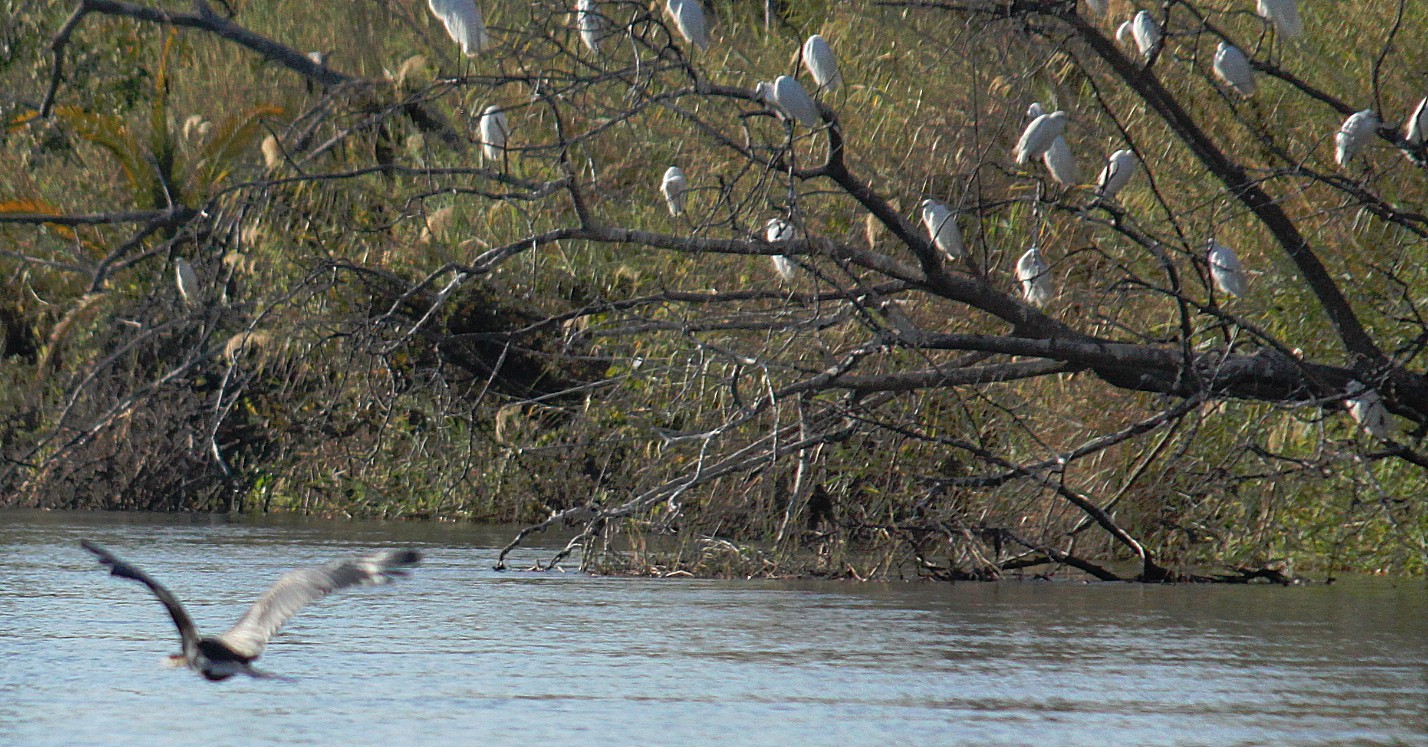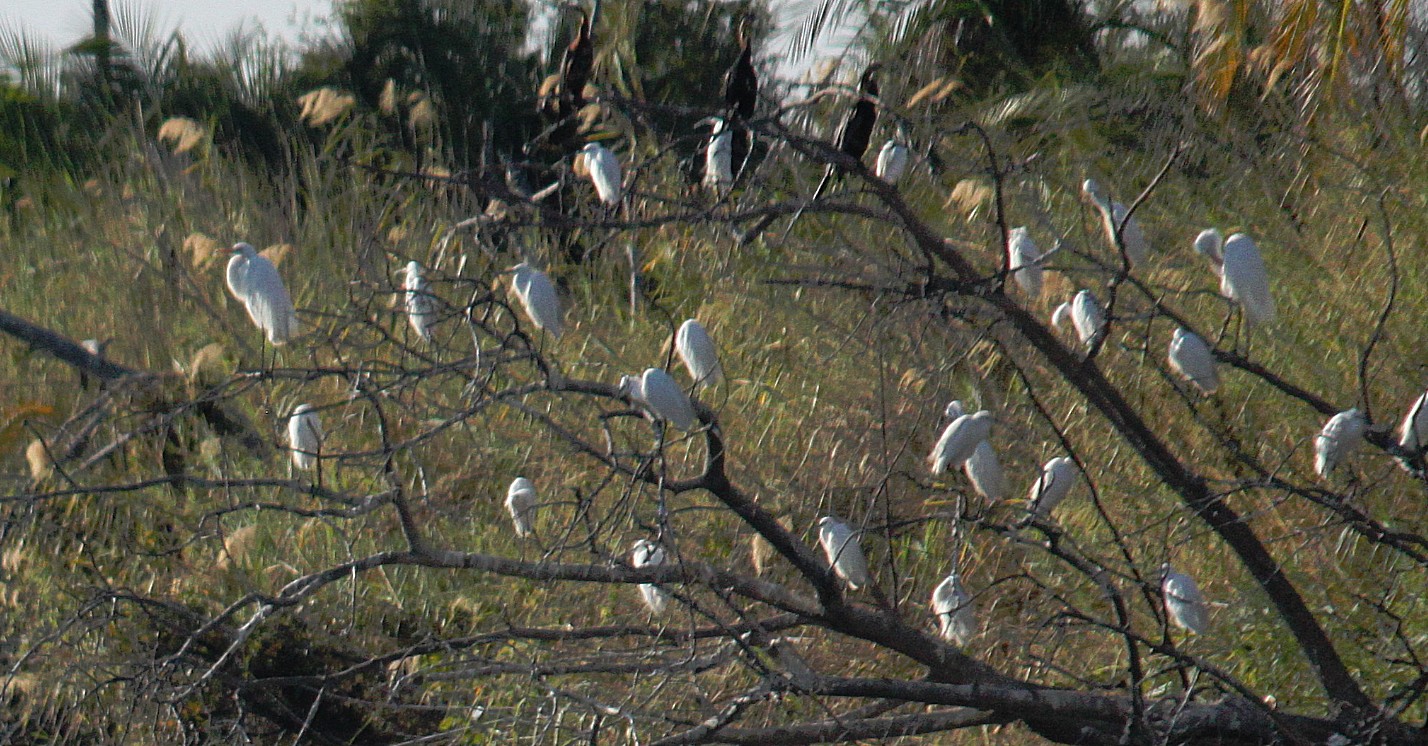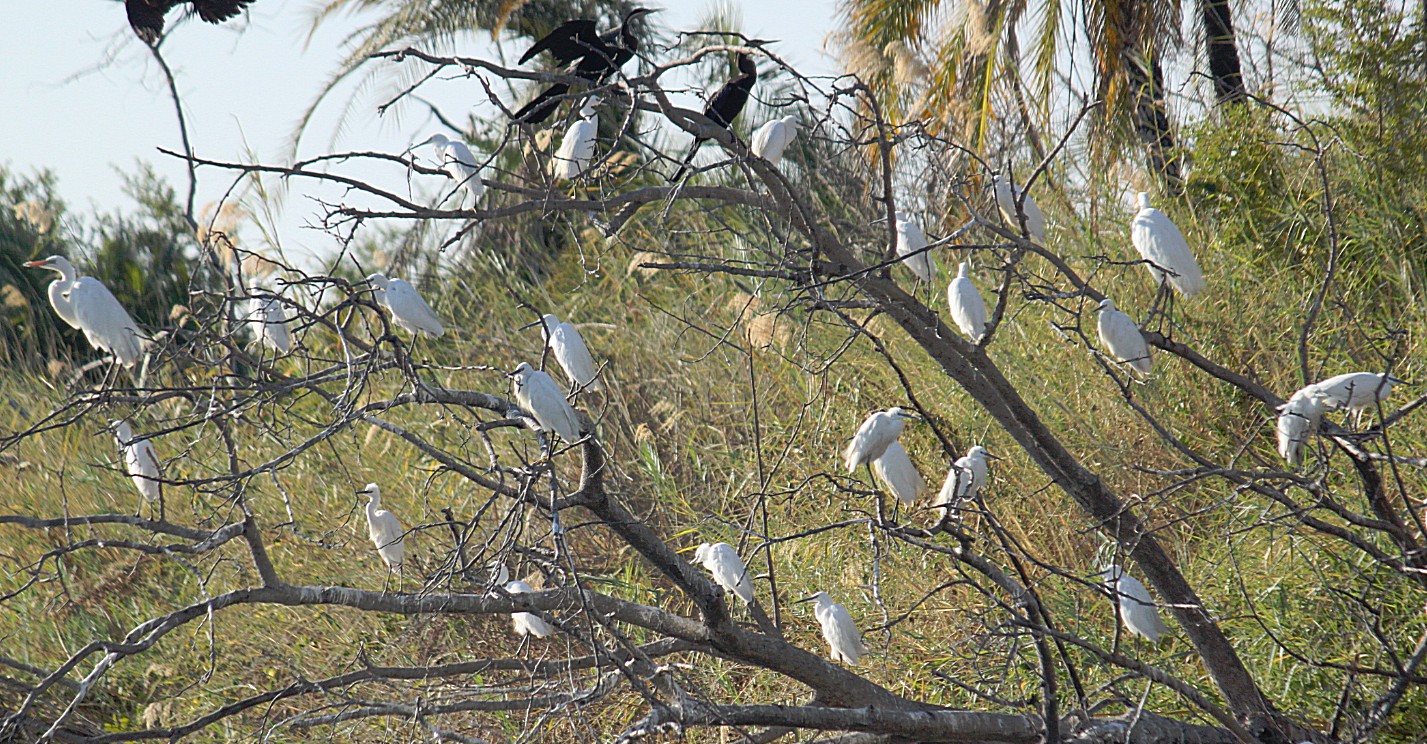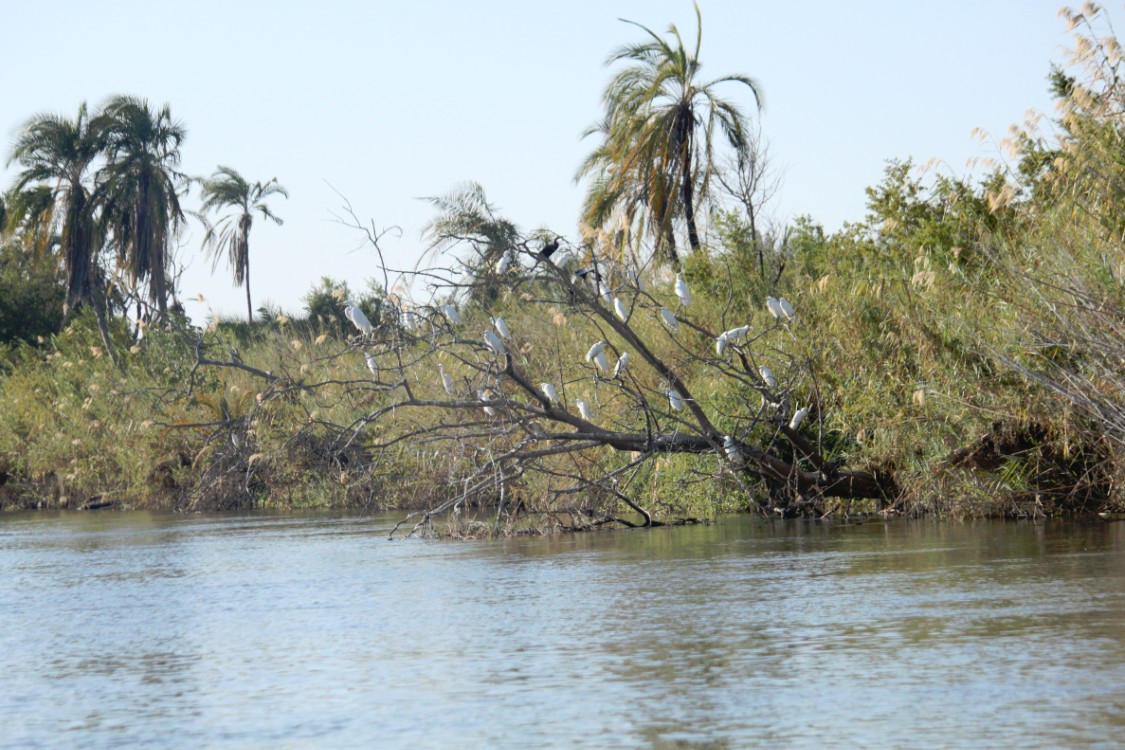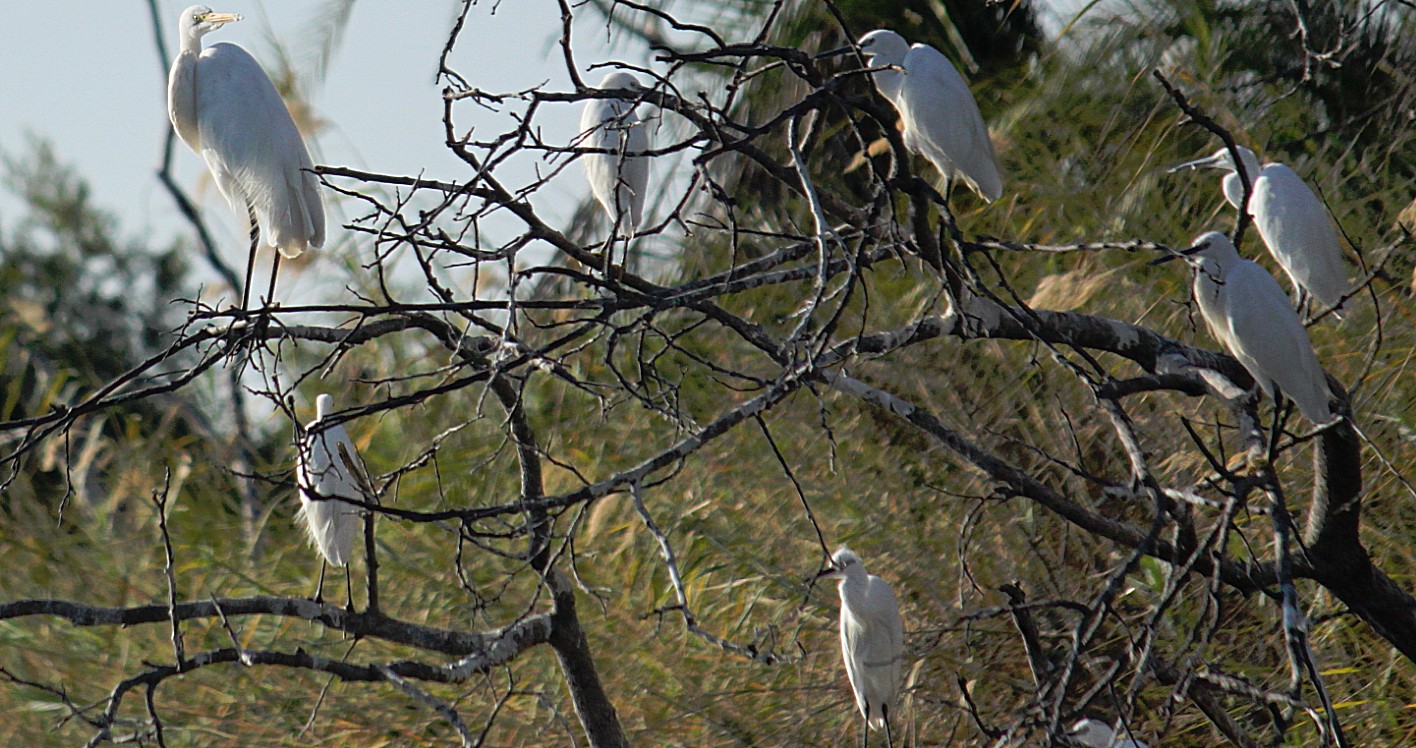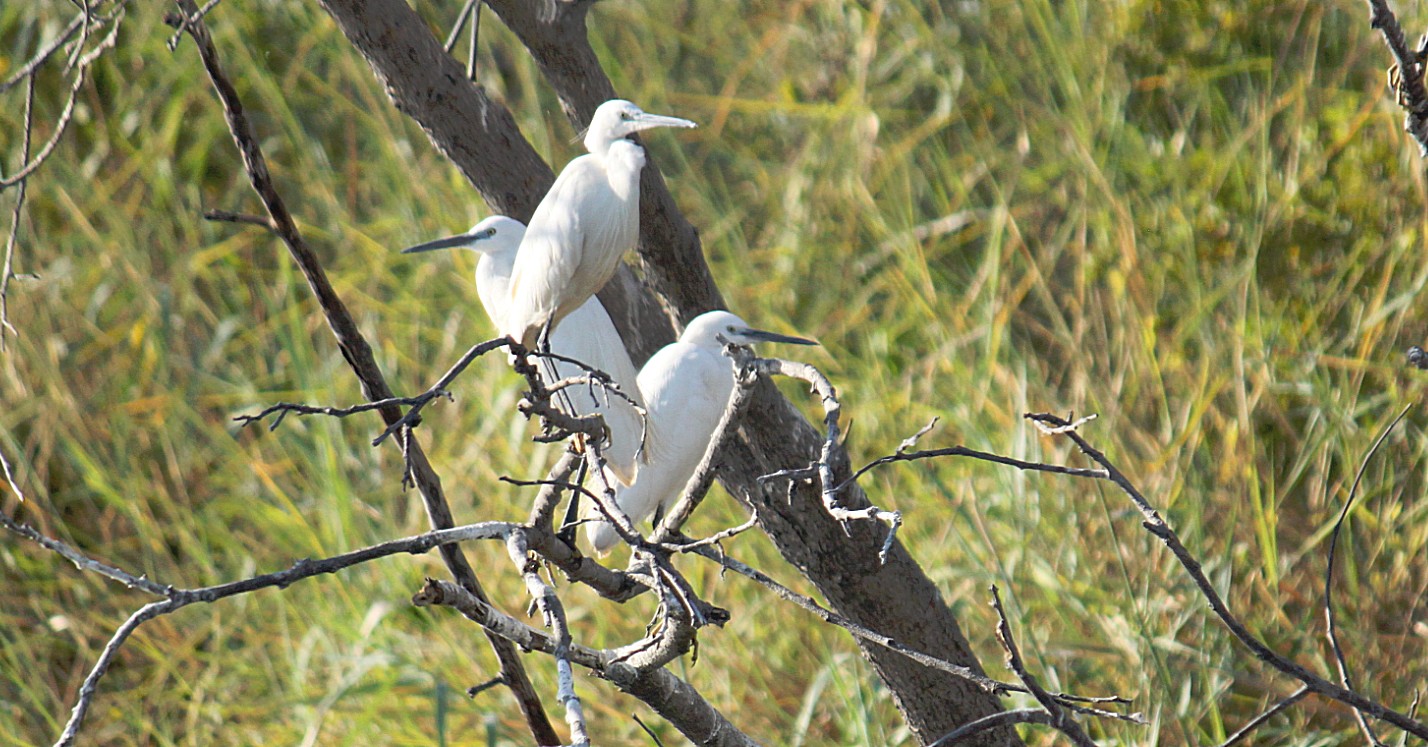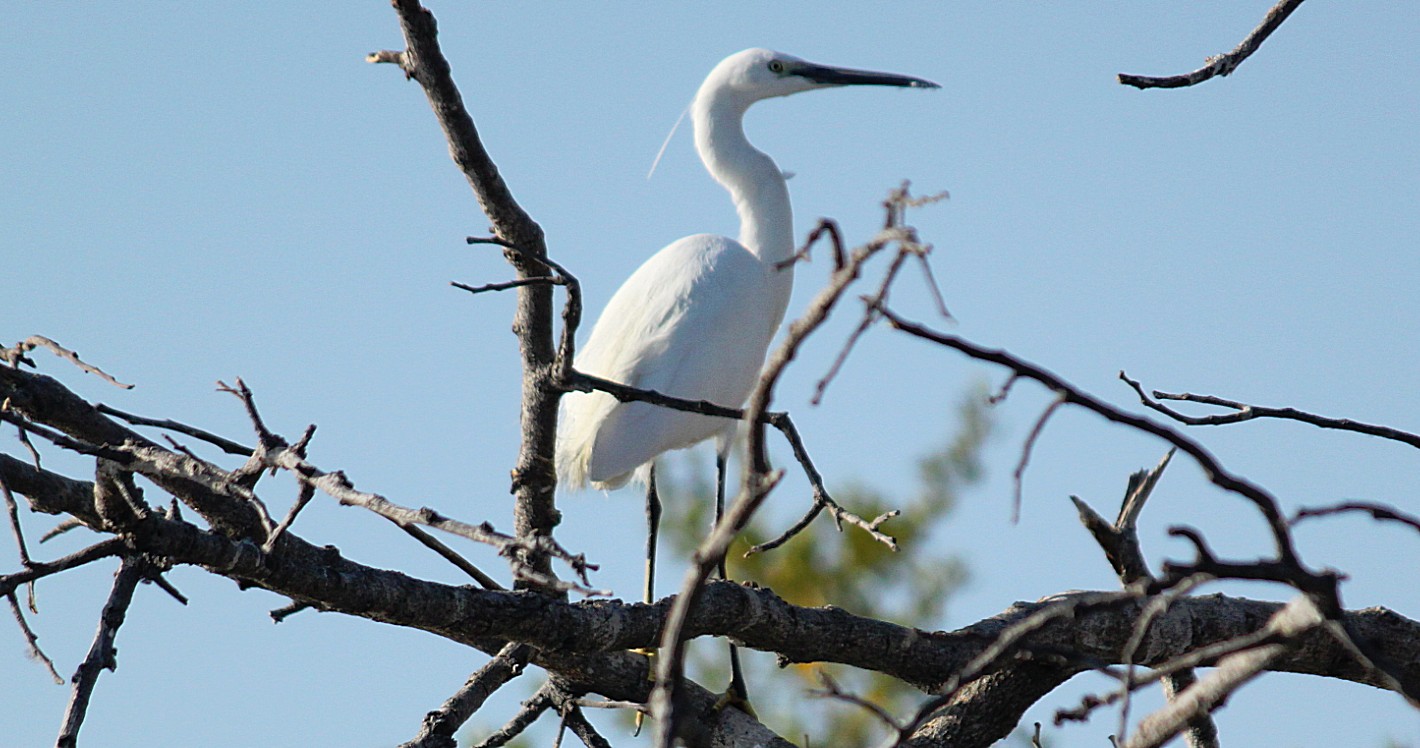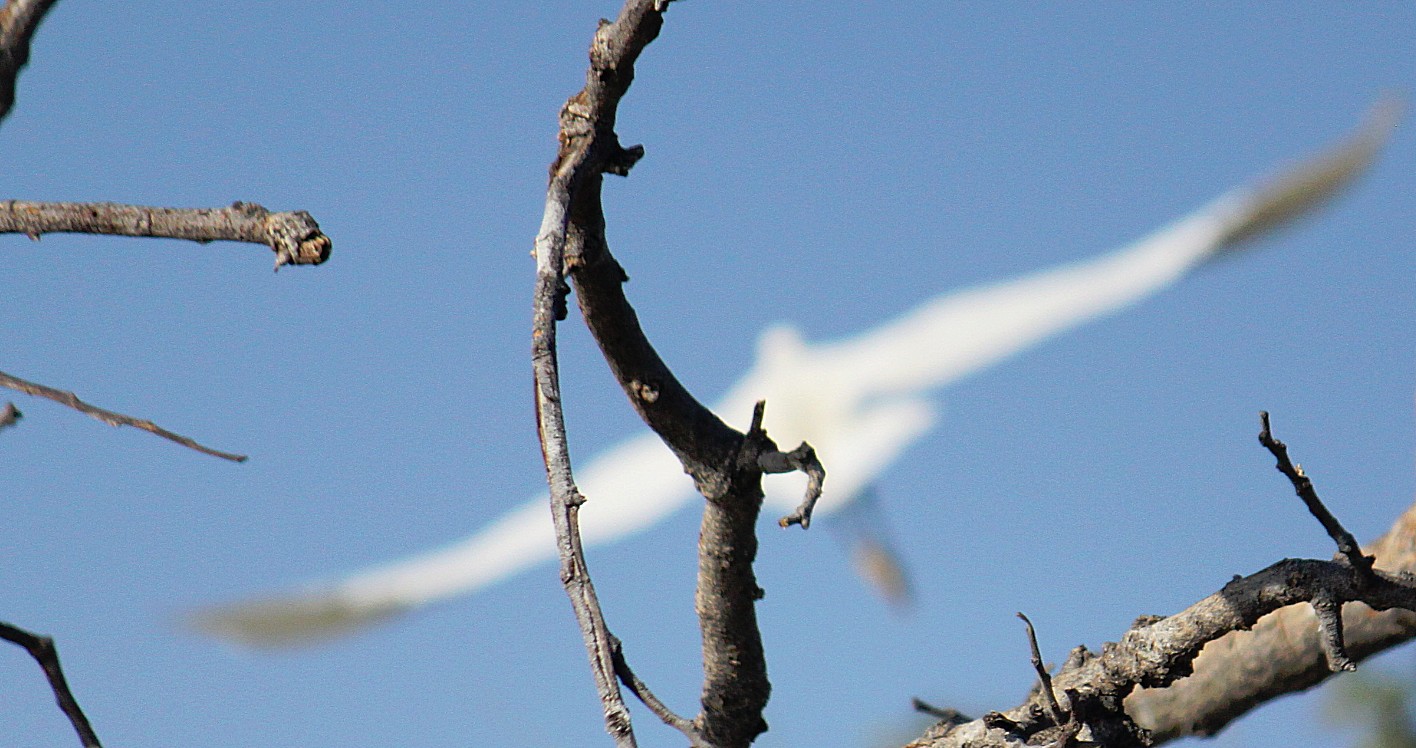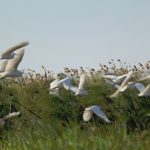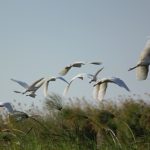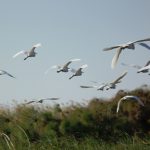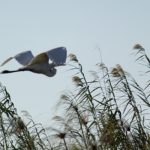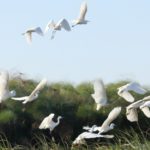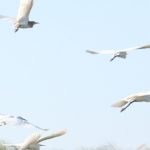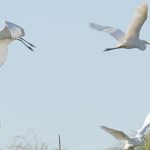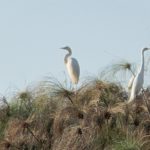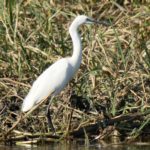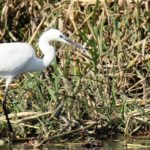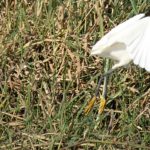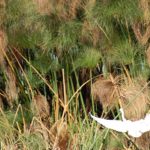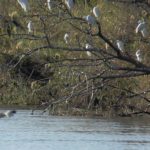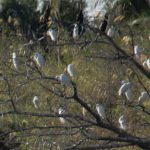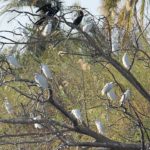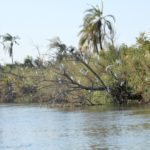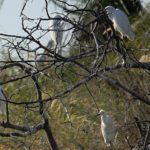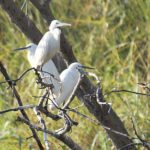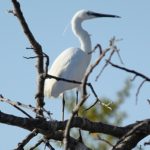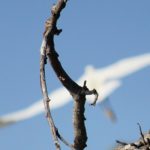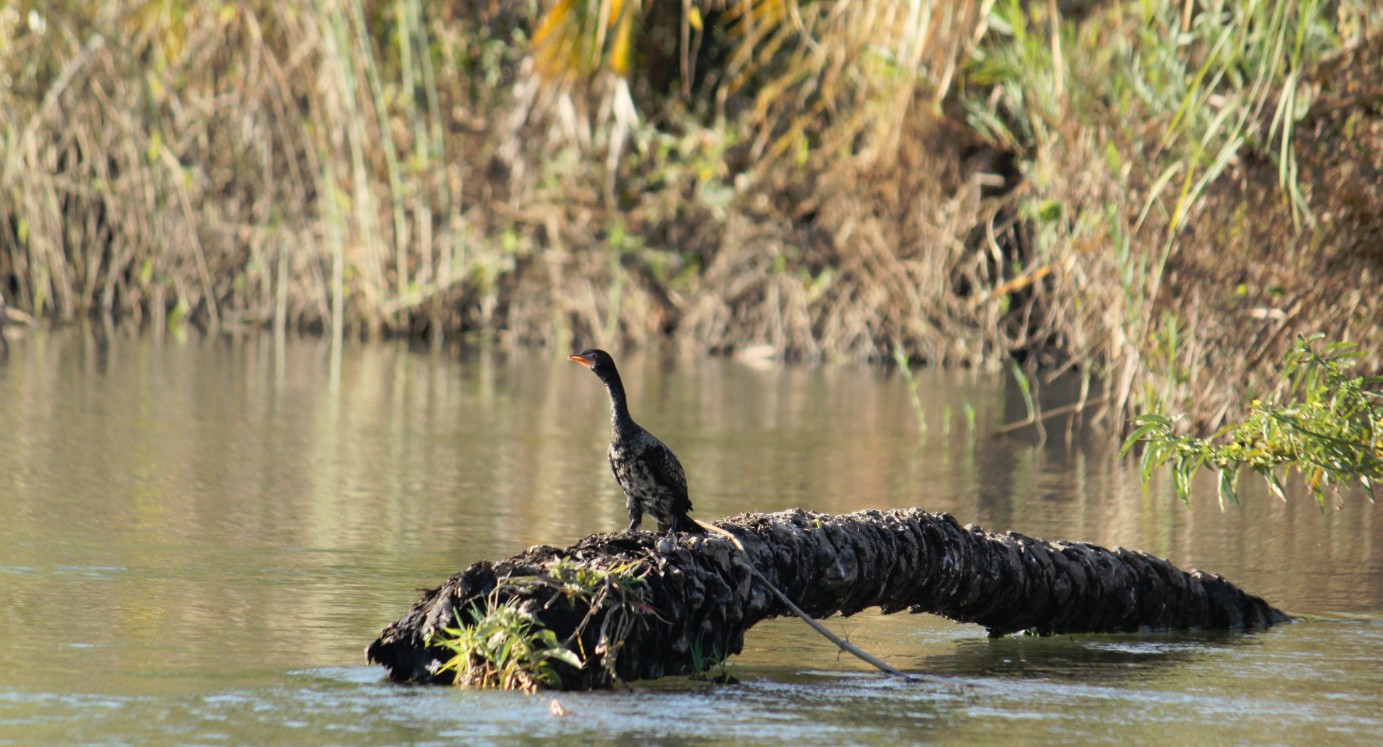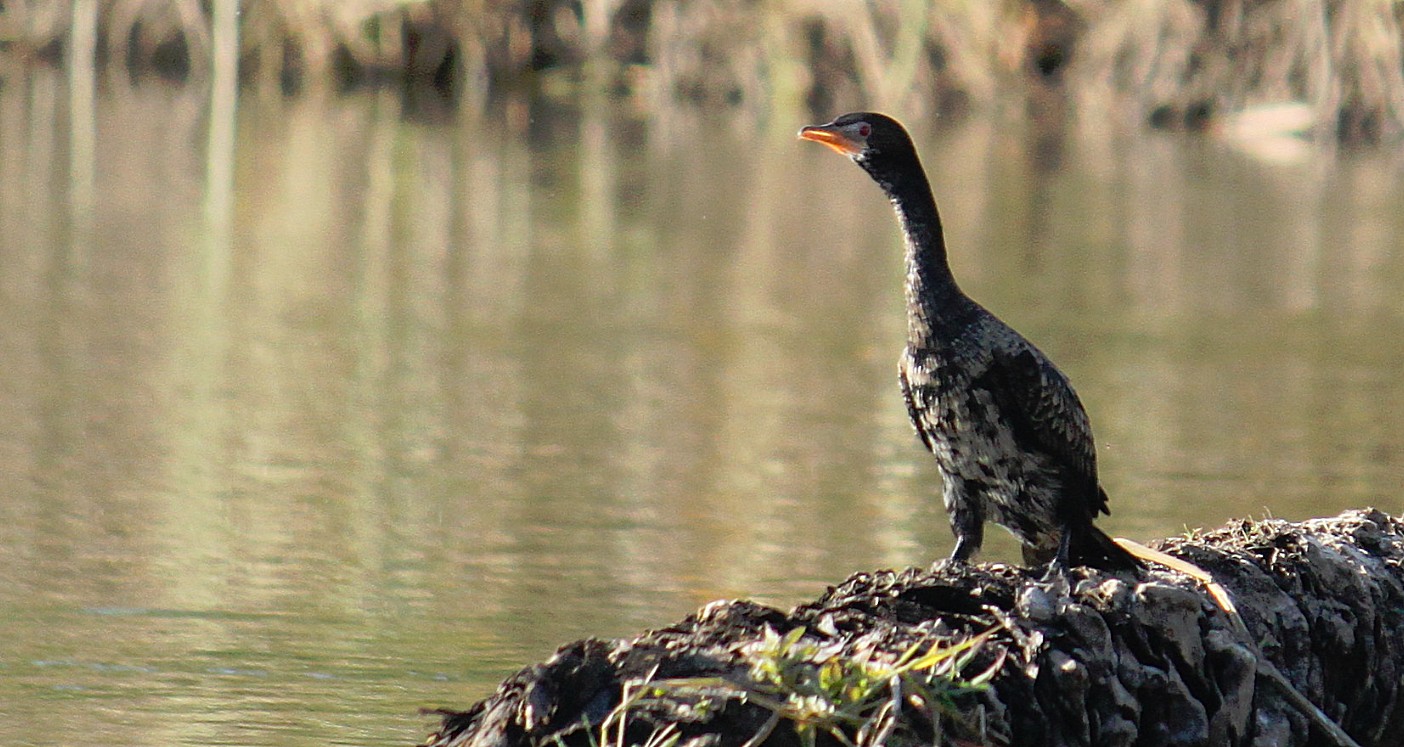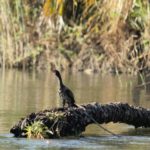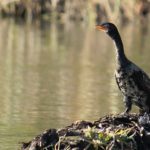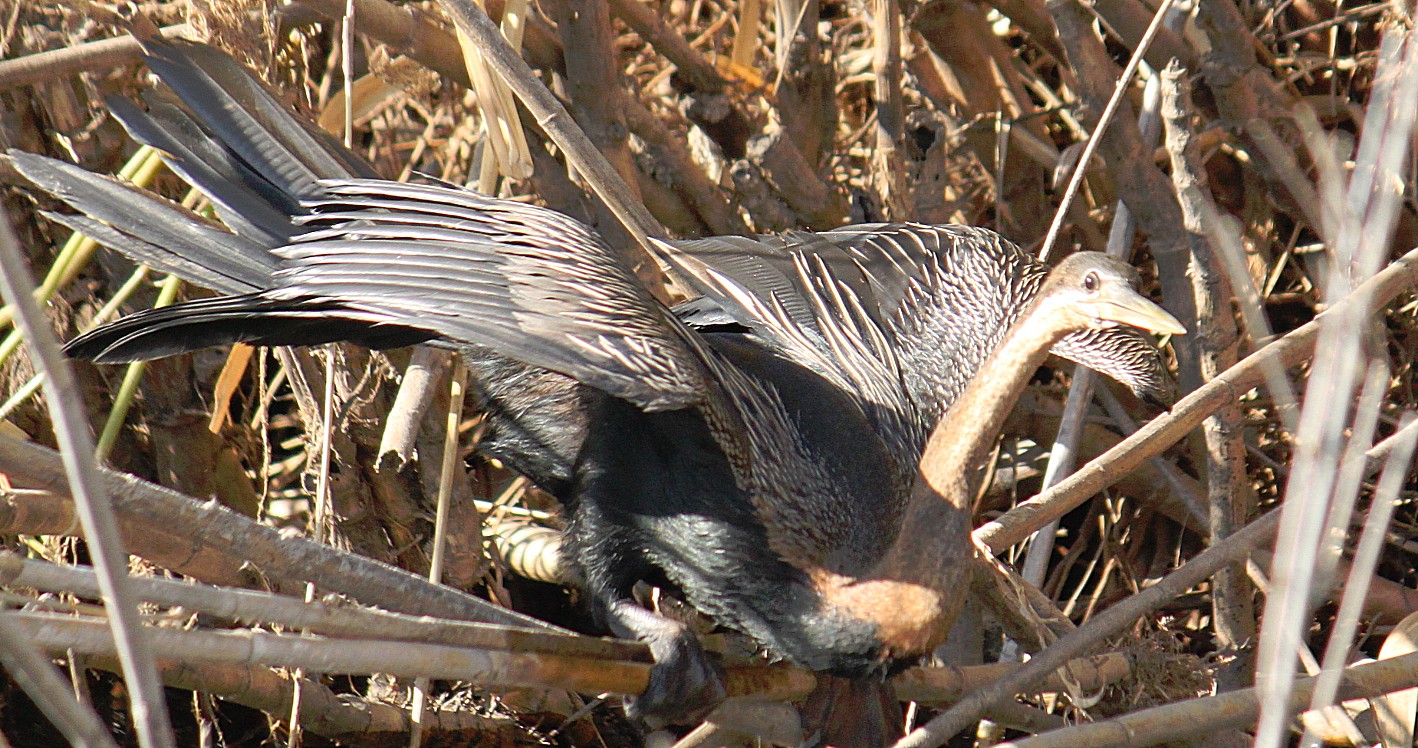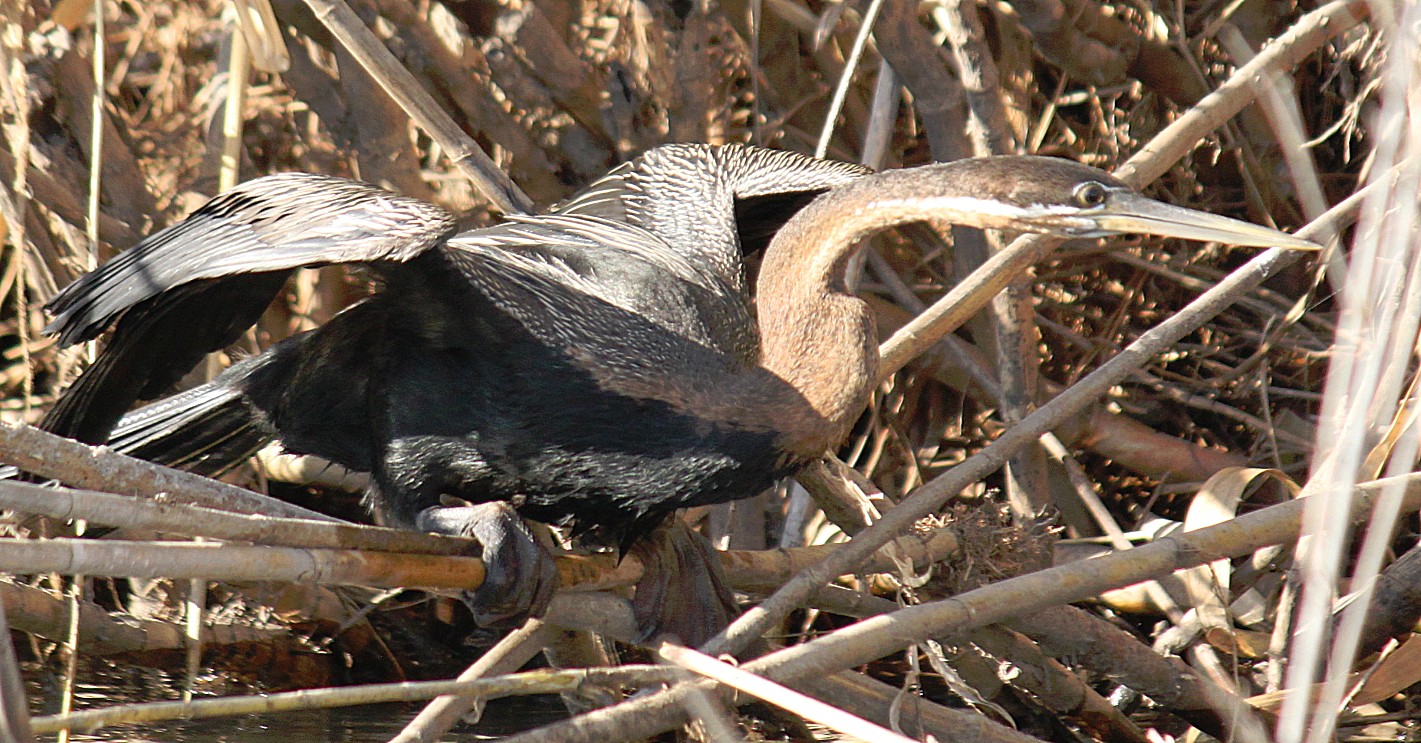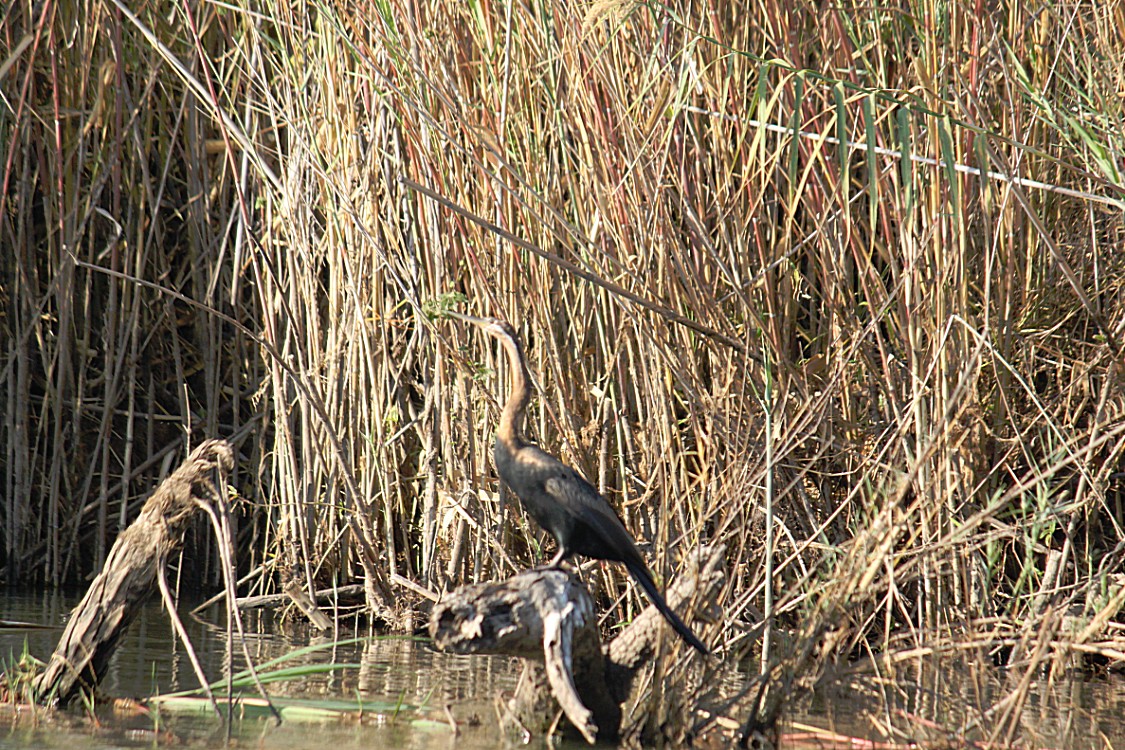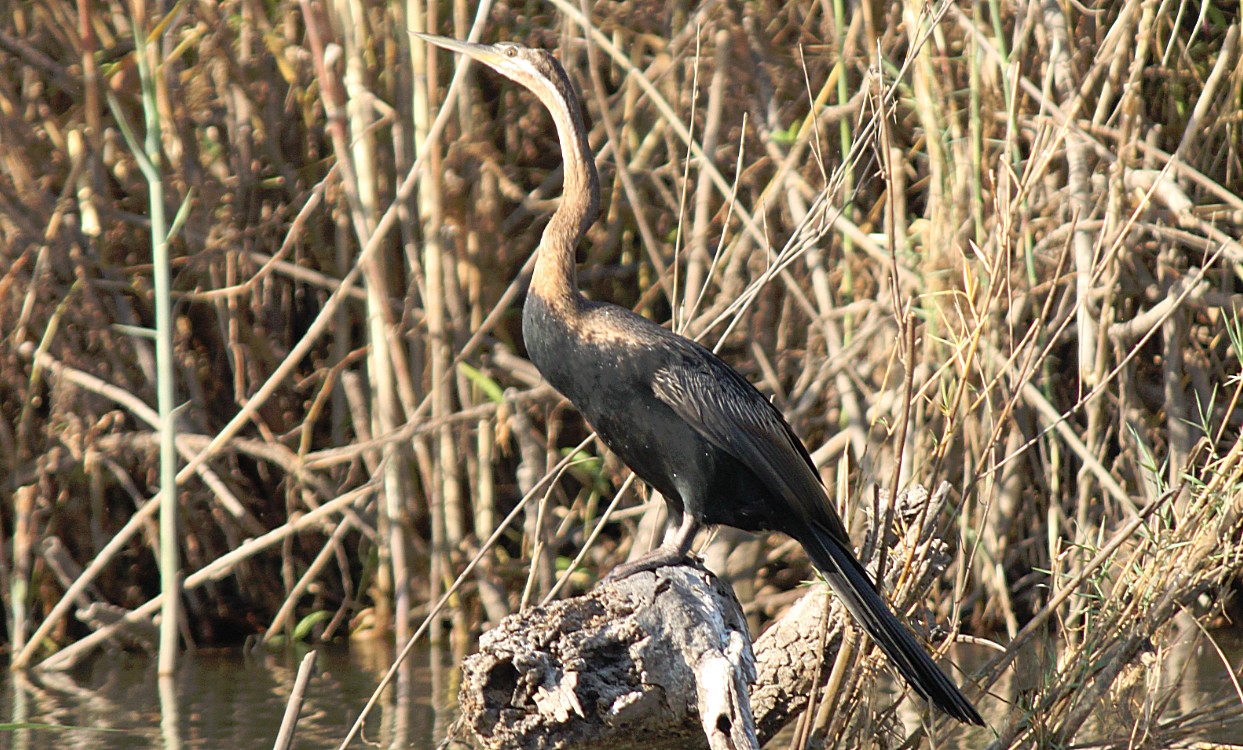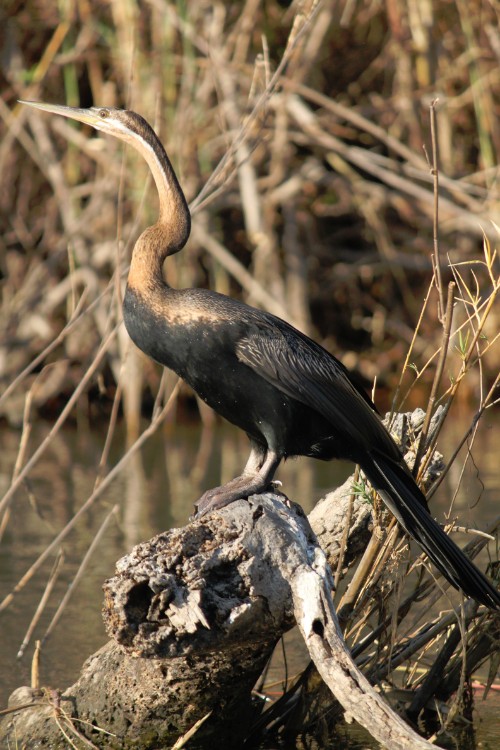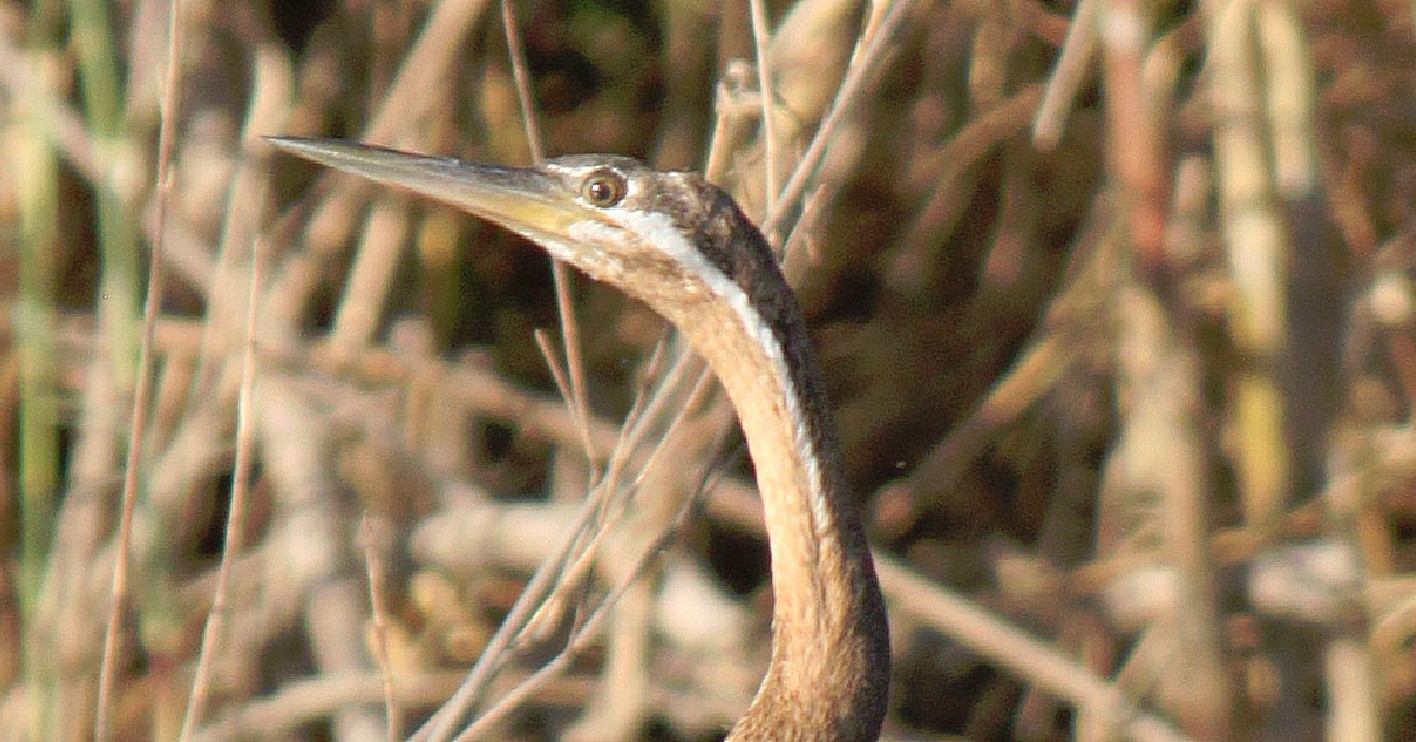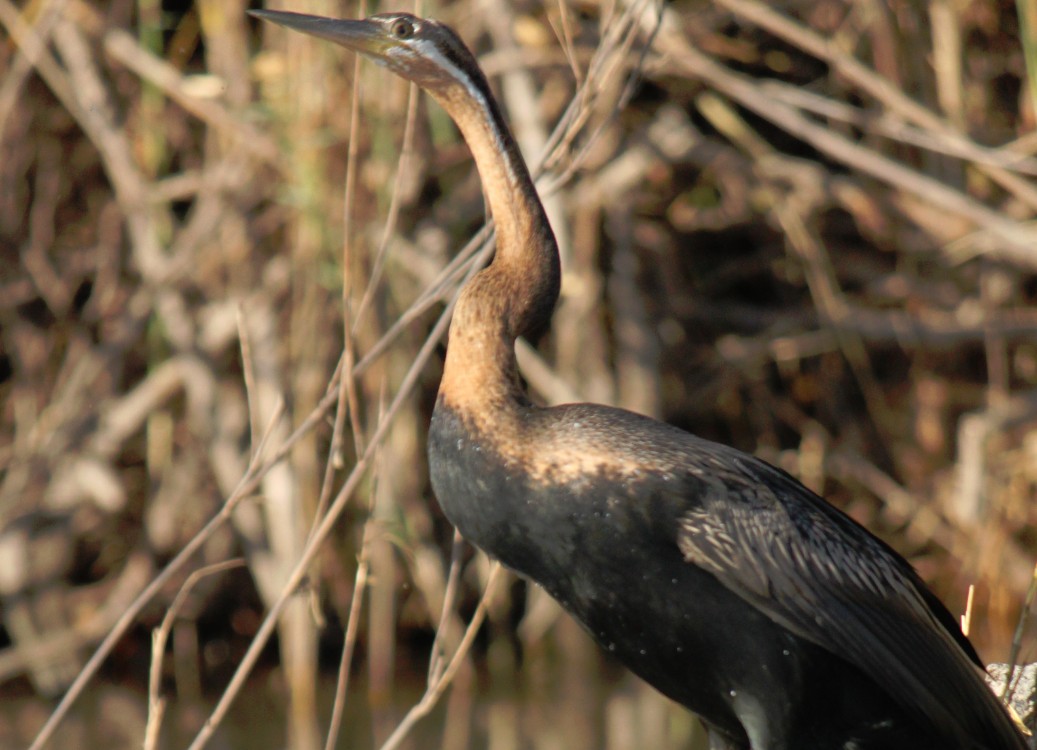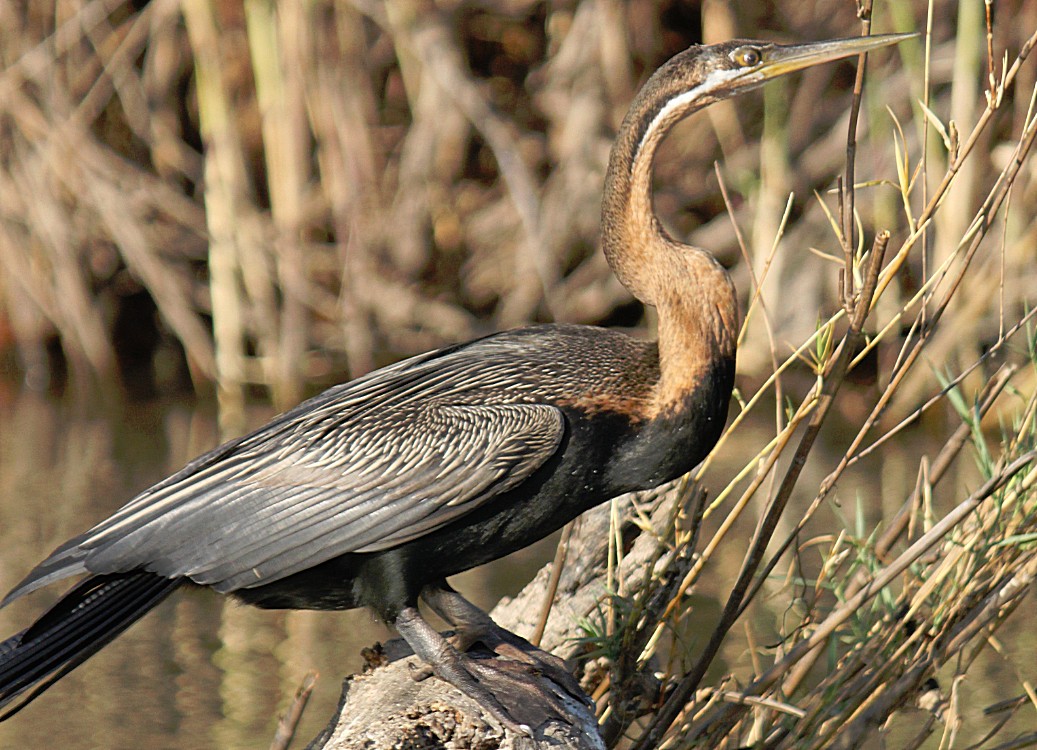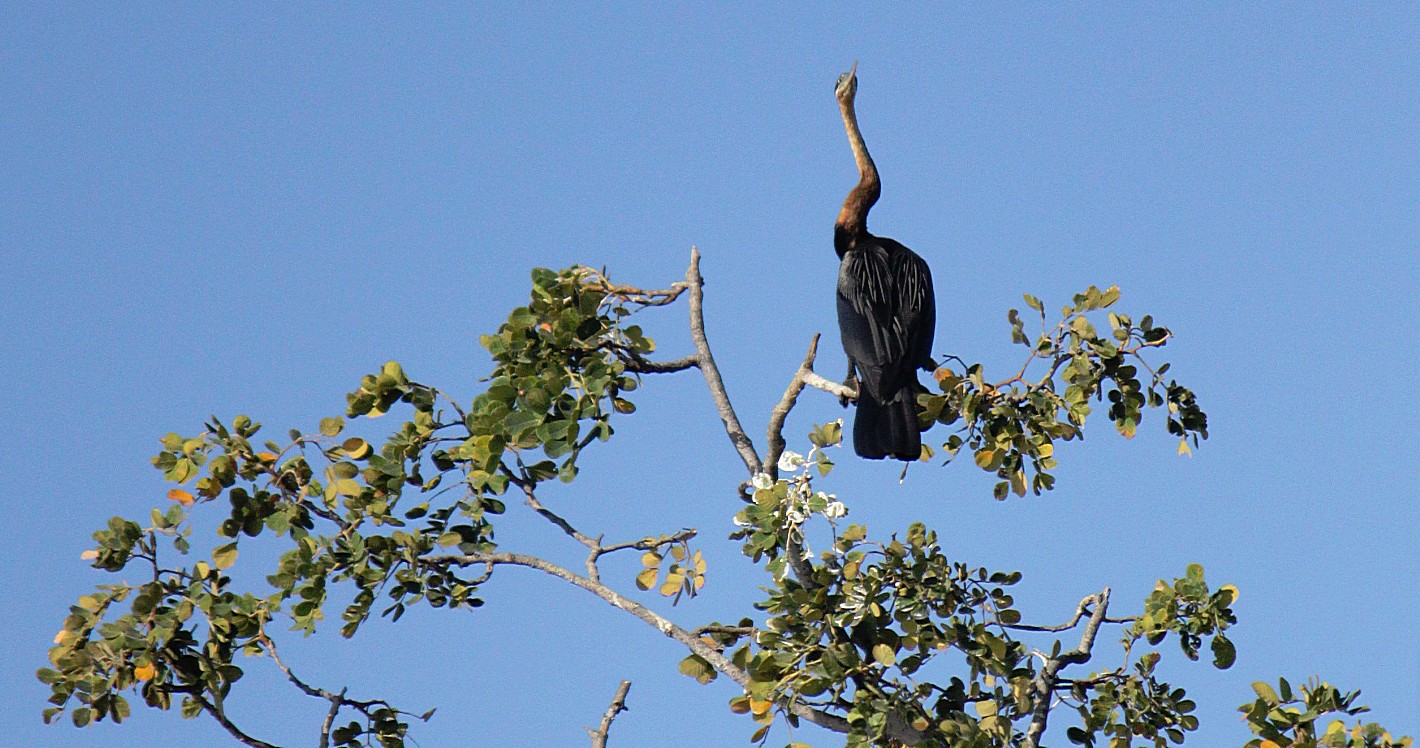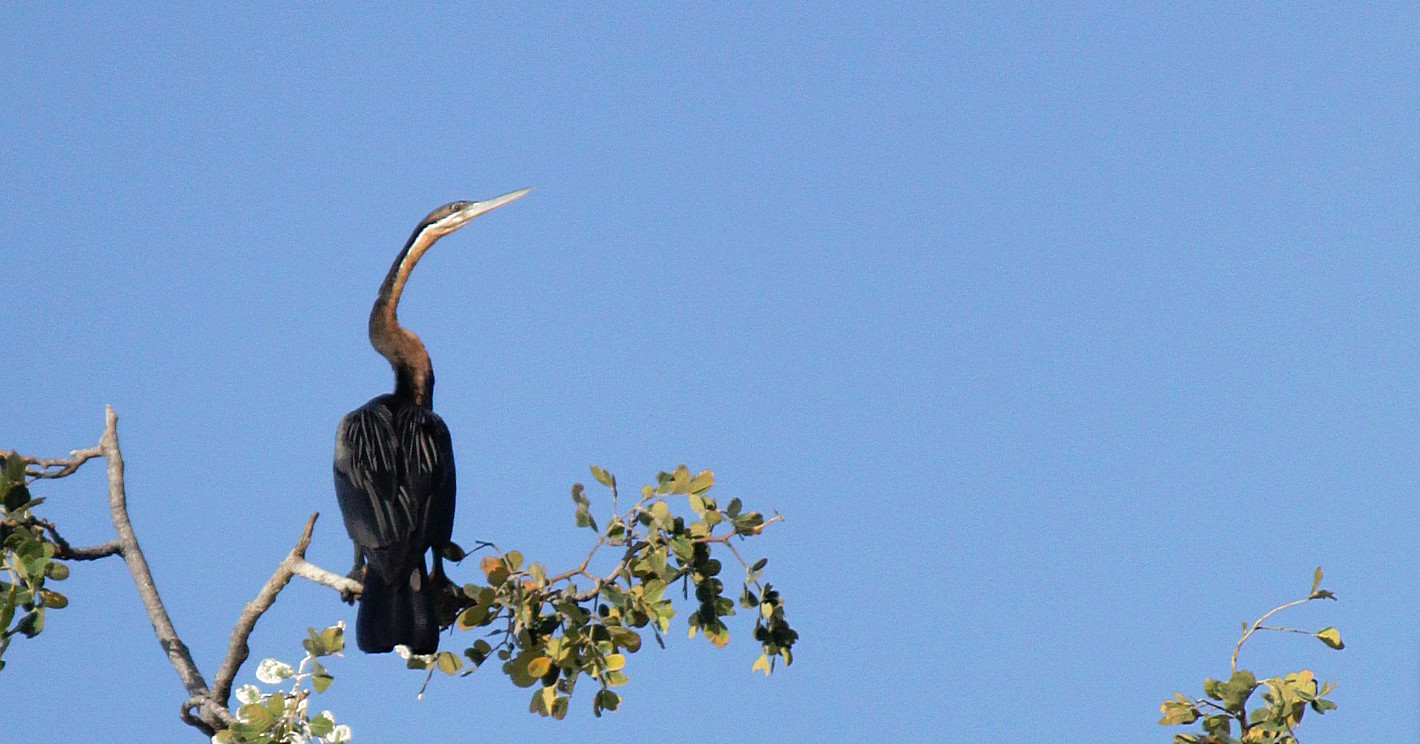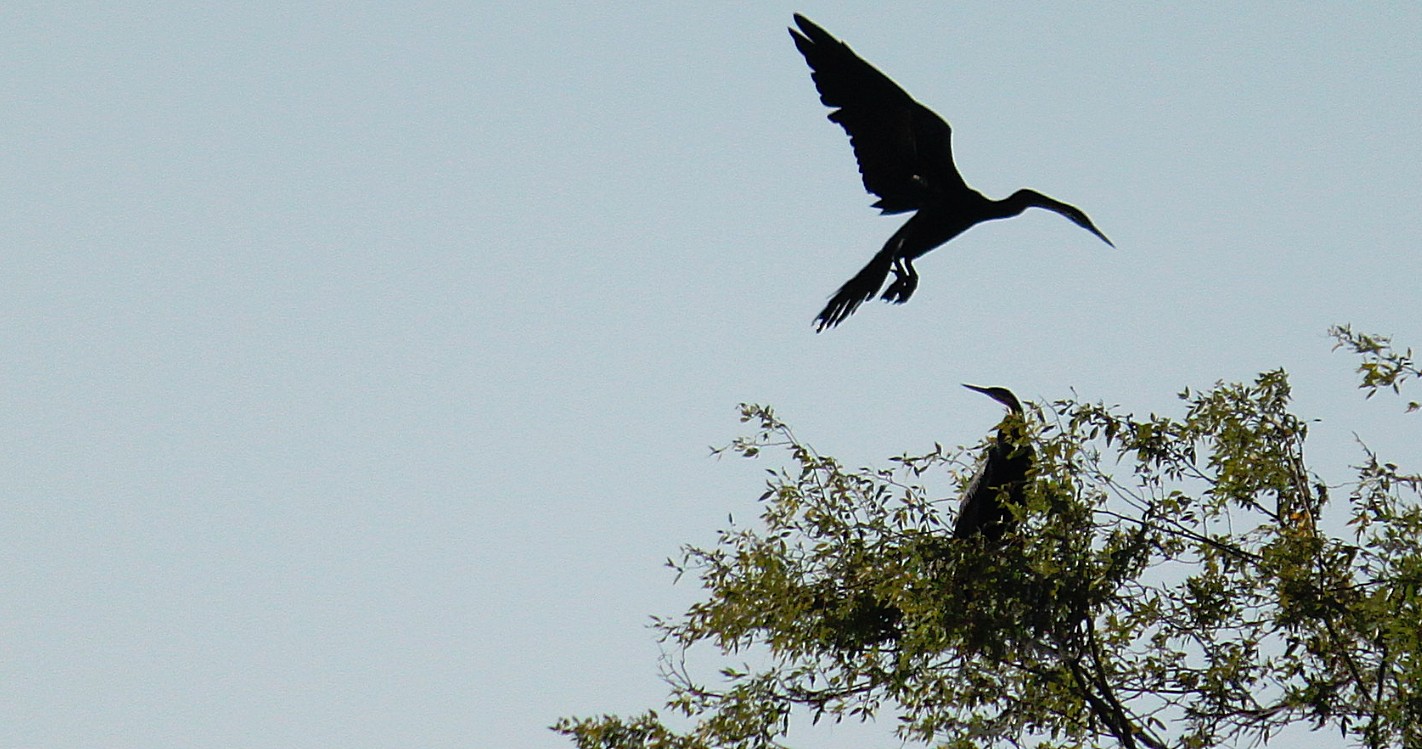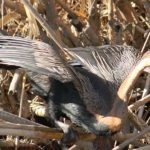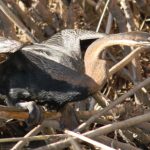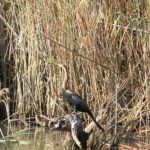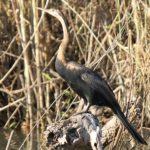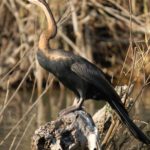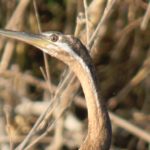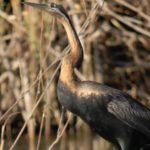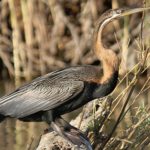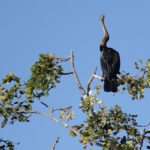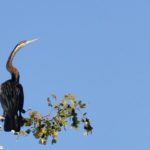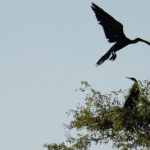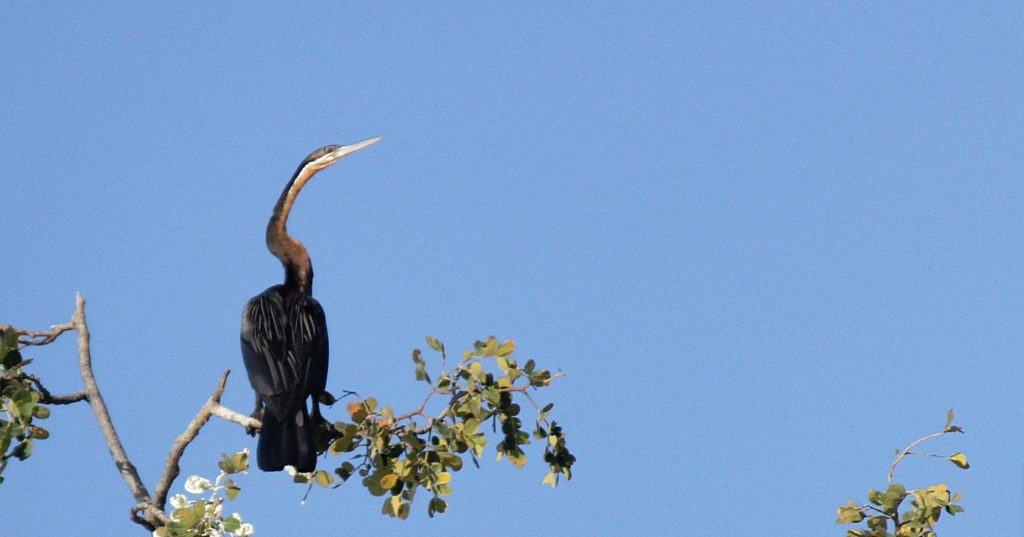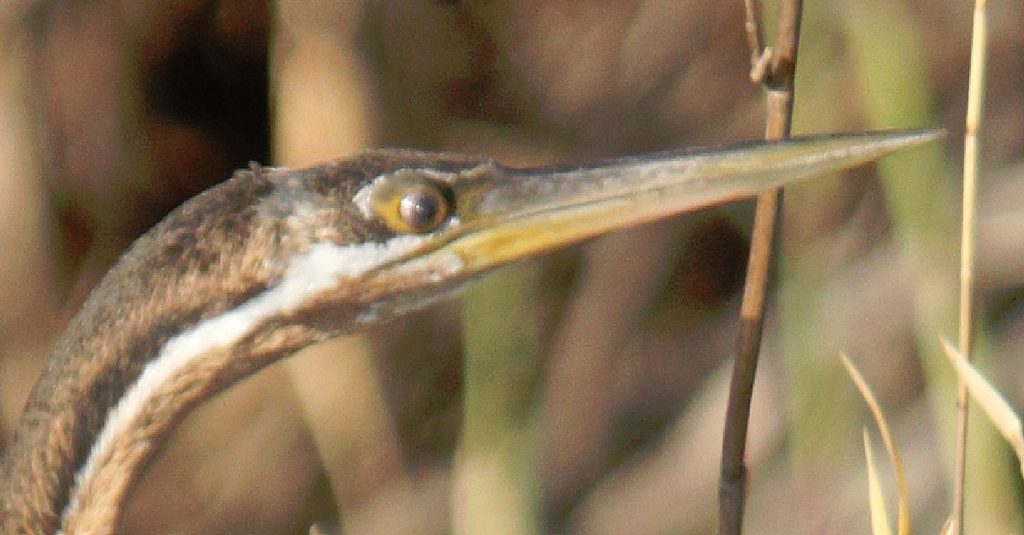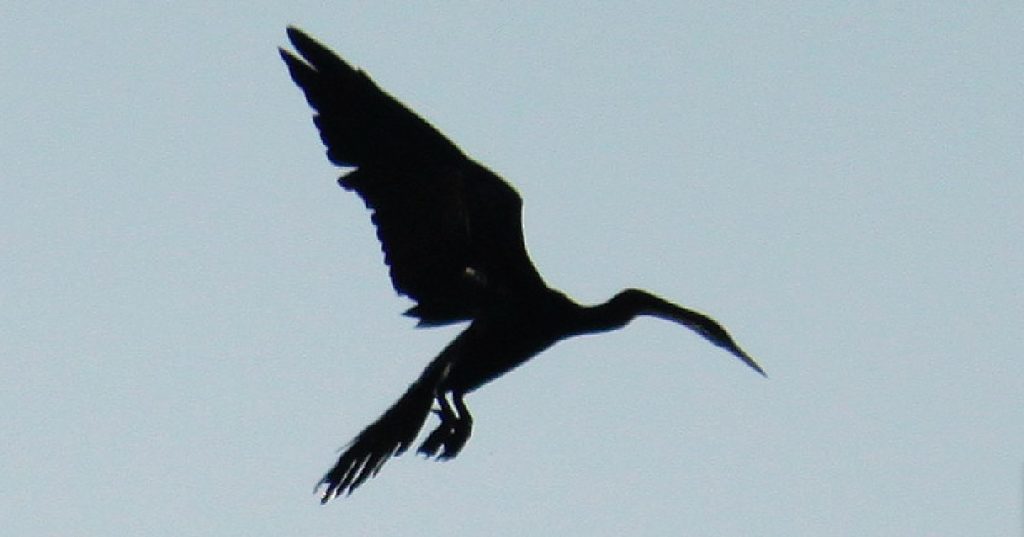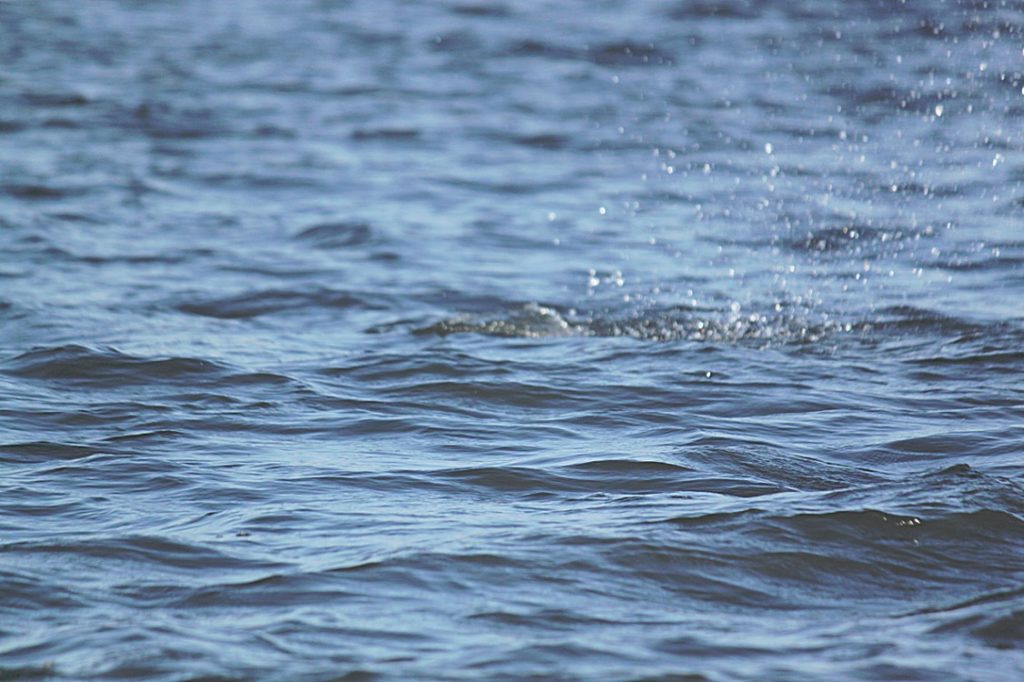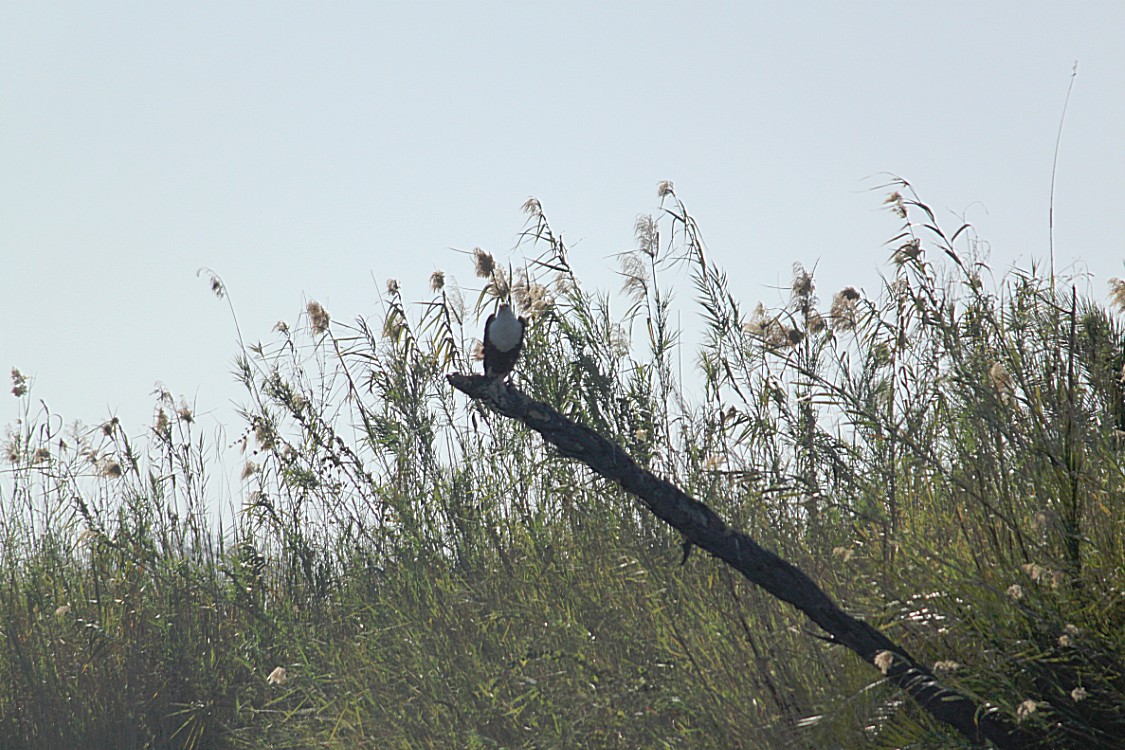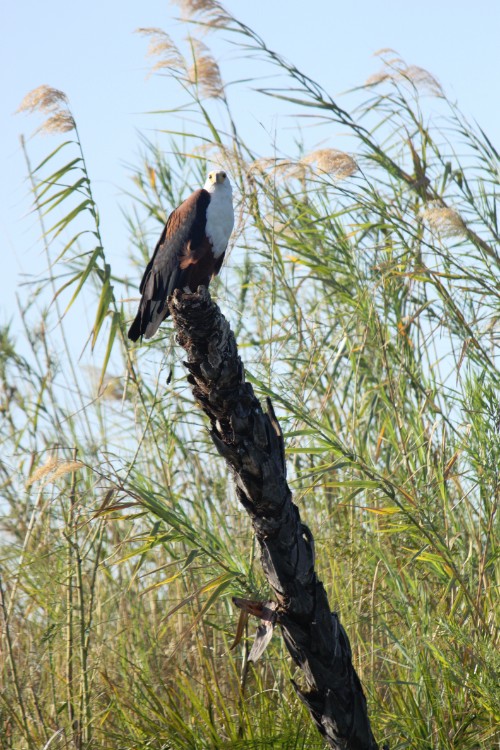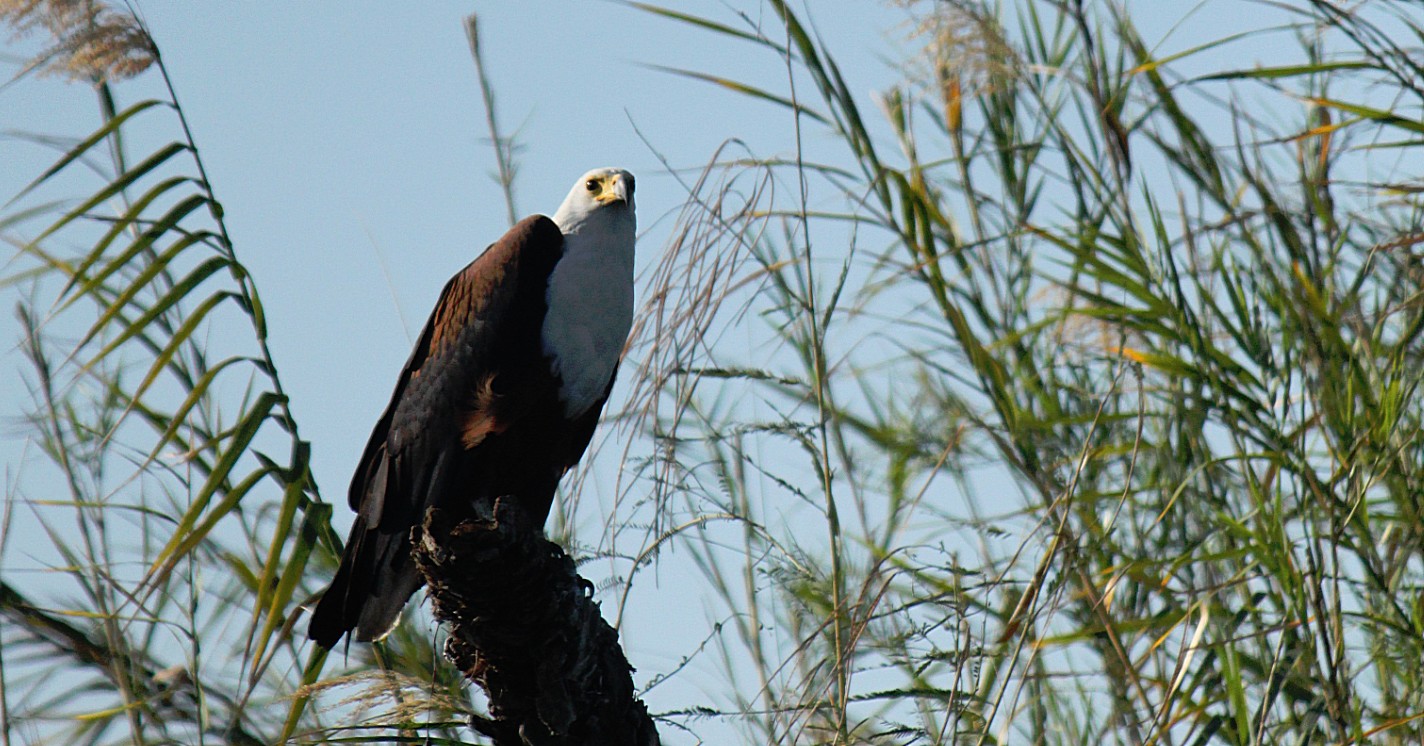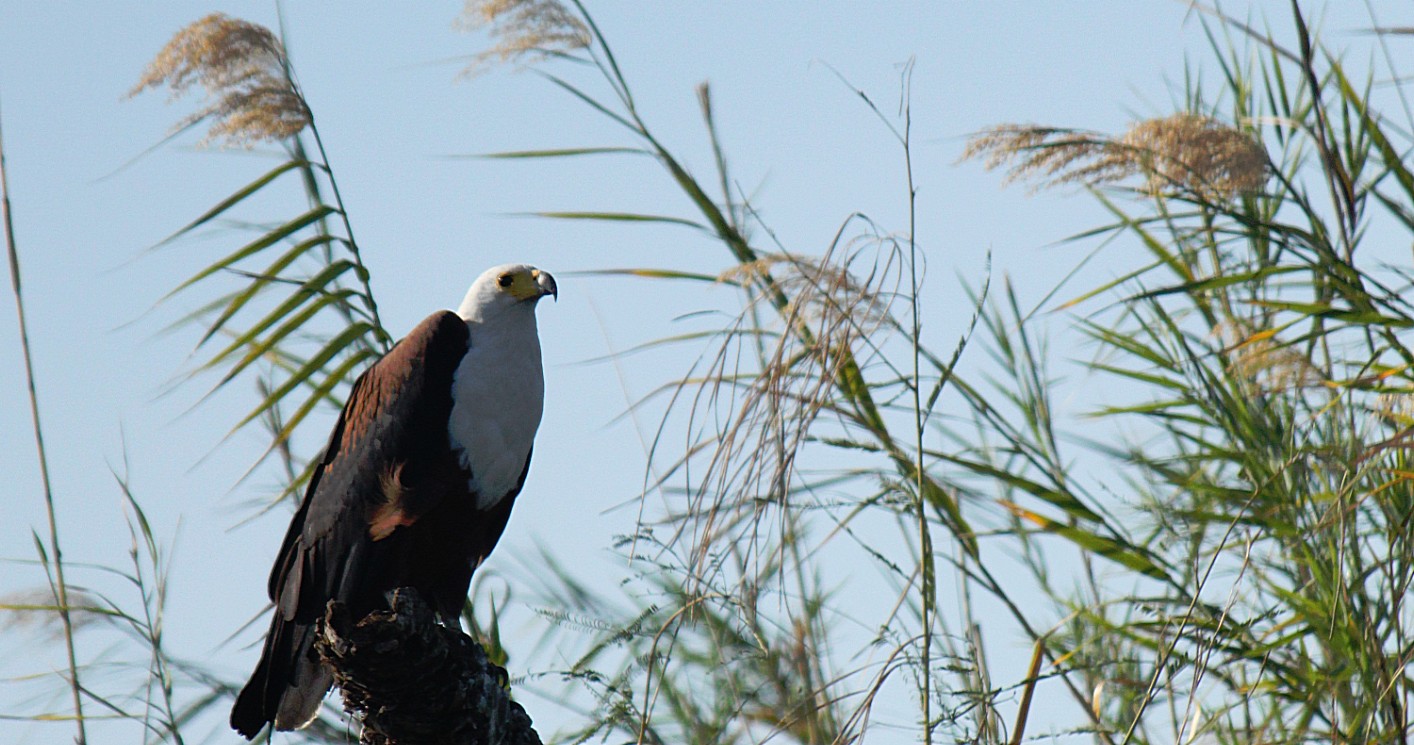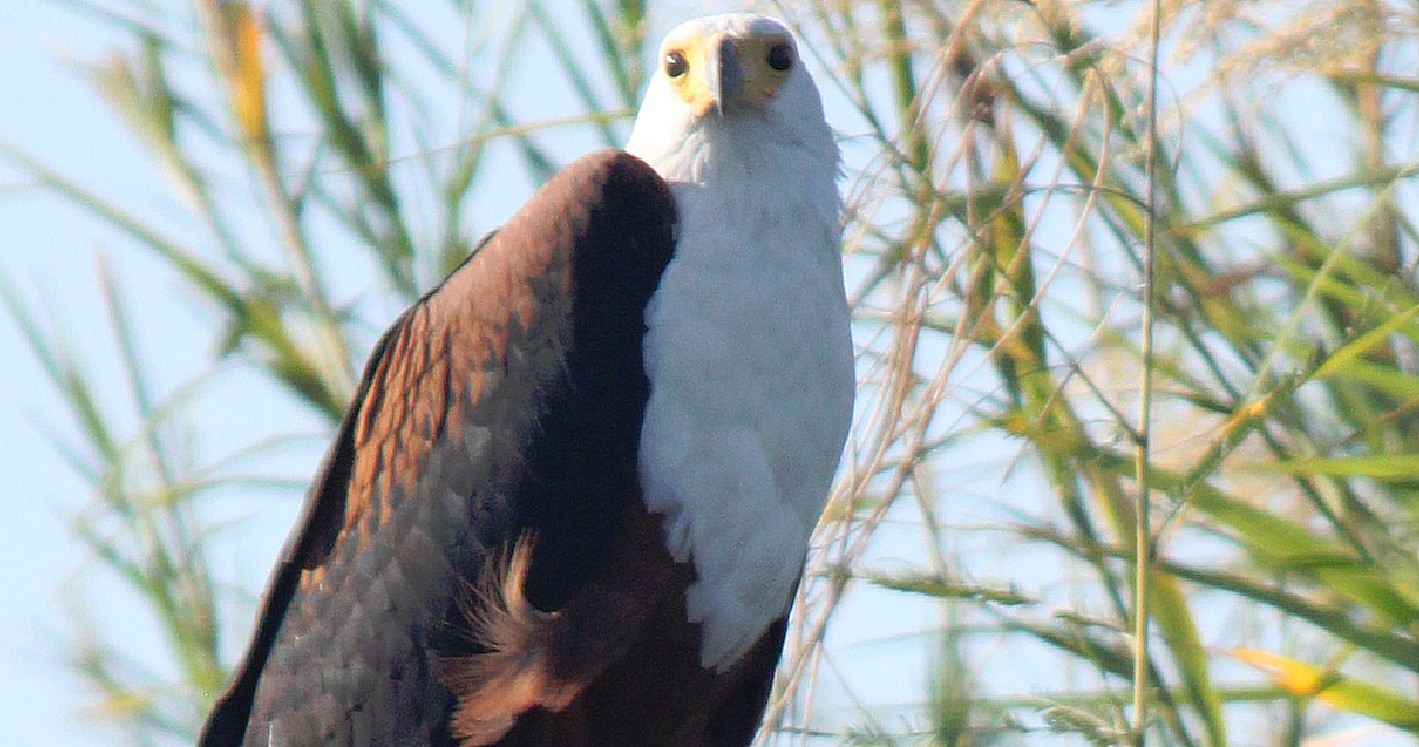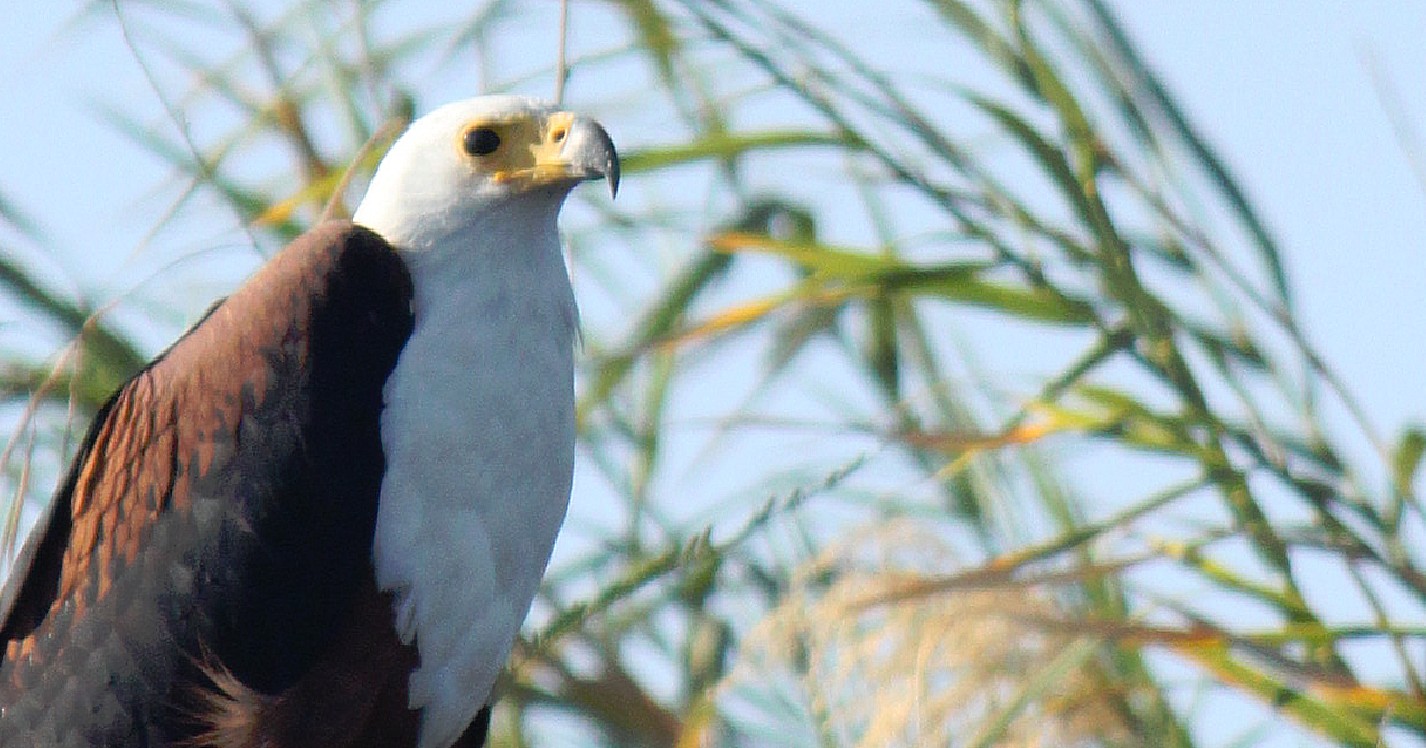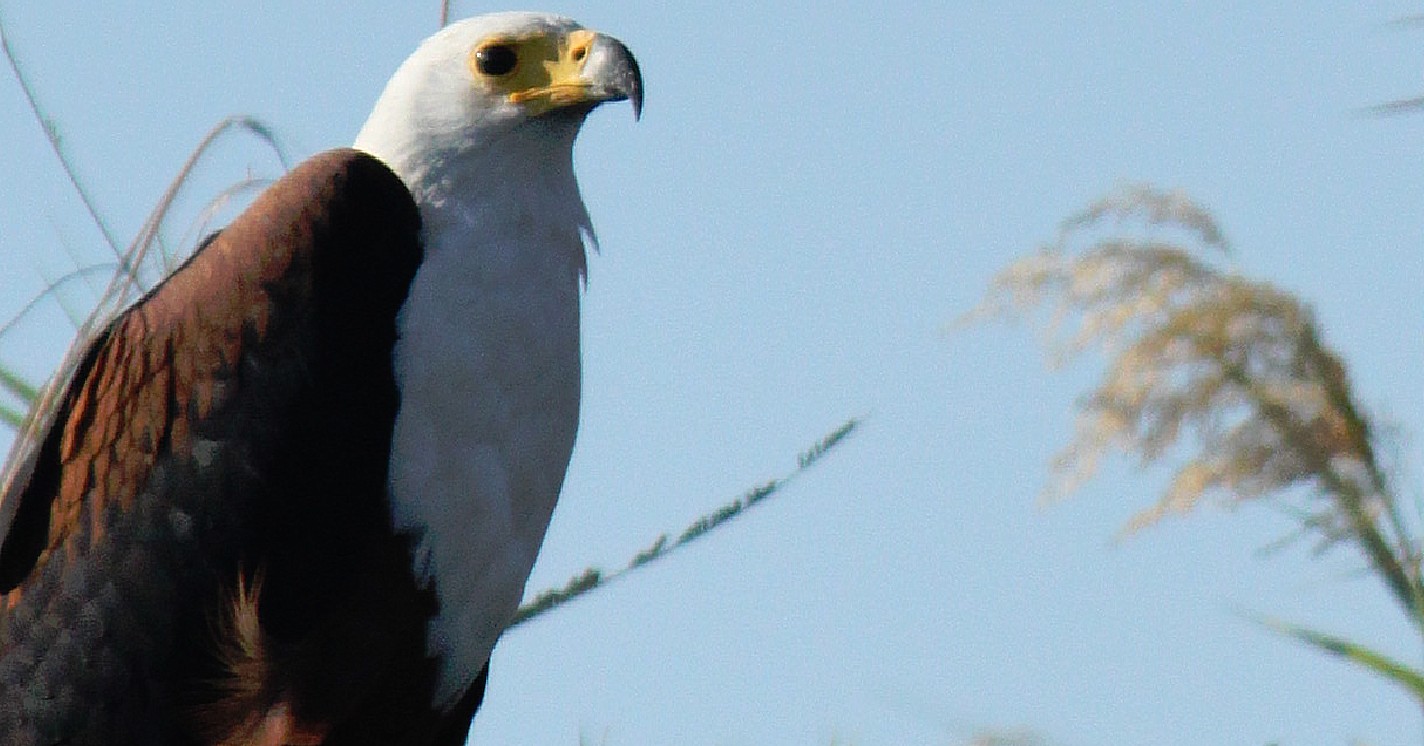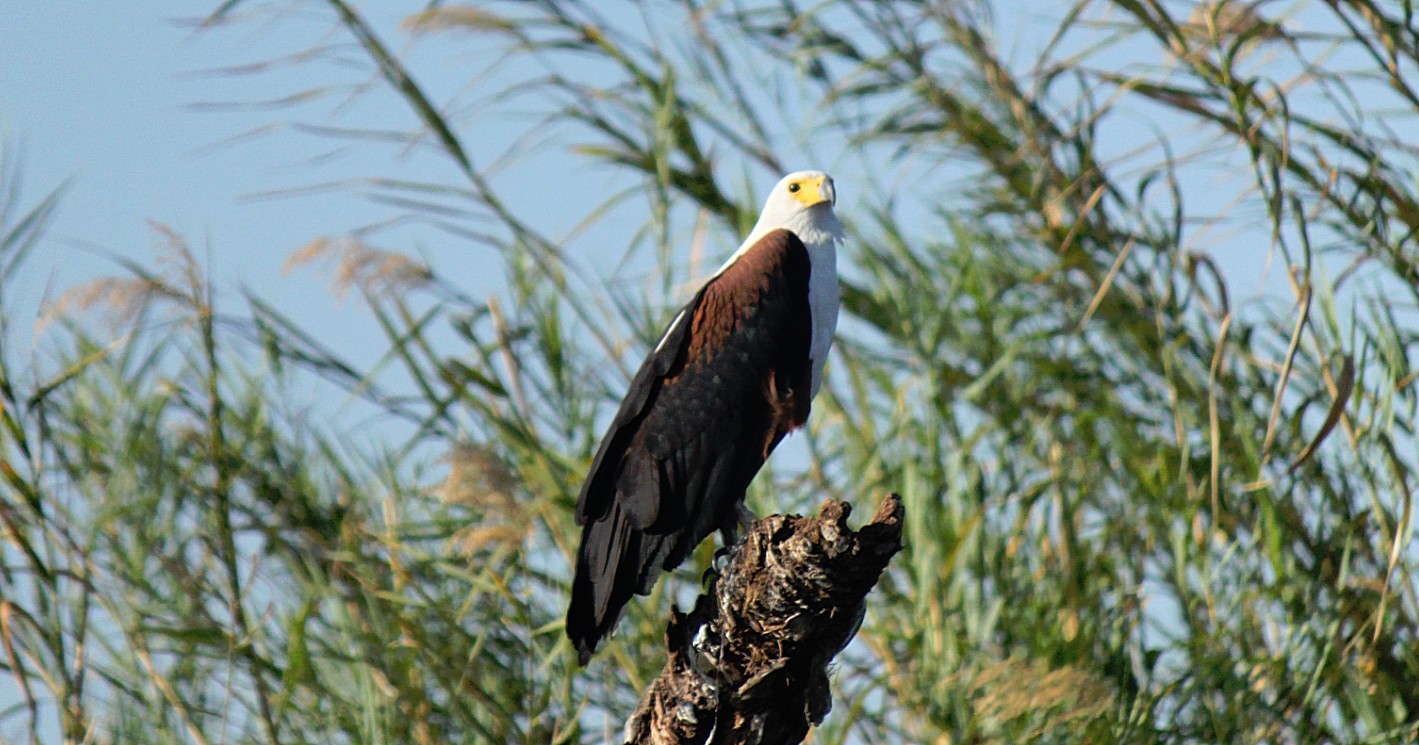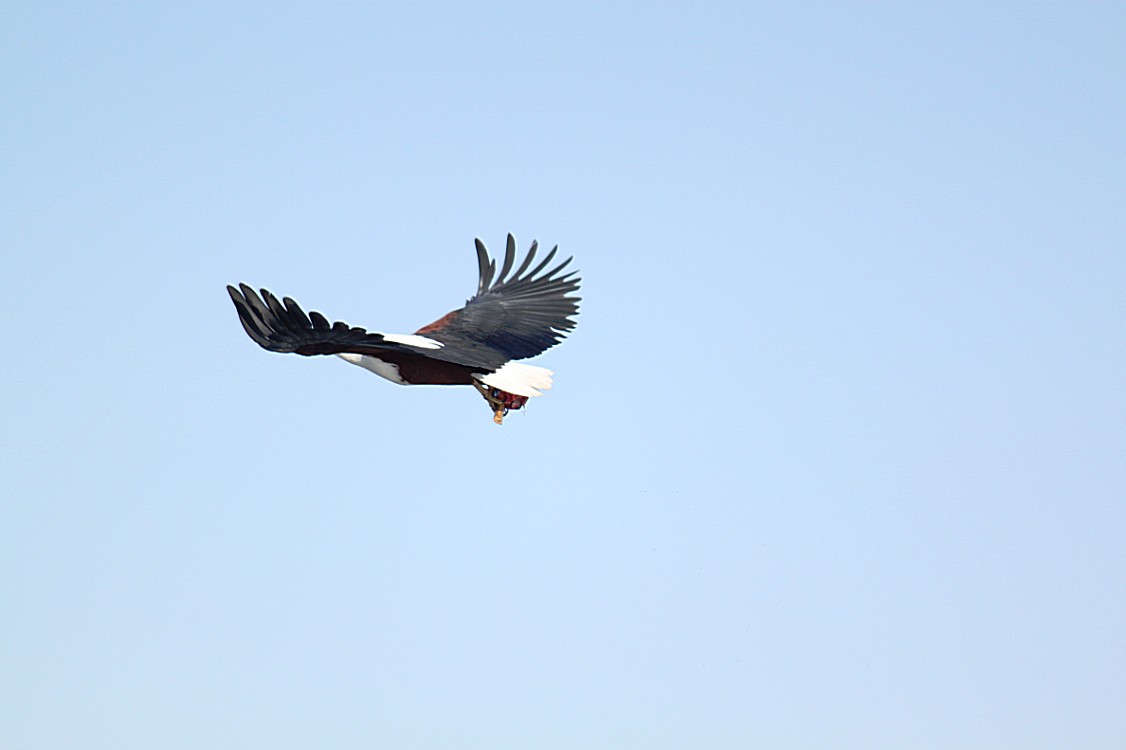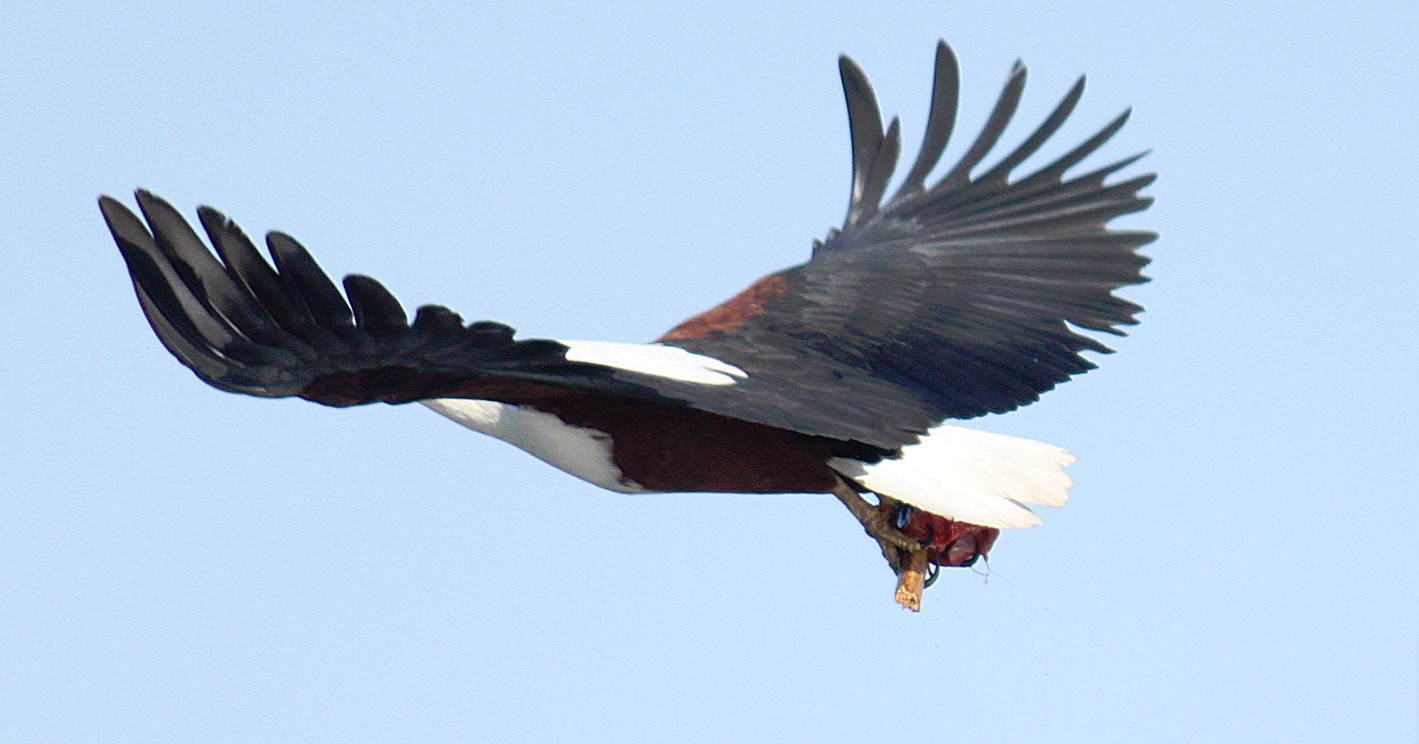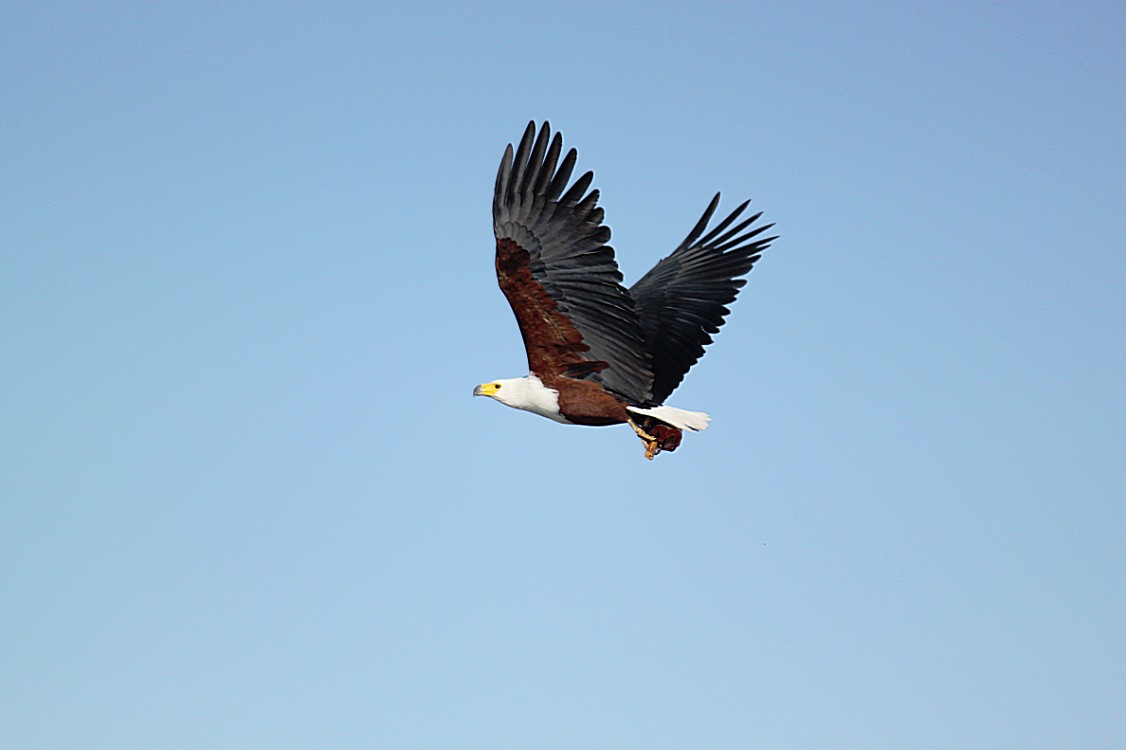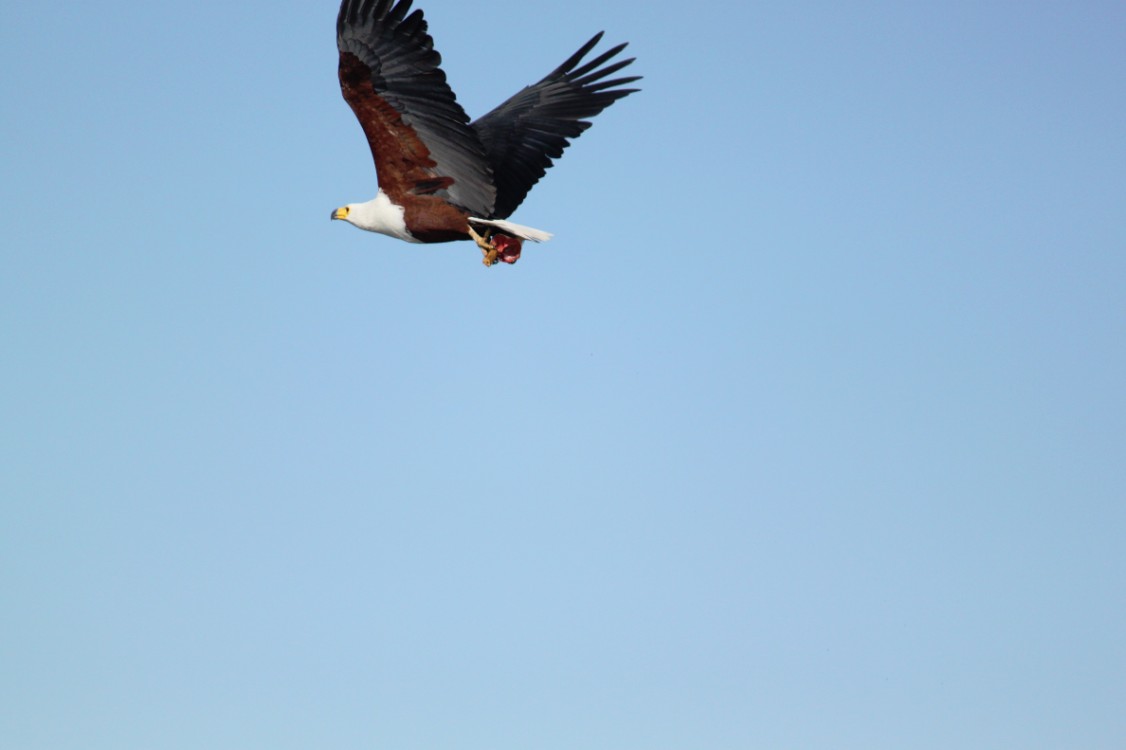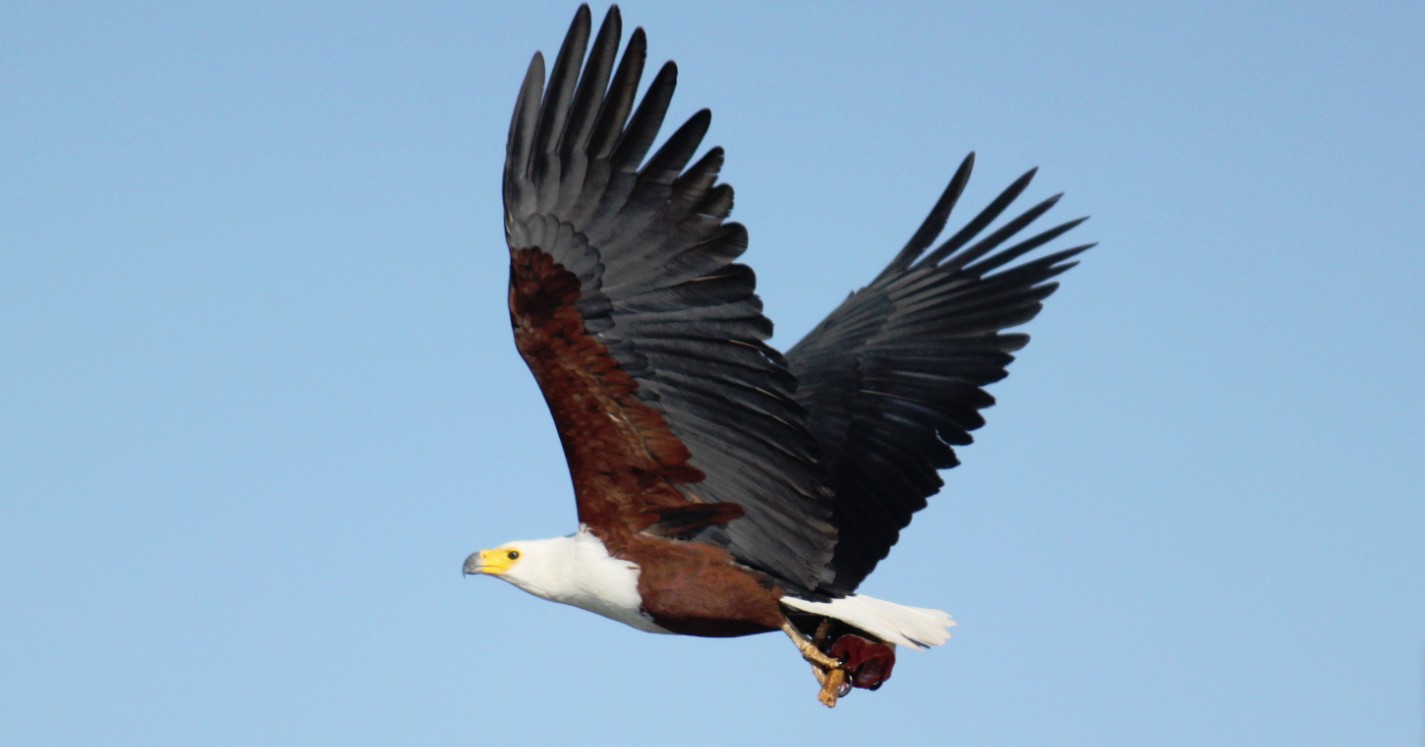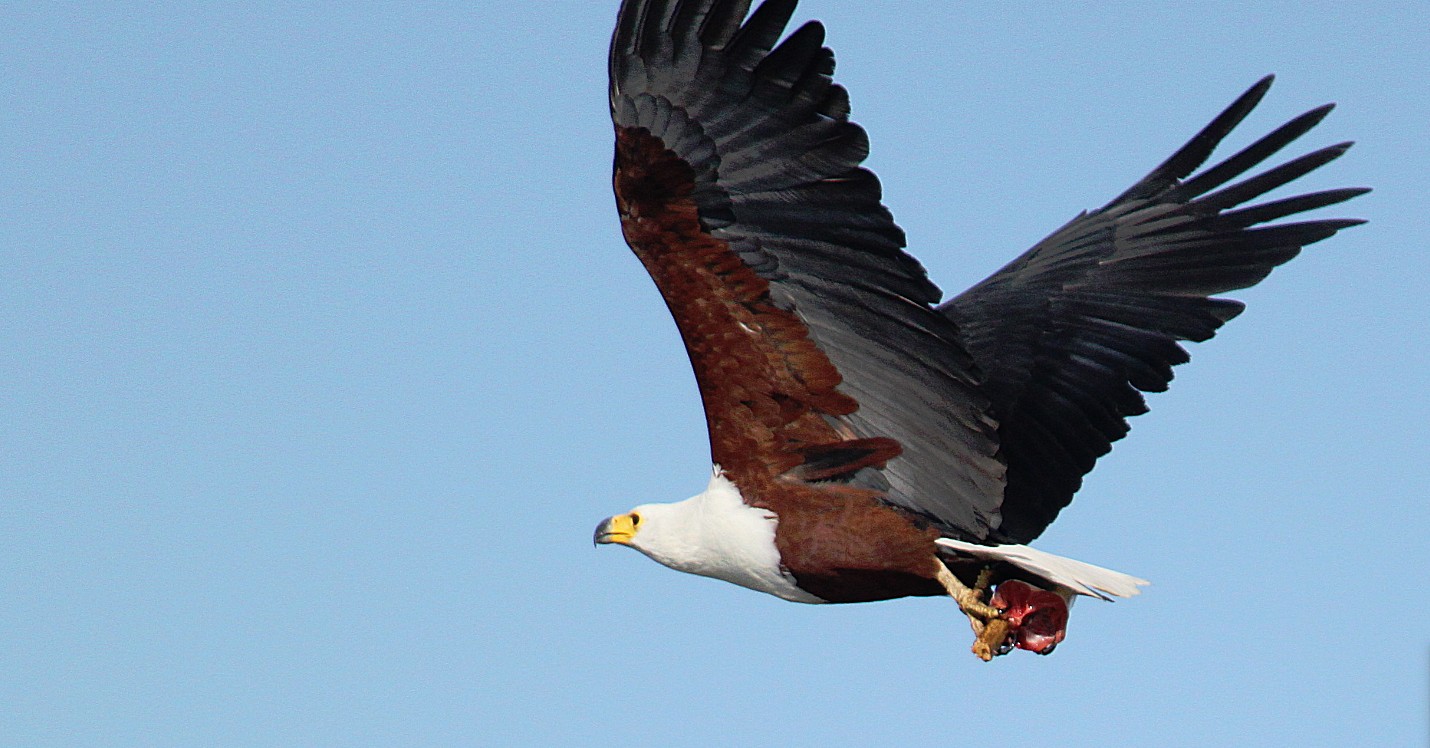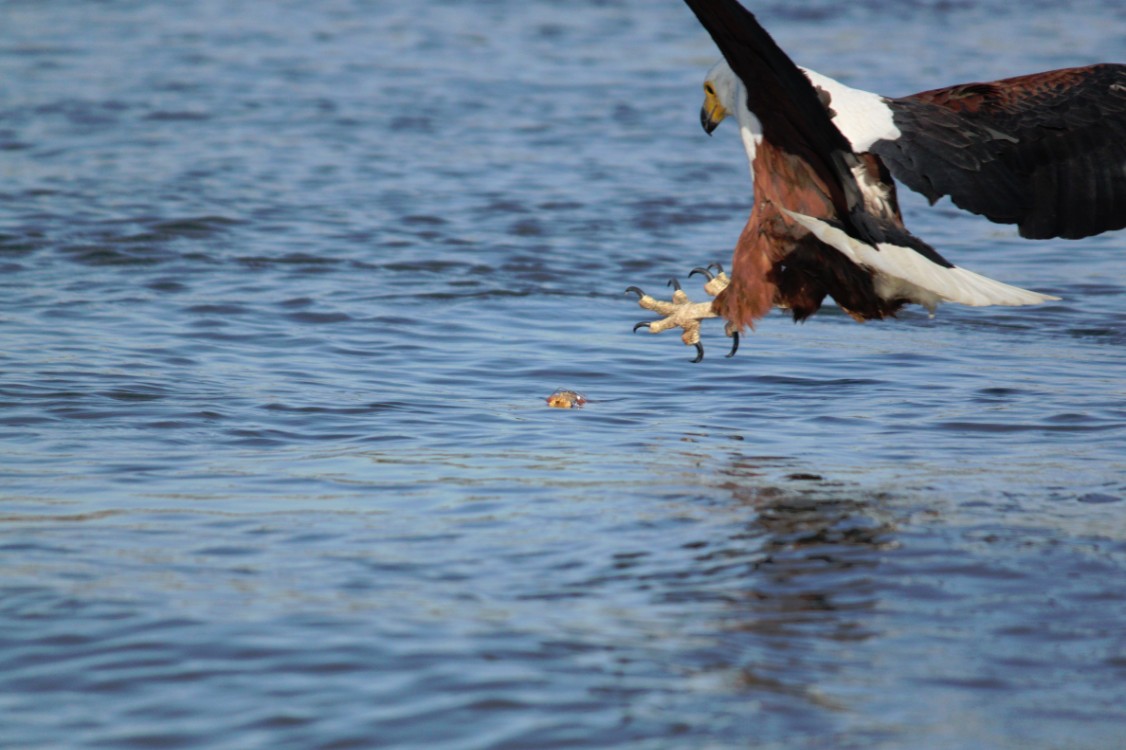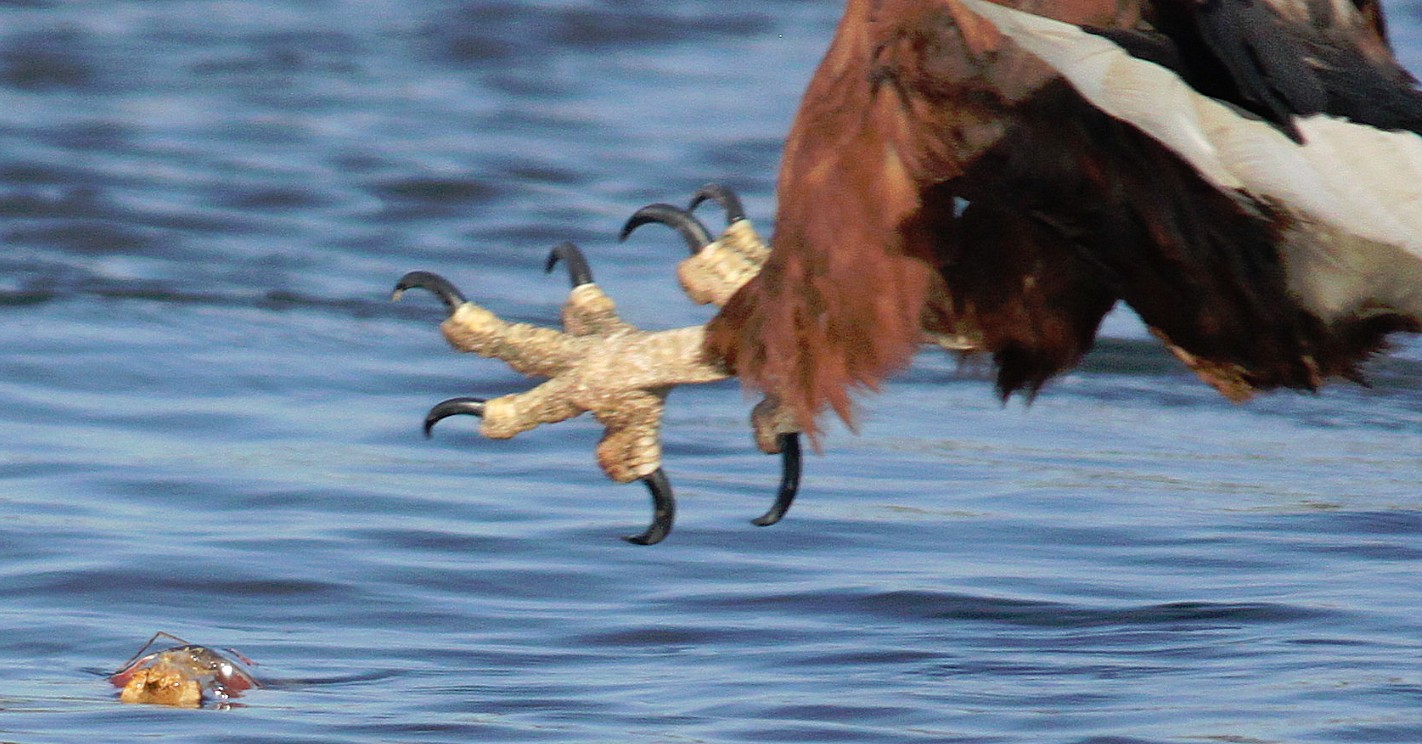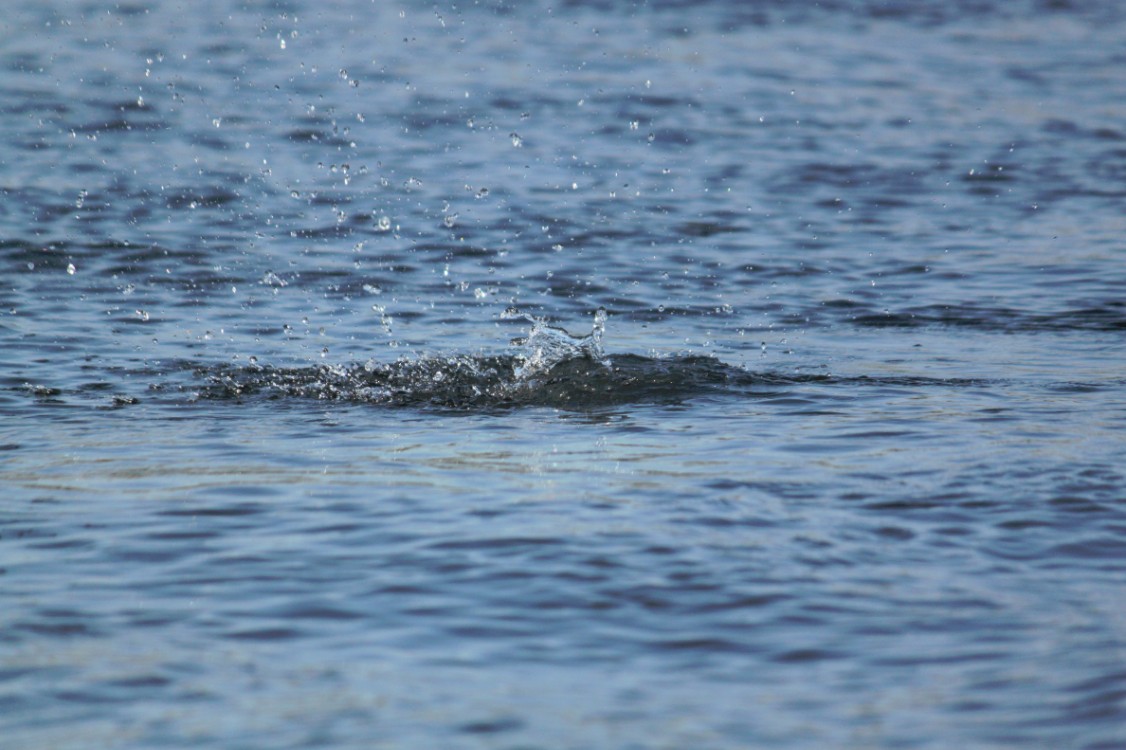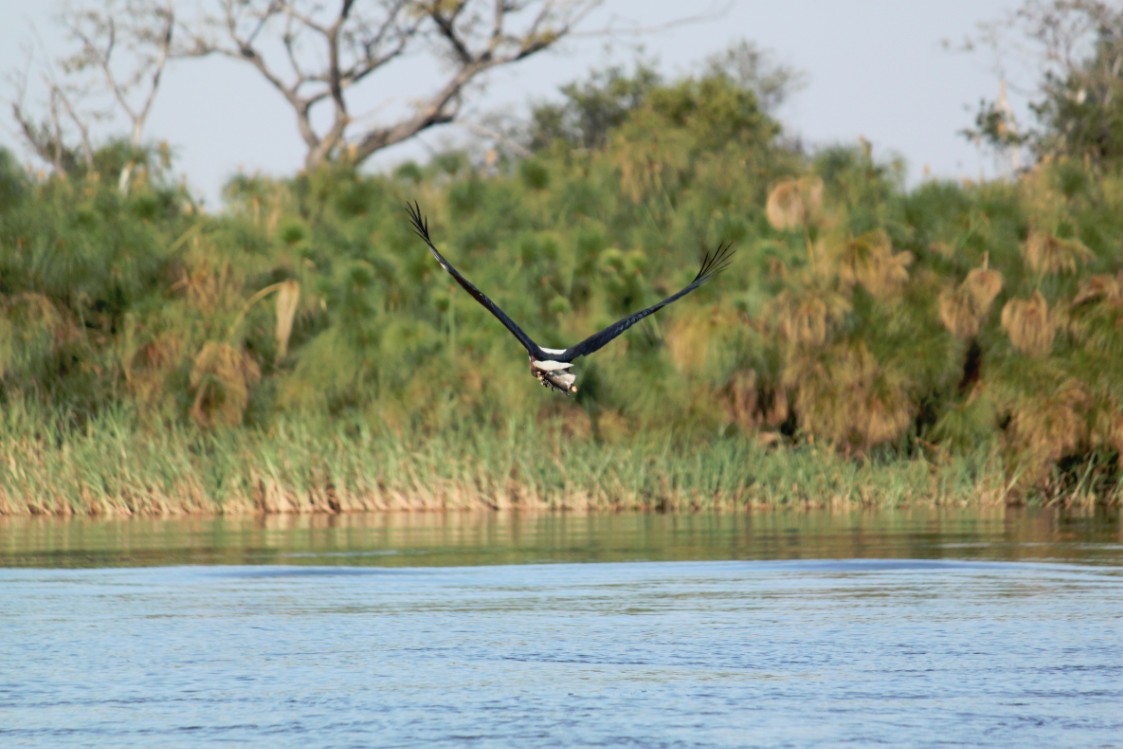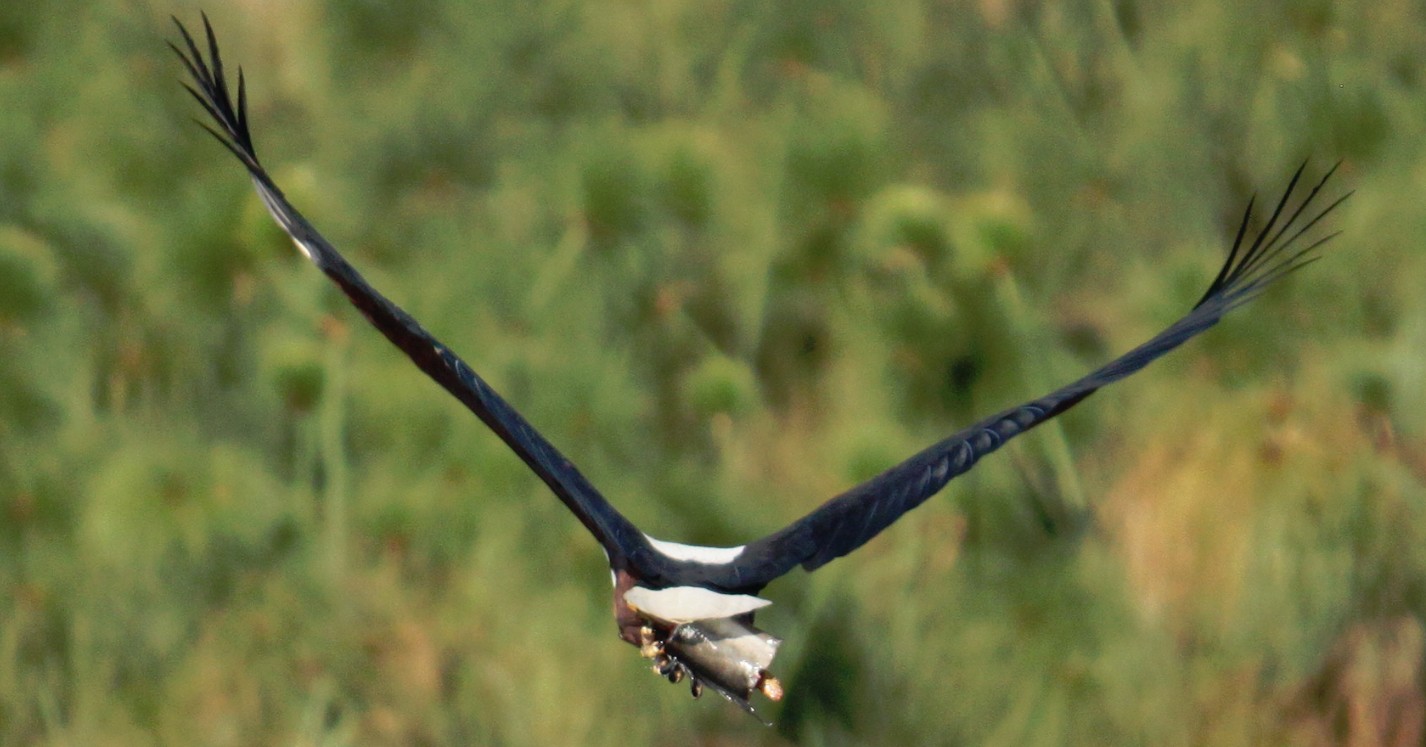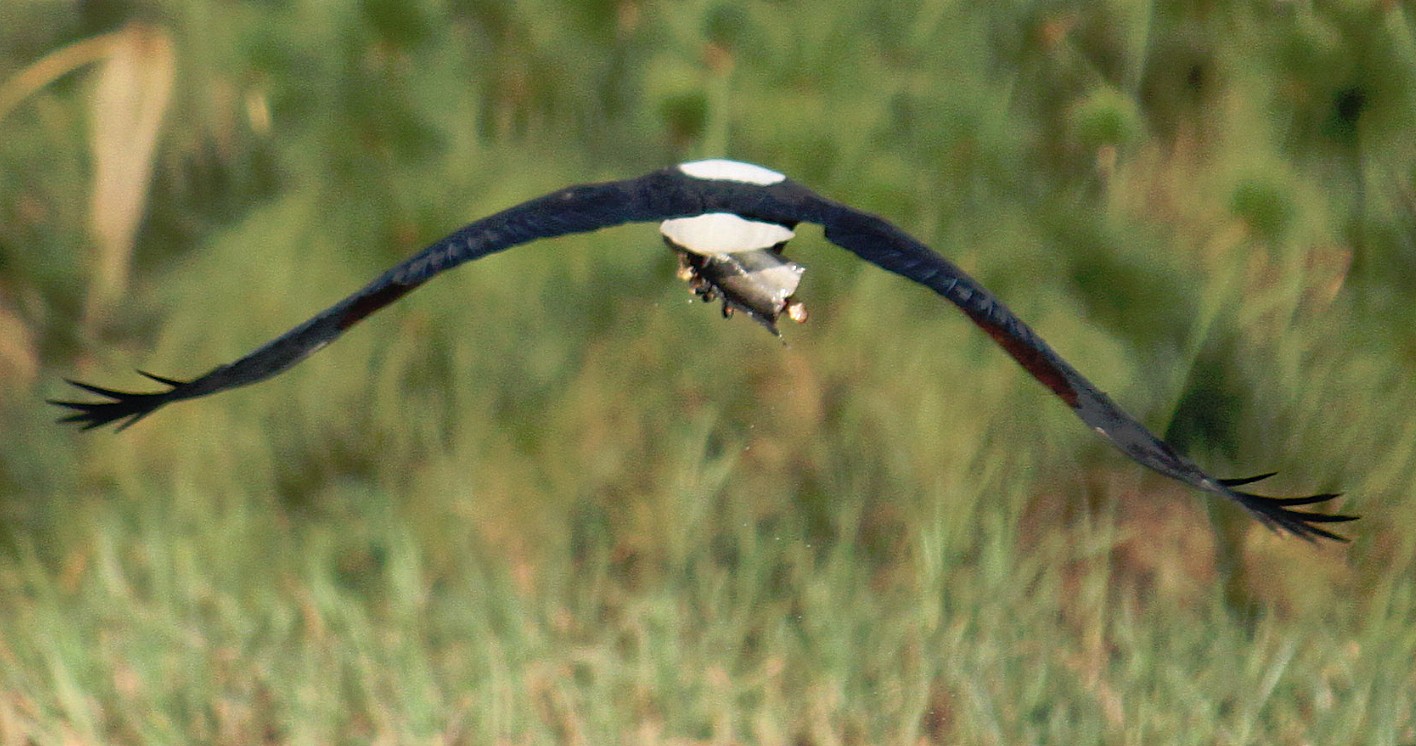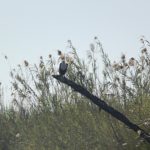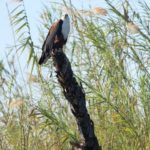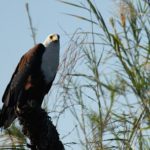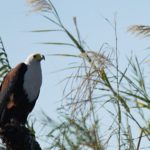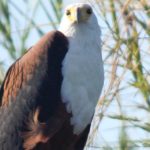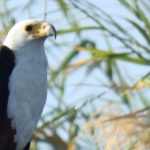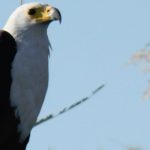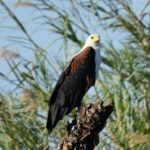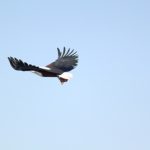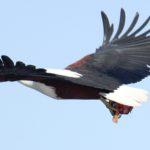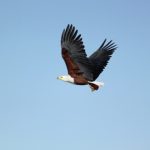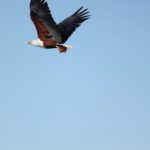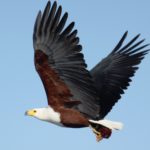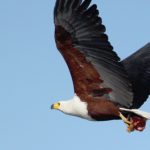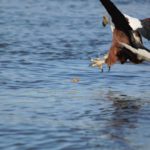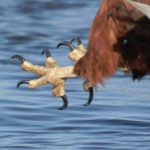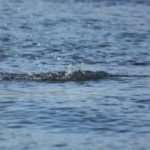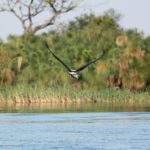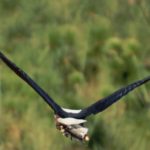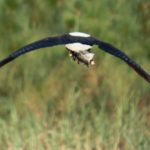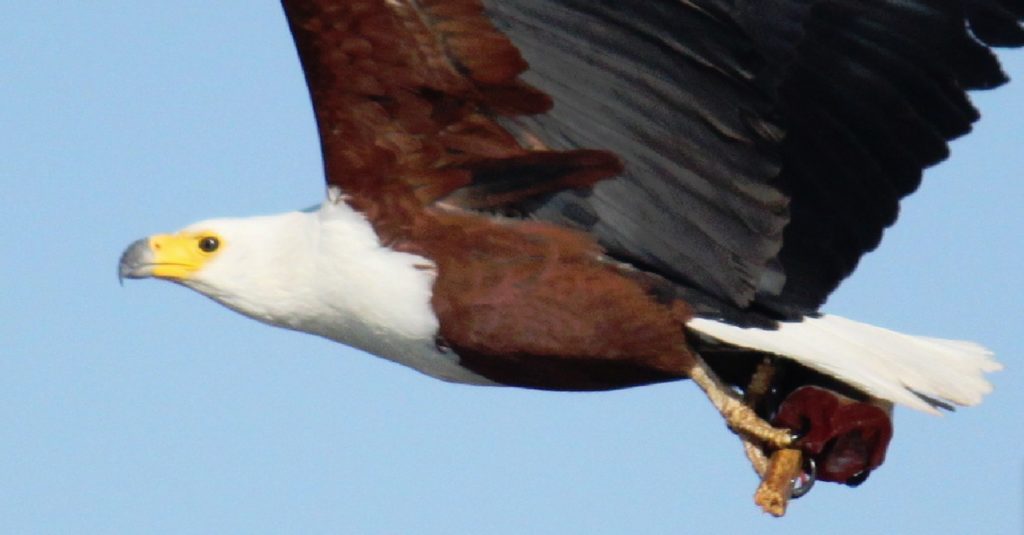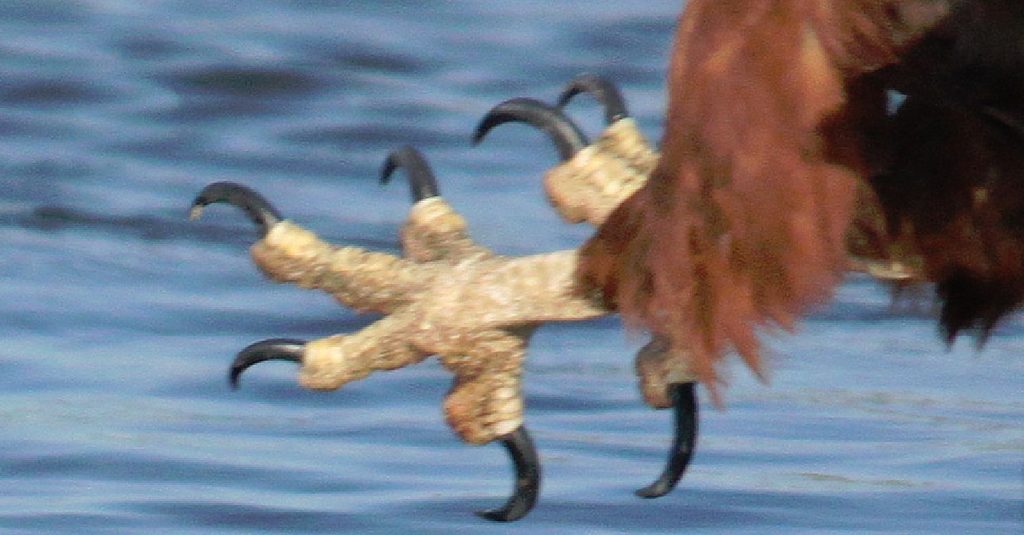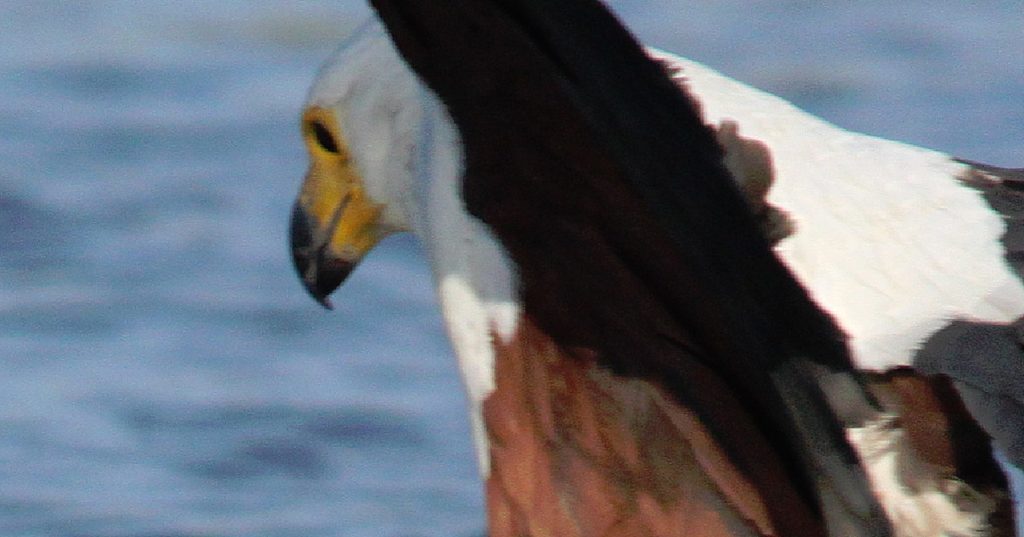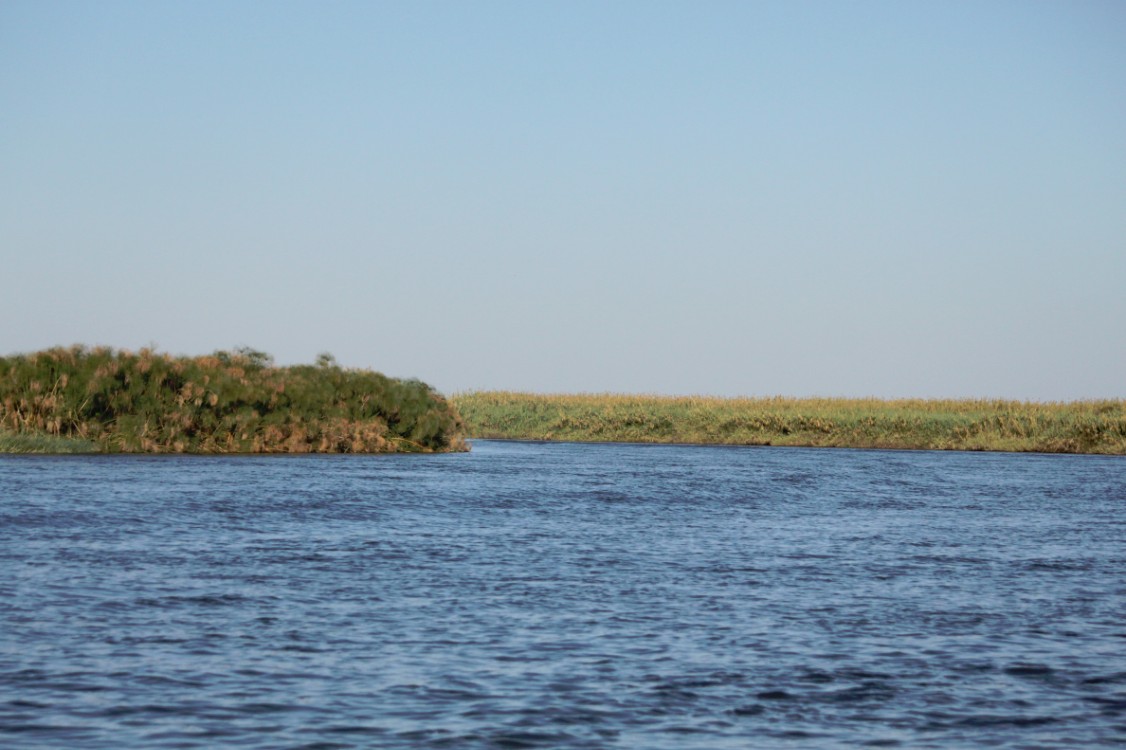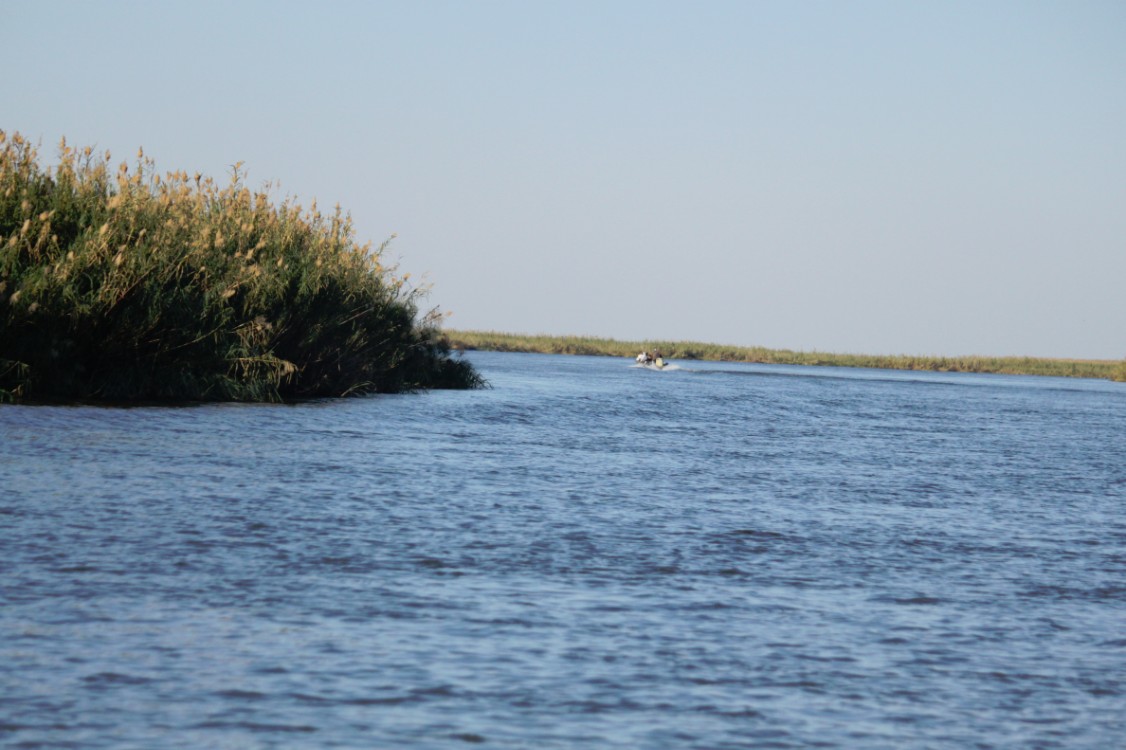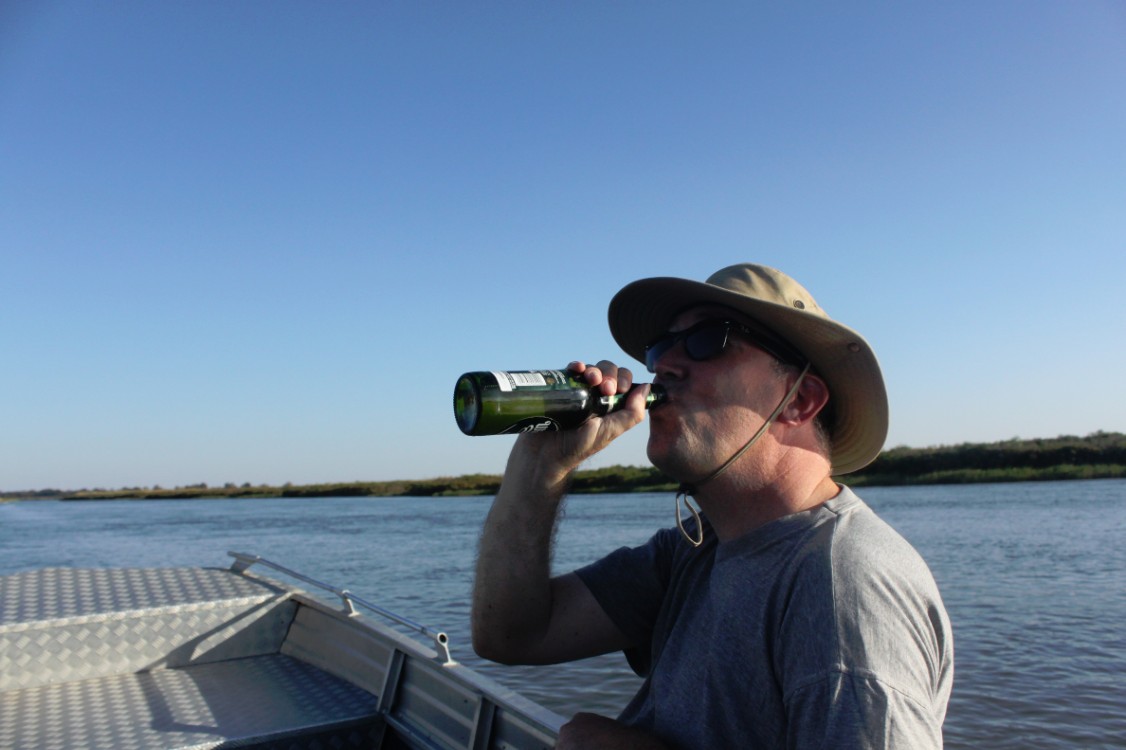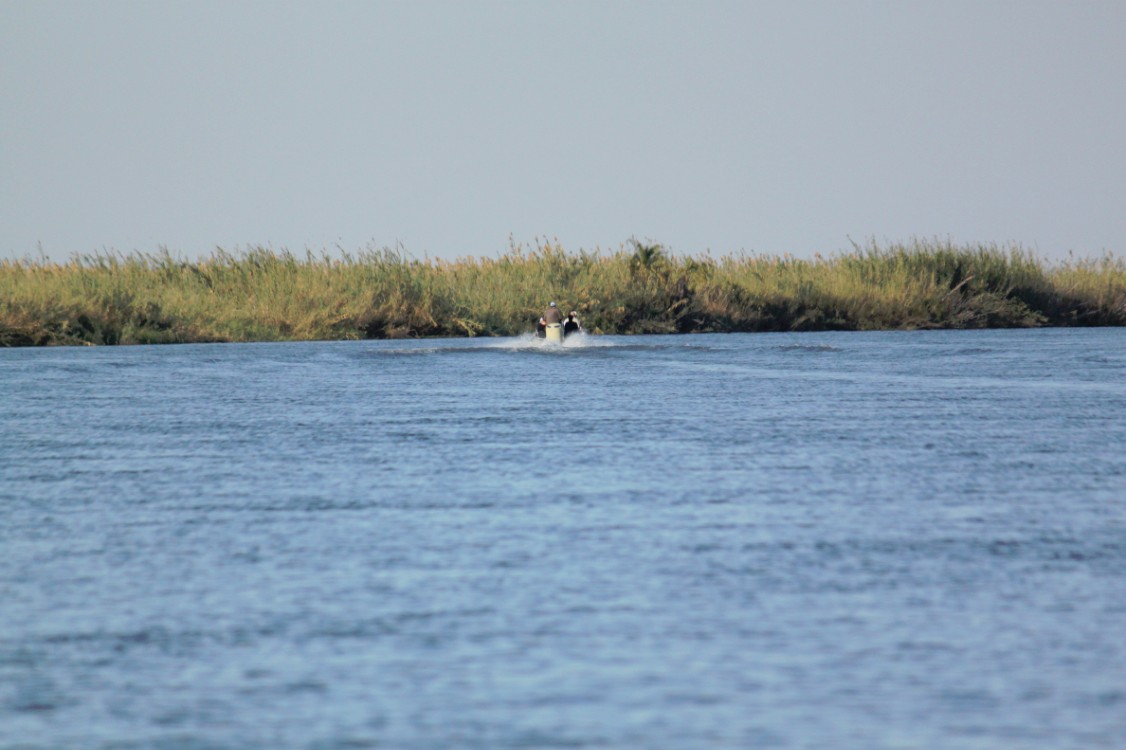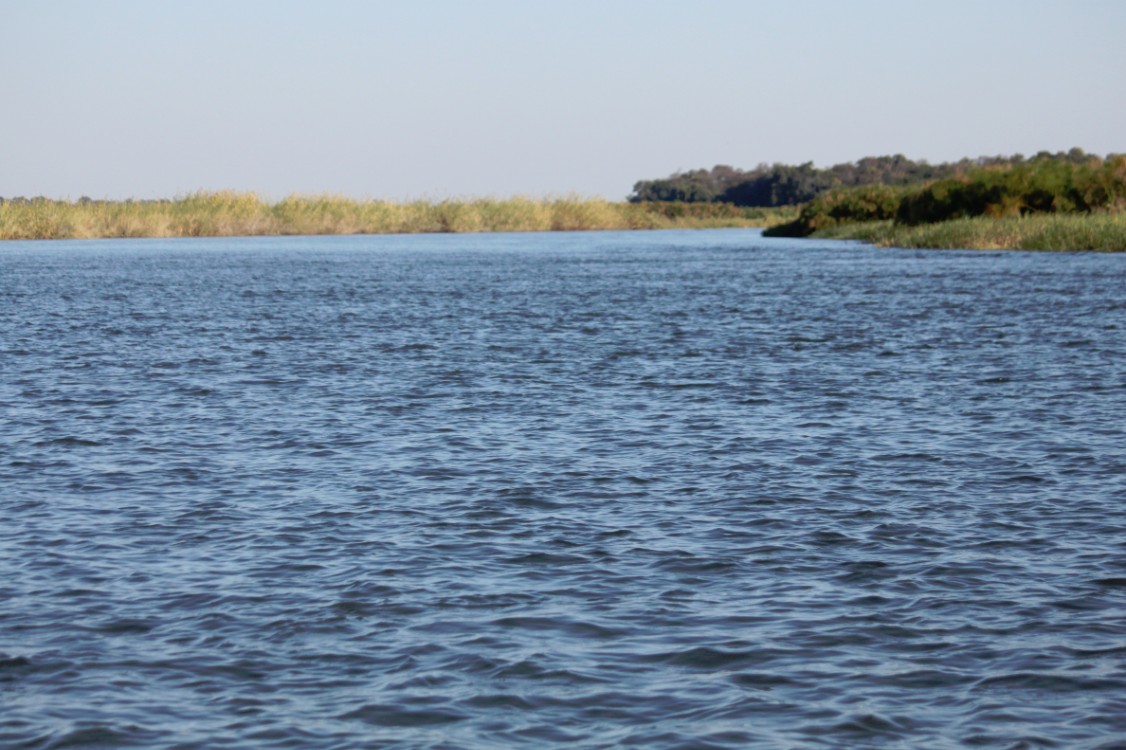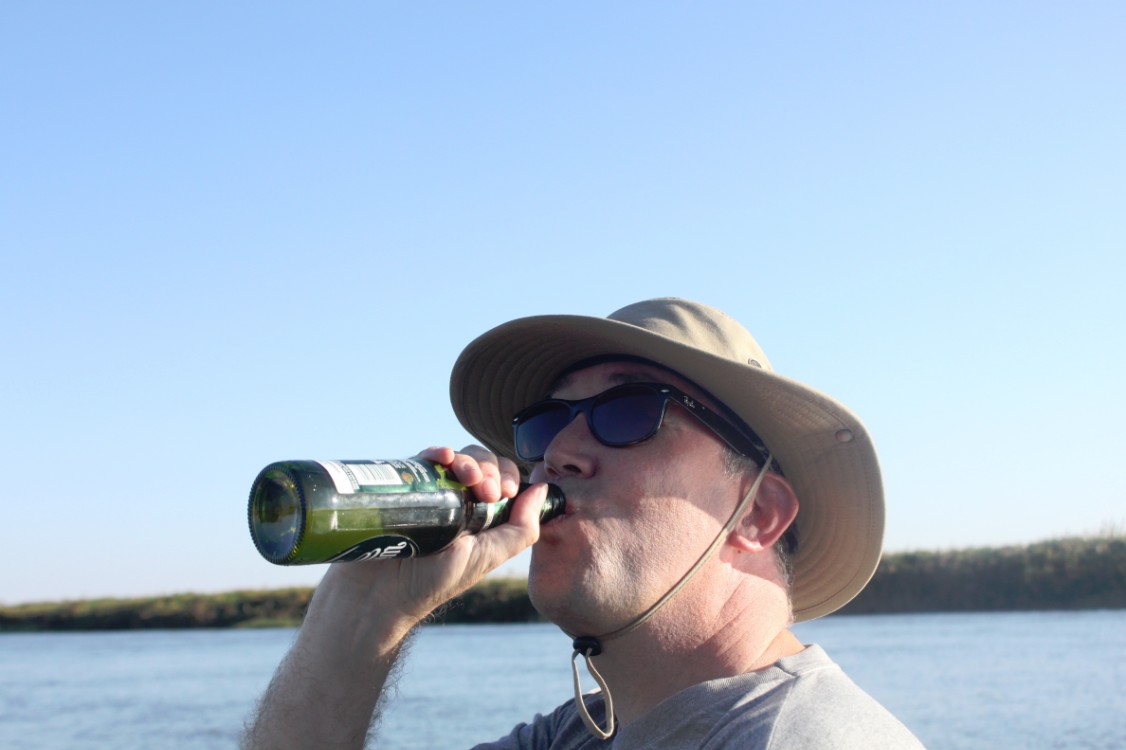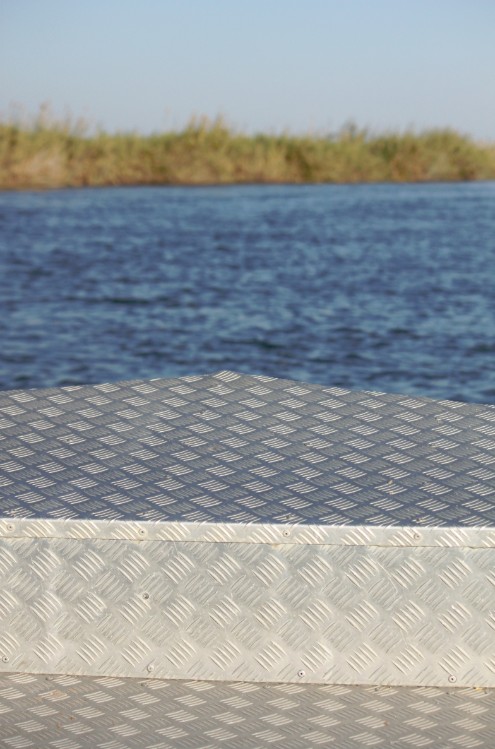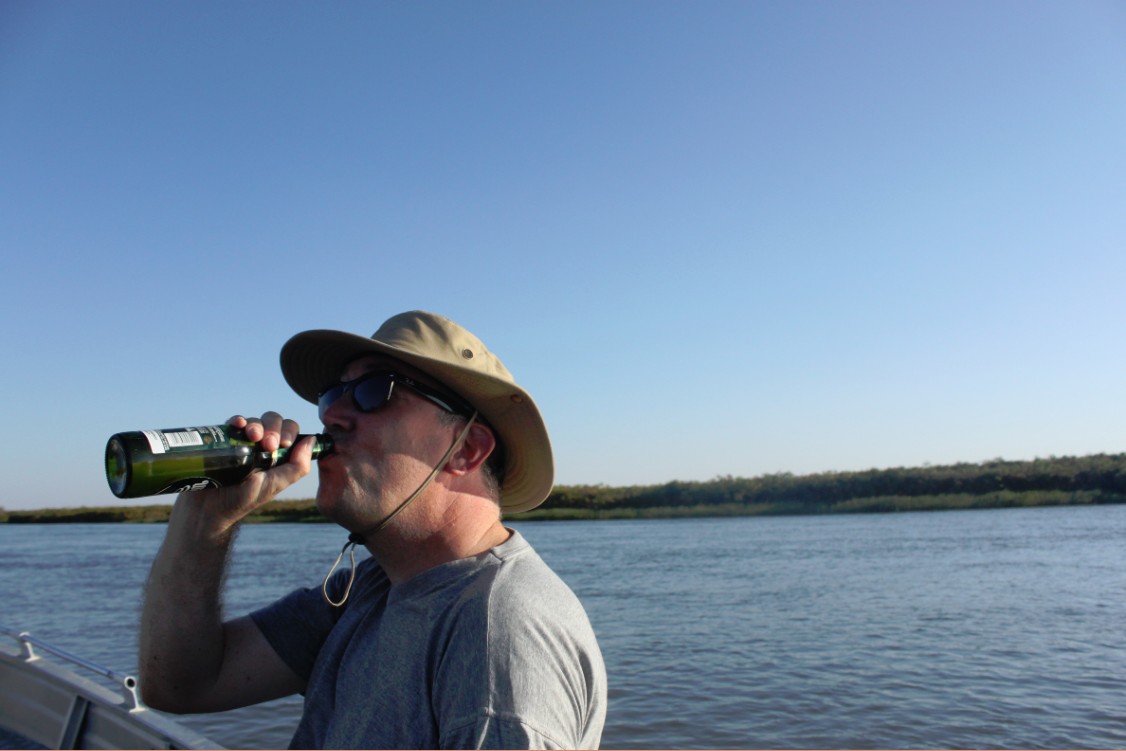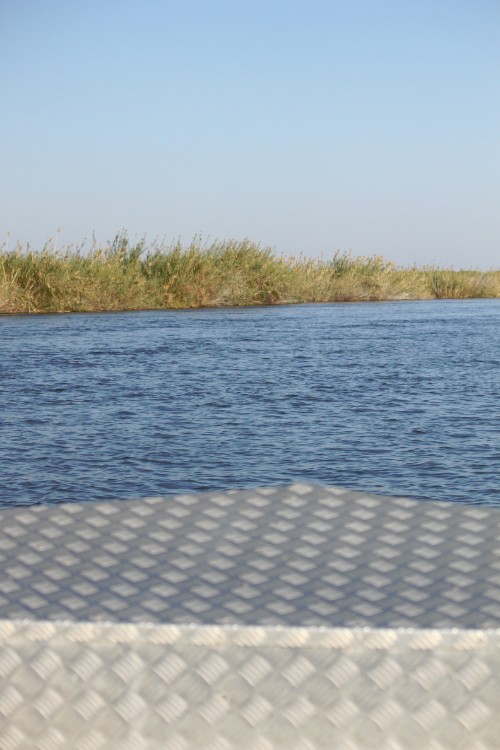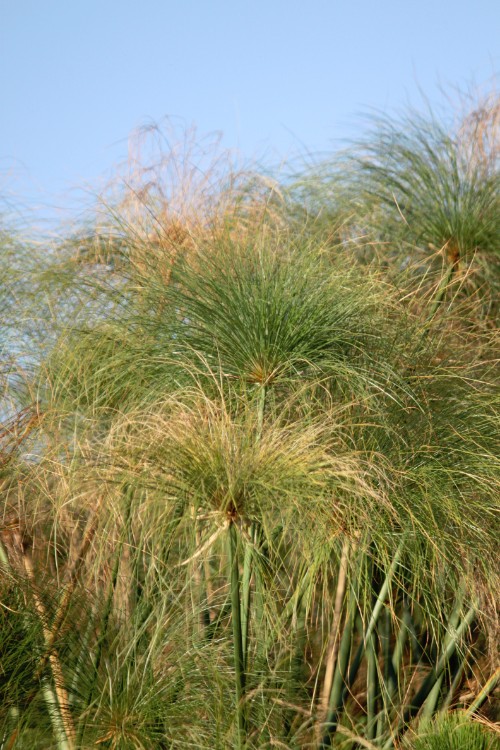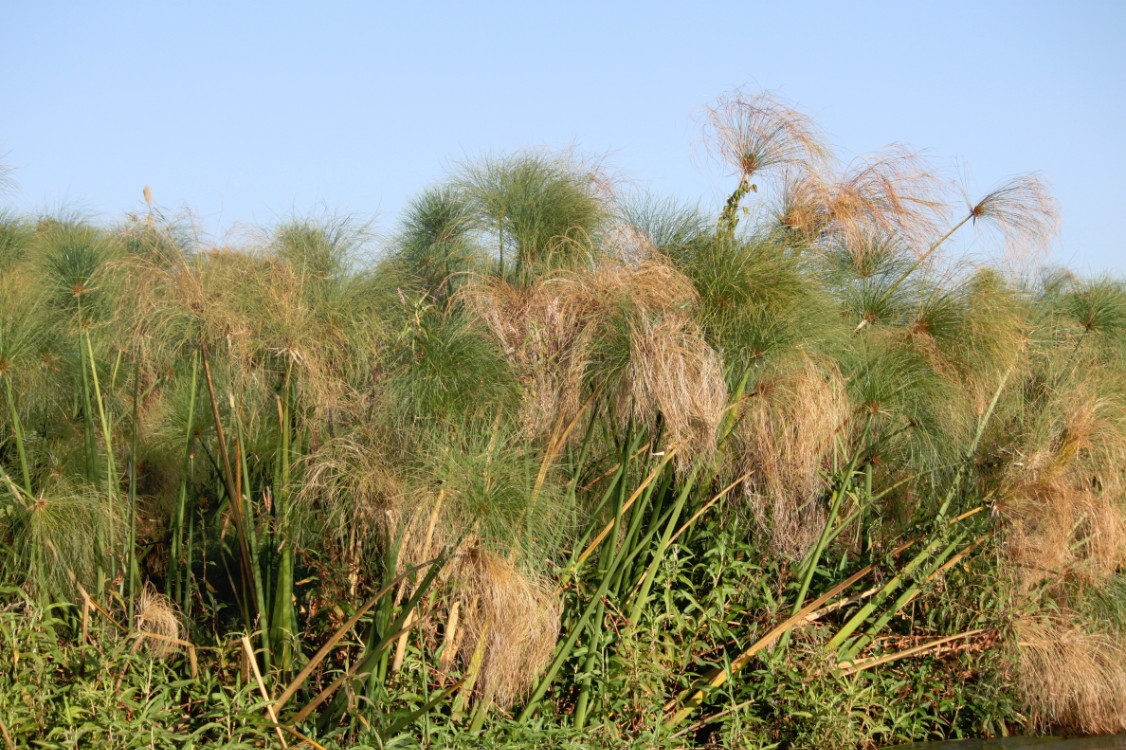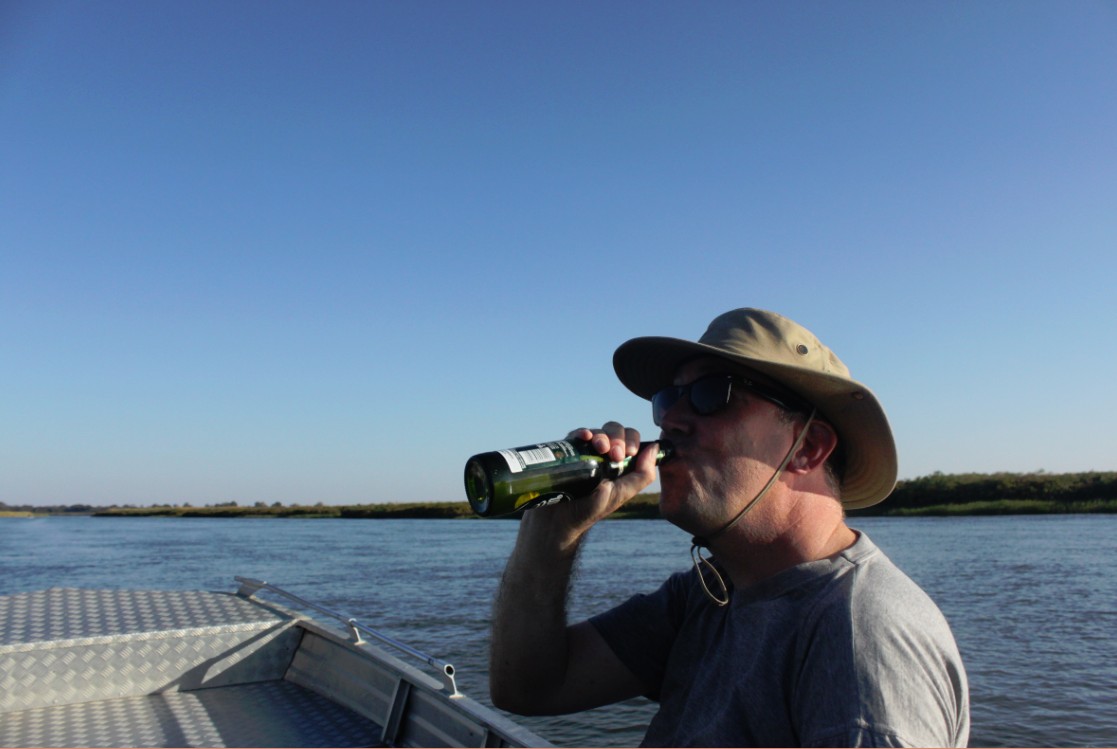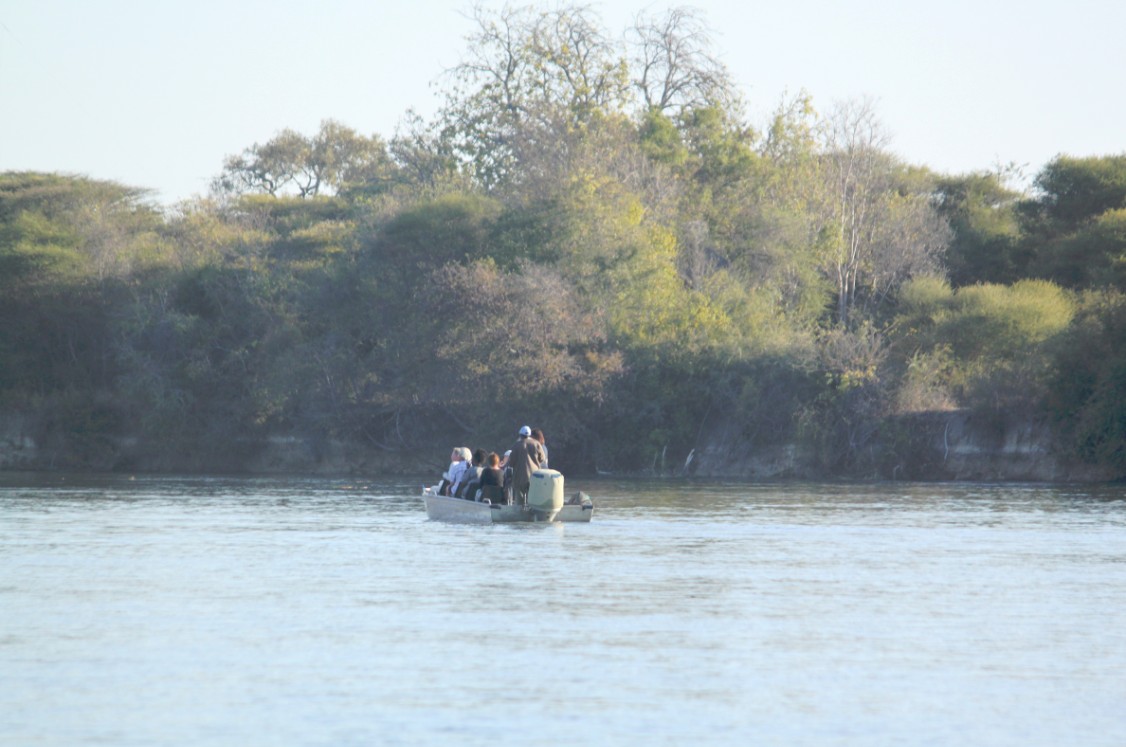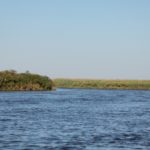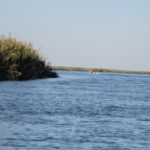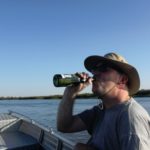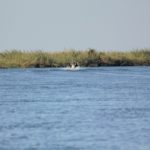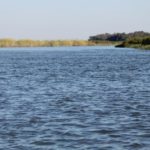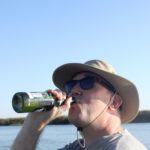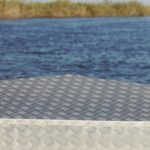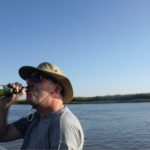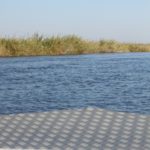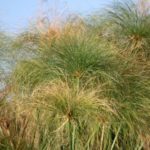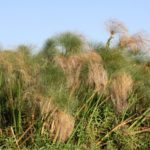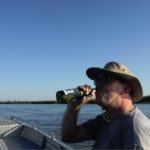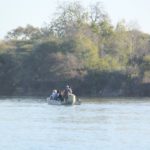1b. Okavango Pan handle (2): Speedboat on the Okavango
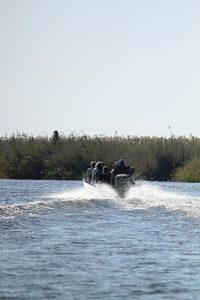 Today The Wandelgek was going deeper in to the Okavango Delta part named the “Pan handle” by speedboat. From satellite images the Delta looks a bit similar to a cooking pan with handle.
Today The Wandelgek was going deeper in to the Okavango Delta part named the “Pan handle” by speedboat. From satellite images the Delta looks a bit similar to a cooking pan with handle.
Okavango Delta
The Okavango Delta (or Okavango Grassland) in Botswana is a very large inland delta formed where the Okavango River reaches a tectonic trough in the central part of the endorheic basin of the Kalahari. All the water reaching the Delta is ultimately evaporated and transpired, and does not flow into any sea or ocean. Each year approximately 11 cubic kilometers of water spreads over the 6,000-15,000 km2 area. Some flood-waters drain into Lake Ngami. The Moremi Game Reserve, a National Park, is on the eastern side of the Delta. The scale and magnificence of the Okavango Delta helped it secure a position as one of the Seven Natural Wonders of Africa, which were officially declared on February 11, 2013 in Arusha, Tanzania. On 22 June 2014, the Okavango Delta became the 1000th site to be officially inscribed on the UNESCO World Heritage List.
The area was once part of Lake Makgadikgadi, an ancient lake that mostly dried up by the early Holocene. Although the Okavango Delta is widely believed to be the world’s largest inland delta, it is not. In Africa alone there are two larger similar geological features: the Sudd on the Nile in South Sudan, and the Inner Niger Delta in Mali.
Geography
Floods
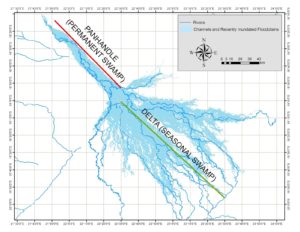 The Okavango is produced by seasonal flooding. The Okavango River drains the summer (January–February) rainfall from the Angola highlands and the surge flows 1,200 kilometres in approximately one month. The waters then spread over the 250 km by 150 km area of the delta over the next four months (March–June). The high temperature of the delta causes rapid transpiration and evaporation, resulting in a cycle of rising and falling water level that was not fully understood until the early 20th century. The flood peaks between June and August, during Botswana’s dry winter months, when the delta swells to three times its permanent size, attracting animals from kilometres around and creating one of Africa’s greatest concentrations of wildlife.
The Okavango is produced by seasonal flooding. The Okavango River drains the summer (January–February) rainfall from the Angola highlands and the surge flows 1,200 kilometres in approximately one month. The waters then spread over the 250 km by 150 km area of the delta over the next four months (March–June). The high temperature of the delta causes rapid transpiration and evaporation, resulting in a cycle of rising and falling water level that was not fully understood until the early 20th century. The flood peaks between June and August, during Botswana’s dry winter months, when the delta swells to three times its permanent size, attracting animals from kilometres around and creating one of Africa’s greatest concentrations of wildlife.
The delta is very flat, with less than 2 metres variation in height across its 15,000 km2.
Where the water goes
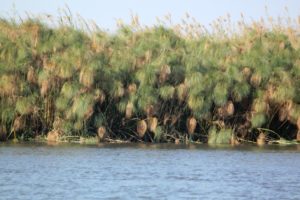 Every year, approximately 11 cubic kilometres (11,000,000,000,000 litres) of water flow into the delta. Approximately 60% is consumed through transpiration by plants, 36% by evaporation, 2% percolates into the aquifer system; and 2% flows into Lake Ngami. This turgid outflow means that the delta is unable to flush out the minerals carried by the river and is liable to become increasingly salty and uninhabitable, but this effect is reduced by the low salt content which collects around the roots of the plants. The low salinity of the water also means that the floods do not greatly enrich the floodplain with nutrients.
Every year, approximately 11 cubic kilometres (11,000,000,000,000 litres) of water flow into the delta. Approximately 60% is consumed through transpiration by plants, 36% by evaporation, 2% percolates into the aquifer system; and 2% flows into Lake Ngami. This turgid outflow means that the delta is unable to flush out the minerals carried by the river and is liable to become increasingly salty and uninhabitable, but this effect is reduced by the low salt content which collects around the roots of the plants. The low salinity of the water also means that the floods do not greatly enrich the floodplain with nutrients.
Salt islands
The agglomeration of salt around plant roots means that many of the thousands of islands have barren white patches in their centre, which have become too salty to support plants, aside from the odd salt resistant palm tree. Trees and grasses grow in sand near the edges of the islands that has yet to become too salty.
Approximately 70% of the islands began as termite mounds (often Macrotermes spp.), where a tree then takes root on the mound of earth.
Chief’s Island
Chief’s Island, the largest island in the delta, was formed by a fault line which uplifted an area over 70 km long and 15 km wide. Historically it was reserved as an exclusive hunting area for the chief. It now provides the core area for much of the resident wildlife when the waters rise.
Wildlife
The Okavango delta is both a permanent and seasonal home to a wide variety of wildlife which is now a popular tourist attraction.
Species include African bush elephant, African buffalo, hippopotamus, lechwe, tsessebe, sitatunga, blue wildebeest, Angolan giraffe, Nile crocodile, Southwest African lion, South African cheetah, African leopard, brown hyena, spotted hyena, springbok, greater kudu, sable antelope, south-central black rhinoceros, southern white rhinoceros, Burchell’s zebra, common warthog and chacma baboon. Notably the endangered Cape wild dog survives within the Okavango Delta, exhibiting one of the richest pack densities in Africa. The delta also includes over 400 species of birds, including African fish eagle, Pel’s fishing owl, crested crane, lilac-breasted roller, hammerkop, ostrich, and sacred ibis.
The majority of the estimated 200,000 large mammals in and around the delta are not year-round residents. They leave with the summer rains to find renewed fields of grass to graze on and trees to browse, then make their way back as winter approaches. Large herds of buffalo and elephant total about 30,000 beasts.
The panhandle by speedboat
The boats could develop huge speed when blasting over the Okavangos waters, but they had flat and they didn’t ly deep in to the water, so it was possible to come very close to the shore. This guaranteed excellent wildlife viewing. Although most of the wildlife existed of birds, I can’t stress enough how impressive and spectacular this abundant birdlife is.
Apart from birds The Wandelgek saw nile croques and nile monitors (huge lizards).
Crocodile
Nile Monitor
The Nile monitor (Varanus niloticus) is a large member of the monitor lizard family (Varanidae) found throughout much of Africa but absent from the west where it is replaced by Varanus stellatus. Other common names include the African small-grain lizard, water leguaan or river leguaan (leguan, leguaan, and likkewaan mean monitor lizard in South African English, and can be used interchangeably).
Pied Kingfisher
Little Egret
The little egret (Egretta garzetta) is a species of small heron in the family Ardeidae. The genus name comes from the Provençal French Aigrette, “egret”, a diminutive of Aigron,” heron”. The species epithet garzetta is from the Italian name for this bird, garzetta or sgarzetta.
It is a white bird with a slender black beak, long black legs and, in the western race, yellow feet. As an aquatic bird, it feeds in shallow water and on land, consuming a variety of small creatures. It breeds colonially, often with other species of water birds, making a platform nest of sticks in a tree, bush or reed bed. A clutch of bluish-green eggs is laid and incubated by both parents. The young fledge at about six weeks of age.
Its breeding distribution is in wetlands in warm temperate to tropical parts of Europe, Africa, Asia, and Australia. In warmer locations, most birds are permanent residents; northern populations, including many European birds, migrate to Africa and southern Asia to over-winter there. The birds may also wander north in late summer after the breeding season, and their tendency to disperse may have assisted in the recent expansion of the bird’s range. At one time common in Western Europe, it was hunted extensively in the 19th century to provide plumes for the decoration of hats and became locally extinct in northwestern Europe and scarce in the south. Around 1950, conservation laws were introduced in southern Europe to protect the species and their numbers began to increase. By the beginning of the 21st century the bird was breeding again in France, the Netherlands, Ireland and Britain. It has also begun to colonise the New World; it was first seen in Barbados in 1954 and first bred there in 1994. The International Union for Conservation of Nature has assessed the bird’s global conservation status as being of “least concern”.
In an overhanging tree at the edge of the river, I saw dozens of Little Egrets and it was completely, breathtakingly insane to see them suddenly take wings and fly over the papyrus reeds…
Cormorrant
Phalacrocoracidae is a family of some 40 species of aquatic birds commonly known as cormorants and shags. Several different classifications of the family have been proposed recently, and the number of genera is disputed. There is no consistent distinction between “cormorants” and “shags”, and these appellations have been assigned to different species randomly.
Cormorants and shags are medium-to-large birds, with body weight in the range of 0.35–5 kilograms (0.77–11.02 lb) and wing span of 45–100 centimetres (18–39 in). The majority of species have dark feathers. The bill is long, thin and hooked. Their feet have webbing between all four toes. All species are fish-eaters, catching the prey by diving from the surface. They are excellent divers, and under water they propel themselves with their feet with help from their wings; some cormorant species have been found to dive as deep as 45 metres. They have relatively short wings due to their need for economical movement underwater, and consequently have the highest flight costs of any bird.
Cormorants nest in colonies around the shore, on trees, islets or cliffs. They are coastal rather than oceanic birds, and some have colonised inland waters – indeed, the original ancestor of cormorants seems to have been a fresh-water bird. They range around the world, except for the central Pacific islands
African Darter
The African darter (Anhinga rufa), sometimes called the snakebird, is a water bird of sub-Saharan Africa and Iraq.
Looking at its long neck and its small head and sharp pointy beak, seemingly extending that neck I immediately understood the origin of the name Snakebird….
African Fish Eagle
One of the highlights of the tour was something I had seen before in Kenya on Lake Baringo. Using a high note whistle, an African Fish Eagle is alerted on our presence. A fish is waved above head so the eagle sees it and then thrown in the water. The eagle ascends in to the sky and the photographers direct they’re telelenses towards the floating fish that has a cork in its stomach. Then the eagle drops itself on the fish and ascends again towards a tree on the shore to digest its freshly caught prey. And this was the result of my first attempt at photographing that eagles strike…
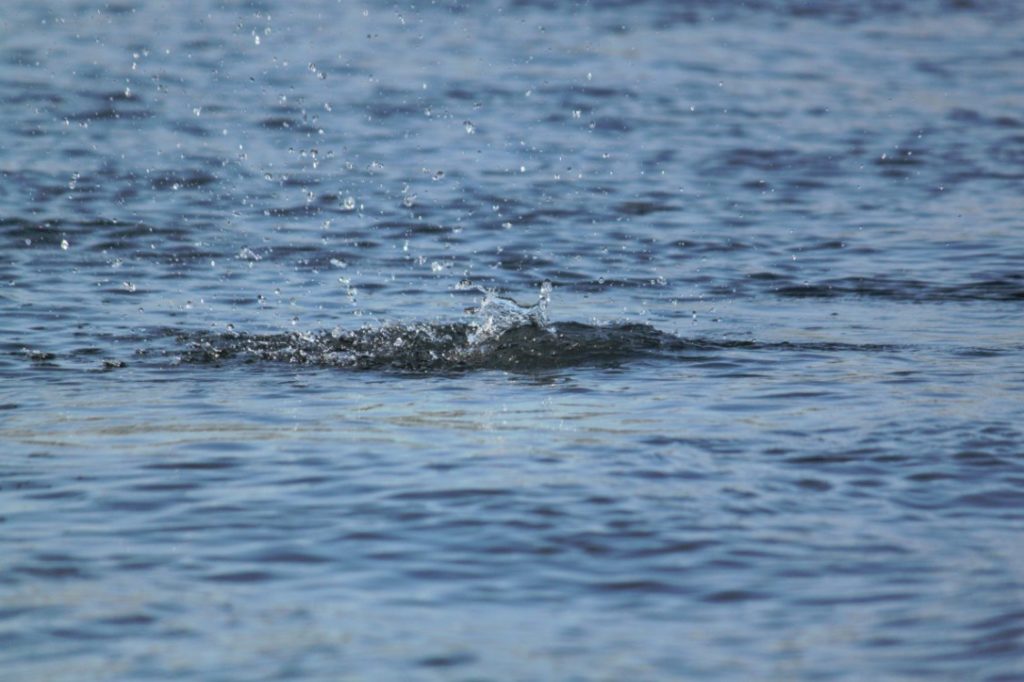
And another complete failure… or not? No this was the third attempt long after the first unsuccessful attempt and right after the second very successful attempt…
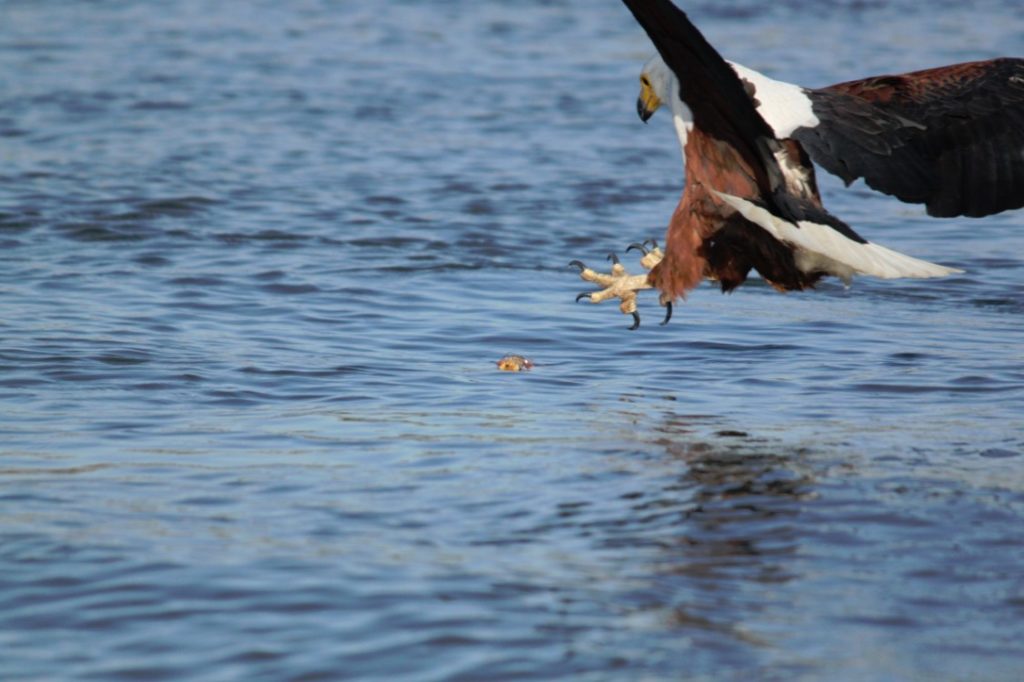
I had asked the thrower of the fish whether he new and could perform the trick that I had learned in Kenya to make a succesfull photograph of an African Fish Eagle striking at its prey. While all photographers focus on the fish, the fish thrower watches the eagle and counts..ONE … TWO … THREE … CLICK… and the photographers just have to click the photo button… and … it worked perfectly! 🙂
Well … this had been a completely awesome day and I still think that some of the pics I took from the African Fish Eagle and from the Snakebird (especially the silhouetted one) are arguably one of my best photographic works yet.
In the end a refreshing beer…

